Blog
German travel photography tips: language, transport, rules
26th August 2022 - 0 comments
26th August 2022 - 0 comments
A picture trip to Germany is being planned. I have a few suggestions for you after spending three years in Germany and traveling to a lot of its cities. They don't discuss the finest shooting sites or what equipment to bring for photography, though. They have a more pragmatic disposition.
2014 Review
23rd December 2014 - 0 comments
23rd December 2014 - 0 comments
Right, most folks seem to be setting out which photographs they have taken in 2014 are their favourites and whilst I intend to set out what I think are my best (or at least favourite) images I have shot this year, last year I set out my top 10 images by other folks I know and interact with. That was quite well received and so I’ve decided to do it again.
I think as photographers it’s all too easy to eye everyone else as competition, and although competition is good for the soul, indeed it is how we evolve, I think it is important for us to reflect on and draw inspiration from others. Each of these photographs has inspired me at some point and in some way this year. It is not a popularity contest, and anyone missing from the list should (I hope) not be offended.
So here goes, in no particular order…
2014 - 10 Favourite Images by other Photographers (click the headers to view the image)
1. Tapestries of Thirlmere – The Sundial by Colin Bell
There are a number of Colin’s Thirlmere project images I could choose for this, they epitomise the types of ‘lakeside’ images that I would like to take. Wonderfully delicate, authentic, true type images, full of atmosphere. Of course, concentrating on one area for a project is going to concentrate the mind too, and Colin is really reaping the rewards here. That is not to say the rest of his portfolio is of a lesser standard, it is not, it is just that this project, for me, stands out. In this particular image the processing is so so so subtle, and it is perhaps the most ‘film-like’ digital image I have seen this year. Because of that it has an organic quality to it. It is beautiful, I have no other words for it.
2. Fighting for air in a sea of snow by Lizzie Shepherd
Back in March Lizzie visited Norway to do some langlauf (cross-country) skiing, of all things. What she came back with was a supreme set of travel images from the frozen wastes of the Norwegian winter. Herds of Reindeer stampeding across the landscape, wonderfully evocative mountains blanketed in think snow, and the odd little gem like this one. I’m a big admirer of Lizzie’s work, she is very much a ‘what you see is what you get’ shooter, she never seems to embellish her work with over-processing, even though often it could quite stand up to it. If I had to use an analogy, if I thought most photographers were oil painters, Lizzie would specialise in watercolours, it is often a more delicate image that she takes. I often feel refreshed when she posts a new image, it genuinely has that effect on me. In this image it would have been all too easy to overexpose the snow, I see this a lot, effectively you then have a lone tree ‘floating’ in the image (and it’s little brother peeking up), but no, Lizzie has exposed properly (or at least processed) for the snow, it is full of rich texture. It’s a wonderfully detailed image that I’d love to see printed.
3. Nebula by Terry Gibbins
Terry has changed direction a little this year. Being less concerned with wider shots he has begun to concentrate on establishing a connection with the landscape around him, he has become more intimate. He has also kicked off a series projects, one being ‘Carriage’ where he utilises his job as a London Black Cab driver to capture the faces of some of his punters, occasionally some are more recognisable than most. Another project he has been developing slowly is ‘Abandonment’ which is a study of the derelict and unmaintained. The shot that really caught my eye out of this excellent series is ‘Nebula’. It is a stunning abstract and one really struggles to understand what it is, it really does look like some fantastic nebula in the far reaches of space…but once you know what it is, and after you’ve slapped your head and shouted ‘doh’ like Homer Simpson, you’ll soon be wanting to recreate it. Very creative.
4. Woodland Wanders by Mark Littlejohn
What I love about photography and social media is the constant discovery of new photographers and their work. Before Facebook and Twitter and even Instagram, one had to rely on published works or magazines or even exhibitions to discover talent. I had seen Mark’s name around a little before this year and gradually over time you catch on to what others and who others are talking about. I recall becoming more familiar with Mark and his work probably around the middle of the year and to be honest I don’t really know how it took that long, he has quite a following, and it’s easy to see why. Mark lives in Penrith on the edge of the Lake District which is perfect for him as it has helped him create a fantastic portfolio of Lakeland imagery. However, he shot to fame in November of this year when he was announced as the Take a View ‘Landscape Photographer of the Year’, one of the most prestigious titles in UK photography for his image from Glencoe, A Beginning and an End. It would be fair to say this image has divided opinion. A lot of folk out there think the winner of the title should be a huge vista, shot at dawn with blazing colour in the sky. The Judges have been brave this year in selecting a more intimate abstract image. I’ve said it before; it has bags of atmosphere, which is not an easy thing to accomplish in a 2D digital image. However, although I love this image, it is not my favourite of Mark’s. That (small) honour goes instead to Woodland Wanders. This image was displayed alongside his winning Glencoe image at the On Landscape ‘Meeting of Minds’ conference in all its printed glory. I absolutely adore the processing here, it is so restrained it’s almost flat on it’s back. There are no amazing shafts of sunlight, there is no high contrast, but it is full of texture and detail. The colour palette is glorious and warm, I almost want to lay down on that grass and have a snooze. I doubt a painter could paint a painting that could look more like a painting (tongue twister) than this image. There are no other words I can use to describe it, except wonderful.
5. Eaton Park Treeline by Matthew Dartford
What can I say about this image except it is superb, simple but superb. Clearly whoever placed floodlights in a park was onto something, add a little fog to the recipe and there you have a wonderful backlit tree silhouette image. The panoramic format really emphasis the casting of the shadows across the frame and Matthew’s choice of processing style rather than straight mono (as he says) is spot on. Dark, sinister but also stunningly beautiful. This deserves to do well in any competition it is entered into .
6. Room with a view by Paul Shears
Taken during the Open House 2014 event in the Leadenhall Building (an event where the public can access buildings throughout London that are otherwise off limits) Paul has used his ultra wide angle lens to great effect. I love the separation here. Clearly the majority of joe public are more interested in the fine view (no doubt) than the internal structure/architecture of this building, perhaps moving around the floor in single file, keeping to the windows. Paul has stepped back from that to make the most of the geometry that is otherwise invisible without such a wide lens. This reminded me of the sketches and archival images of buildings that I encountered during my building degree, studying form and factor within architecture, etc. The empty boardroom desk and chairs as the centre-piece is perfect, controlling the image like corporations controlling us without us really noticing…just like the oblivious occupants of the room.
7. Refuge by Russ Barnes
Let me say this now, I don’t like Infra-Red landscapes. There I’ve said it. It’s a personal thing. I understand they have a place in photography, they are just not my cup of tea. So, why have I chosen an Infra-Red image for my top 10 of 2014? It’s bloody quirky, that’s why. IR allows you to shoot right through the day, I can understand the appeal of that, and given the positioning of the shadow, in the middle of June (and no exif data), as an educated guess I would say this was shot at midday…and on Exmoor, not the Serengeti. Of course, if it were the Serengeti I’d expect those two sheep to be lions not just lyin. That is why this image works for me, it looks like Africa…with sheep. Awesome. Clever. No wonder it was commended in the Landscape Photographer of the Year competition this year, I doubt there was another entry anything like it. I’d also just like to add that a number of Russ’ images could have made this list, his output this year has, in my humble opinion, been outstanding. Not one to get too carried away with what equipment he shoots with, as long as it has a Nikon badge on it, he has taken the humblebrag to a whole new level, so he deserves commending for that too ;)
8. All Blood Runs Red (ii) by Valda Bailey
Valda continues to show incredible creativity with her multiple exposure photography and this is most evident in her interpretation of one of the most moving public displays of ‘art’ in recent times. The year 2014 marked the 100th anniversary of the start of The Great War and artists Paul Cummins and Tom Piper set about bringing to life an installation of 888,246 ceramic poppies (one each for every British military fatality during the war) called ‘Blood Swept Lands and Seas of Red’ at the Tower of London. Many people will now be familiar with this art-piece and I have seen many many many photos over the last months, some of which were excellent, but it was Valda’s interpretation created in the early days of installation that really caught my interest. Every now and again I find myself returning to these images and whenever I think of this memorial to the fallen, it is Valda’s haunting depiction that I think manages most to cross the divide between art and the horror of the trenches so many years ago. All Blood Runs Red (ii) is perhaps my favourite image of the whole set, but honestly it’s hard to choose.
9. Too Blue by Lee Acaster
Anyone who follows me knows I’m not a fan of Bluebell images, I do get some ribbing for it. Perhaps it is because I’ve never attempted to take images of them myself, who knows. What I do know is that when Spring arrives every year Flickr, Twitter and every other form of social media seems to become saturated with images of the damned things. Thing is, I do like Bluebells when I see them on walks, I just don’t like Bluebell images, however good they are, it’s the rules. Trouble is, rules are there to be broken, and that is exactly what I am prepared to do here. Lee seems to have burst into my consciousness relatively recently. Possibly this has something to do with his weekly domination of the WexMondays competition on Twitter. Anyway, I remembered seeing this image somewhere and have only recently found it again on Flickr, much to my delight. I really love the the extremely shallow depth of field here and the rather intense side lighting. Surprisingly the light on the bluebells in focus isn’t as warm as I would expect, suggesting some desaturation (very de-rigor these days) or selective colour temp adjustment. Whatever Lee has done, I like the effect, it really adds some punch where it counts whilst the rest of the image remains soft and dreamlike.
10. Elgol Ebb by Stewart Smith
I’d consider the comp of this image to be slightly risky, let me explain. Most folks have seen images of Skye’s Black Cuillin taken from Elgol, it is almost a mecca for any half serious landscaper, and so almost everyone will be familiar with the scene. The mountains ARE the subject, the foreground is almost incidental. Of course, anyone who does go there does search for a different foreground to the last photographer (for the most part), but ultimately the aim is to shoot the vista. So, faced with great light and changeable conditions that would no doubt produce a stunning image of the whole mountain-scape, what does Stewart do? He cuts half of it off! By doing so he really is making the foreground the interest here. Of course we still get to see the magnificence of Sgurr Nan Gillean (great little scramble up there by the way…not for the faint of heart), the Black Cuillin’s northernmost peak, in the far background. Now our attention is mostly drawn to the foreground Stewart has chosen some wonderfully weathered and characterful rocks. The exposure is longer than I would typically look for (I’d prefer something around 2 seconds to retain some water texture), but in this image the longer exposure really works, and thankfully it isn’t long enough to turn such a lovely coloured patch of water to milk. When I inevitably go back to shoot Elgol, this is one of the images in my head that I will endeavour to pay homage to in some way.
So, there you go, my 10 favourite images from 2014 by folks I know and interact with on social media. This was a hard list to put together. This year I have broadened my outlook and so the possible candidates has grown significantly. There are many fine images that have not made this list, by established names and people new to the scene, it does not seem to matter in terms of quality, whether Professional or Enthusiast, whether that shoot Nikon, Olympus, Canon or Fuji, in fact I care so little about that I hardly ever look to see what camera body or lens has been used. Of course at 1024 pixels and 72 dpi on the PC/Mac screen, they all look the same anyway. Things change a little once you get into printing of course…
2014 - The Year of the Print
This year was declared by some as the ‘Year of the Print’. In fact there was an exhibition at The Mall Galleries in London called as such. I did not go, I did not have the time, I wished I could have though. This year was also the first time I’d seen any of my work in print, at the Connected 2014 exhibition at Patchings. A collaboration exhibition of many photographers, this was a real eye opener for me and was the final piece of the jigsaw that made me purchase my own printer. The purchase did not go down well with the wife, she’d have preferred I’d spent the money on re-plastering the living room, but the money used was a by-product of another decision taken earlier in the year to change my camera from a Canon 5DII to Fuji (you can read about that here). The simple issue was, why am I taking all of these photos and investing so much time if all I was going to do was share them in tiny jpegs online? I needed to complete the process by printing.
Now, I have to tell you, creating a print is thrilling (well not THAT thrilling). There is something about seeing your work in print that finally makes you understand what beauty you are able to capture/create with your camera, I can’t describe it any better. Images that get a cursory glance on a PC screen suddenly spring to life in print and I can look at them for ages. I’ve heard it said by many before and I’ll reiterate, we should all be printing.
I love this process so much I’ve even started offering my prints for sale, all I need now is for someone to actually buy one, I fear that is the hardest part, lol!
2014 – A year of travel
It would be fair to say I’ve not been able to get up many hills this year and when I have the weather has been diabolical. It would also be fair to say I’ve been busy in other aspects to compensate. Back in February I visited India for the first time, what an amazing country. I had no idea it was so colourful. I was only there a week but it was enough for me to develop a desire to go back again, next time to venture further than the Golden Triangle. You can see some images here and a more extensive set of images on Behance here.
Once again in June I was fortunate enough to go to Glastonbury Festival. In previous years I spent a lot of time photographing stills whilst there, but this year, utilising the burst mode on my Fuji X-Pro1, I captured over 3000 images in a very raw burst fashion. The results enabled me to compile this video. It’s a bit jumpy as I was experimenting, but it did allow me to relax into the event a little better, rather than spend the time looking for compositions or missing bands to catch the best light elsewhere. I’m going again in 2015…might take a tripod though, some folks complained about feeling sick whilst watching it, oops.
I also was lucky enough to visit Iceland on an Alex Nail hiking workshop. The was a week long excursion along the Laugavegur trail, crisscrossing the actual trail to wild camp on extinct volcanoes and photograph the magnificently varied landscape. Carrying all we needed for a week in the wilderness, it was an exhausting experience, but absolutely fantastic. I never dreamed I would return with so many images. Enough images in fact, that I was also able to make a video out of some of the stills. Here it is if you haven’t seen it before. The images I came back with can be seen here or again, a wider selection on Behance here.
Plans for 2015 are not concrete yet, we’ll have to see what the Credit Card bill is like once Santa has made his deliveries.
2014 – Favourite images made by…Me
This is a short list, with no explanation given, I prefer not to blow my own trumpet and say I was considering the juxtaposition of the two main elements in the image and the relationship between earth and sky, etc ,etc, etc. What a load of crap. I see something that looks nice or stands out and I shoot it, simples. These are in order too…
1. Iceland – End of Time
You can read about how this image came to be here.
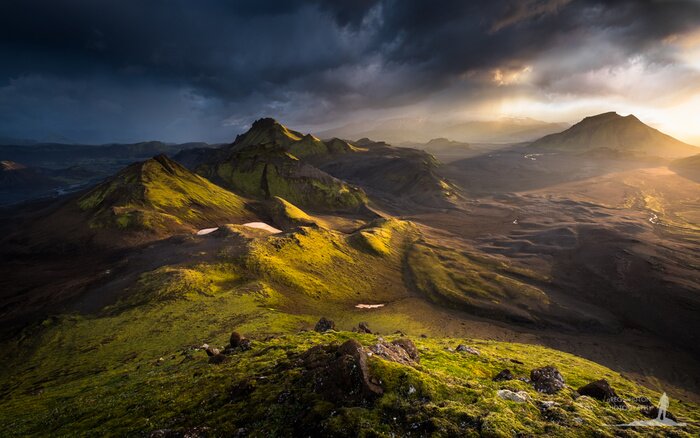
2. Patriot
Shot this at Warwick Castle, a bit of trickery in Lightroom and there you go. Not a landscape, but I like it.
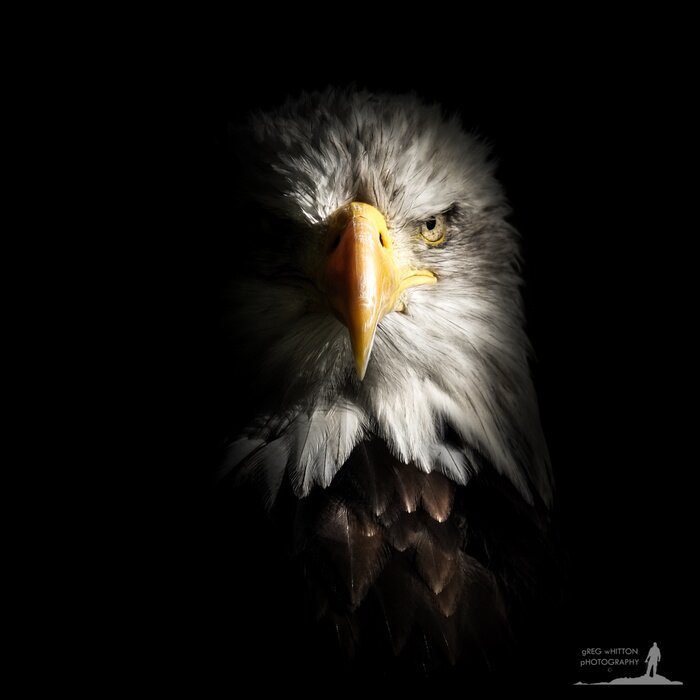
3. Union Sunset
Didn’t know this place existed, walked into a café, saw a pic, worked out the location on an OS map in 30 seconds, at location 15 minutes later. 30 mins of waiting and…boom, Golden light. Wish all photos were that easy.
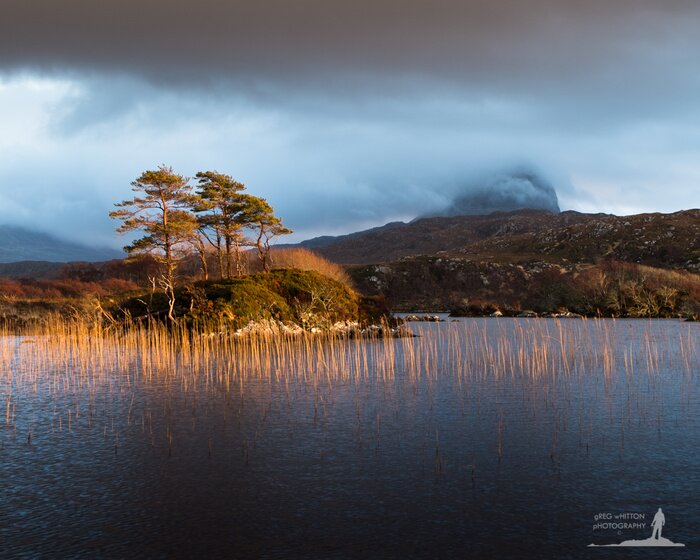
Anyways, that’s it. 2014 was a good year photographically I think, wonder what will happen in 2015…
I think as photographers it’s all too easy to eye everyone else as competition, and although competition is good for the soul, indeed it is how we evolve, I think it is important for us to reflect on and draw inspiration from others. Each of these photographs has inspired me at some point and in some way this year. It is not a popularity contest, and anyone missing from the list should (I hope) not be offended.
So here goes, in no particular order…
2014 - 10 Favourite Images by other Photographers (click the headers to view the image)
1. Tapestries of Thirlmere – The Sundial by Colin Bell
There are a number of Colin’s Thirlmere project images I could choose for this, they epitomise the types of ‘lakeside’ images that I would like to take. Wonderfully delicate, authentic, true type images, full of atmosphere. Of course, concentrating on one area for a project is going to concentrate the mind too, and Colin is really reaping the rewards here. That is not to say the rest of his portfolio is of a lesser standard, it is not, it is just that this project, for me, stands out. In this particular image the processing is so so so subtle, and it is perhaps the most ‘film-like’ digital image I have seen this year. Because of that it has an organic quality to it. It is beautiful, I have no other words for it.
2. Fighting for air in a sea of snow by Lizzie Shepherd
Back in March Lizzie visited Norway to do some langlauf (cross-country) skiing, of all things. What she came back with was a supreme set of travel images from the frozen wastes of the Norwegian winter. Herds of Reindeer stampeding across the landscape, wonderfully evocative mountains blanketed in think snow, and the odd little gem like this one. I’m a big admirer of Lizzie’s work, she is very much a ‘what you see is what you get’ shooter, she never seems to embellish her work with over-processing, even though often it could quite stand up to it. If I had to use an analogy, if I thought most photographers were oil painters, Lizzie would specialise in watercolours, it is often a more delicate image that she takes. I often feel refreshed when she posts a new image, it genuinely has that effect on me. In this image it would have been all too easy to overexpose the snow, I see this a lot, effectively you then have a lone tree ‘floating’ in the image (and it’s little brother peeking up), but no, Lizzie has exposed properly (or at least processed) for the snow, it is full of rich texture. It’s a wonderfully detailed image that I’d love to see printed.
3. Nebula by Terry Gibbins
Terry has changed direction a little this year. Being less concerned with wider shots he has begun to concentrate on establishing a connection with the landscape around him, he has become more intimate. He has also kicked off a series projects, one being ‘Carriage’ where he utilises his job as a London Black Cab driver to capture the faces of some of his punters, occasionally some are more recognisable than most. Another project he has been developing slowly is ‘Abandonment’ which is a study of the derelict and unmaintained. The shot that really caught my eye out of this excellent series is ‘Nebula’. It is a stunning abstract and one really struggles to understand what it is, it really does look like some fantastic nebula in the far reaches of space…but once you know what it is, and after you’ve slapped your head and shouted ‘doh’ like Homer Simpson, you’ll soon be wanting to recreate it. Very creative.
4. Woodland Wanders by Mark Littlejohn
What I love about photography and social media is the constant discovery of new photographers and their work. Before Facebook and Twitter and even Instagram, one had to rely on published works or magazines or even exhibitions to discover talent. I had seen Mark’s name around a little before this year and gradually over time you catch on to what others and who others are talking about. I recall becoming more familiar with Mark and his work probably around the middle of the year and to be honest I don’t really know how it took that long, he has quite a following, and it’s easy to see why. Mark lives in Penrith on the edge of the Lake District which is perfect for him as it has helped him create a fantastic portfolio of Lakeland imagery. However, he shot to fame in November of this year when he was announced as the Take a View ‘Landscape Photographer of the Year’, one of the most prestigious titles in UK photography for his image from Glencoe, A Beginning and an End. It would be fair to say this image has divided opinion. A lot of folk out there think the winner of the title should be a huge vista, shot at dawn with blazing colour in the sky. The Judges have been brave this year in selecting a more intimate abstract image. I’ve said it before; it has bags of atmosphere, which is not an easy thing to accomplish in a 2D digital image. However, although I love this image, it is not my favourite of Mark’s. That (small) honour goes instead to Woodland Wanders. This image was displayed alongside his winning Glencoe image at the On Landscape ‘Meeting of Minds’ conference in all its printed glory. I absolutely adore the processing here, it is so restrained it’s almost flat on it’s back. There are no amazing shafts of sunlight, there is no high contrast, but it is full of texture and detail. The colour palette is glorious and warm, I almost want to lay down on that grass and have a snooze. I doubt a painter could paint a painting that could look more like a painting (tongue twister) than this image. There are no other words I can use to describe it, except wonderful.
5. Eaton Park Treeline by Matthew Dartford
What can I say about this image except it is superb, simple but superb. Clearly whoever placed floodlights in a park was onto something, add a little fog to the recipe and there you have a wonderful backlit tree silhouette image. The panoramic format really emphasis the casting of the shadows across the frame and Matthew’s choice of processing style rather than straight mono (as he says) is spot on. Dark, sinister but also stunningly beautiful. This deserves to do well in any competition it is entered into .
6. Room with a view by Paul Shears
Taken during the Open House 2014 event in the Leadenhall Building (an event where the public can access buildings throughout London that are otherwise off limits) Paul has used his ultra wide angle lens to great effect. I love the separation here. Clearly the majority of joe public are more interested in the fine view (no doubt) than the internal structure/architecture of this building, perhaps moving around the floor in single file, keeping to the windows. Paul has stepped back from that to make the most of the geometry that is otherwise invisible without such a wide lens. This reminded me of the sketches and archival images of buildings that I encountered during my building degree, studying form and factor within architecture, etc. The empty boardroom desk and chairs as the centre-piece is perfect, controlling the image like corporations controlling us without us really noticing…just like the oblivious occupants of the room.
7. Refuge by Russ Barnes
Let me say this now, I don’t like Infra-Red landscapes. There I’ve said it. It’s a personal thing. I understand they have a place in photography, they are just not my cup of tea. So, why have I chosen an Infra-Red image for my top 10 of 2014? It’s bloody quirky, that’s why. IR allows you to shoot right through the day, I can understand the appeal of that, and given the positioning of the shadow, in the middle of June (and no exif data), as an educated guess I would say this was shot at midday…and on Exmoor, not the Serengeti. Of course, if it were the Serengeti I’d expect those two sheep to be lions not just lyin. That is why this image works for me, it looks like Africa…with sheep. Awesome. Clever. No wonder it was commended in the Landscape Photographer of the Year competition this year, I doubt there was another entry anything like it. I’d also just like to add that a number of Russ’ images could have made this list, his output this year has, in my humble opinion, been outstanding. Not one to get too carried away with what equipment he shoots with, as long as it has a Nikon badge on it, he has taken the humblebrag to a whole new level, so he deserves commending for that too ;)
8. All Blood Runs Red (ii) by Valda Bailey
Valda continues to show incredible creativity with her multiple exposure photography and this is most evident in her interpretation of one of the most moving public displays of ‘art’ in recent times. The year 2014 marked the 100th anniversary of the start of The Great War and artists Paul Cummins and Tom Piper set about bringing to life an installation of 888,246 ceramic poppies (one each for every British military fatality during the war) called ‘Blood Swept Lands and Seas of Red’ at the Tower of London. Many people will now be familiar with this art-piece and I have seen many many many photos over the last months, some of which were excellent, but it was Valda’s interpretation created in the early days of installation that really caught my interest. Every now and again I find myself returning to these images and whenever I think of this memorial to the fallen, it is Valda’s haunting depiction that I think manages most to cross the divide between art and the horror of the trenches so many years ago. All Blood Runs Red (ii) is perhaps my favourite image of the whole set, but honestly it’s hard to choose.
9. Too Blue by Lee Acaster
Anyone who follows me knows I’m not a fan of Bluebell images, I do get some ribbing for it. Perhaps it is because I’ve never attempted to take images of them myself, who knows. What I do know is that when Spring arrives every year Flickr, Twitter and every other form of social media seems to become saturated with images of the damned things. Thing is, I do like Bluebells when I see them on walks, I just don’t like Bluebell images, however good they are, it’s the rules. Trouble is, rules are there to be broken, and that is exactly what I am prepared to do here. Lee seems to have burst into my consciousness relatively recently. Possibly this has something to do with his weekly domination of the WexMondays competition on Twitter. Anyway, I remembered seeing this image somewhere and have only recently found it again on Flickr, much to my delight. I really love the the extremely shallow depth of field here and the rather intense side lighting. Surprisingly the light on the bluebells in focus isn’t as warm as I would expect, suggesting some desaturation (very de-rigor these days) or selective colour temp adjustment. Whatever Lee has done, I like the effect, it really adds some punch where it counts whilst the rest of the image remains soft and dreamlike.
10. Elgol Ebb by Stewart Smith
I’d consider the comp of this image to be slightly risky, let me explain. Most folks have seen images of Skye’s Black Cuillin taken from Elgol, it is almost a mecca for any half serious landscaper, and so almost everyone will be familiar with the scene. The mountains ARE the subject, the foreground is almost incidental. Of course, anyone who does go there does search for a different foreground to the last photographer (for the most part), but ultimately the aim is to shoot the vista. So, faced with great light and changeable conditions that would no doubt produce a stunning image of the whole mountain-scape, what does Stewart do? He cuts half of it off! By doing so he really is making the foreground the interest here. Of course we still get to see the magnificence of Sgurr Nan Gillean (great little scramble up there by the way…not for the faint of heart), the Black Cuillin’s northernmost peak, in the far background. Now our attention is mostly drawn to the foreground Stewart has chosen some wonderfully weathered and characterful rocks. The exposure is longer than I would typically look for (I’d prefer something around 2 seconds to retain some water texture), but in this image the longer exposure really works, and thankfully it isn’t long enough to turn such a lovely coloured patch of water to milk. When I inevitably go back to shoot Elgol, this is one of the images in my head that I will endeavour to pay homage to in some way.
So, there you go, my 10 favourite images from 2014 by folks I know and interact with on social media. This was a hard list to put together. This year I have broadened my outlook and so the possible candidates has grown significantly. There are many fine images that have not made this list, by established names and people new to the scene, it does not seem to matter in terms of quality, whether Professional or Enthusiast, whether that shoot Nikon, Olympus, Canon or Fuji, in fact I care so little about that I hardly ever look to see what camera body or lens has been used. Of course at 1024 pixels and 72 dpi on the PC/Mac screen, they all look the same anyway. Things change a little once you get into printing of course…
2014 - The Year of the Print
This year was declared by some as the ‘Year of the Print’. In fact there was an exhibition at The Mall Galleries in London called as such. I did not go, I did not have the time, I wished I could have though. This year was also the first time I’d seen any of my work in print, at the Connected 2014 exhibition at Patchings. A collaboration exhibition of many photographers, this was a real eye opener for me and was the final piece of the jigsaw that made me purchase my own printer. The purchase did not go down well with the wife, she’d have preferred I’d spent the money on re-plastering the living room, but the money used was a by-product of another decision taken earlier in the year to change my camera from a Canon 5DII to Fuji (you can read about that here). The simple issue was, why am I taking all of these photos and investing so much time if all I was going to do was share them in tiny jpegs online? I needed to complete the process by printing.
Now, I have to tell you, creating a print is thrilling (well not THAT thrilling). There is something about seeing your work in print that finally makes you understand what beauty you are able to capture/create with your camera, I can’t describe it any better. Images that get a cursory glance on a PC screen suddenly spring to life in print and I can look at them for ages. I’ve heard it said by many before and I’ll reiterate, we should all be printing.
I love this process so much I’ve even started offering my prints for sale, all I need now is for someone to actually buy one, I fear that is the hardest part, lol!
2014 – A year of travel
It would be fair to say I’ve not been able to get up many hills this year and when I have the weather has been diabolical. It would also be fair to say I’ve been busy in other aspects to compensate. Back in February I visited India for the first time, what an amazing country. I had no idea it was so colourful. I was only there a week but it was enough for me to develop a desire to go back again, next time to venture further than the Golden Triangle. You can see some images here and a more extensive set of images on Behance here.
Once again in June I was fortunate enough to go to Glastonbury Festival. In previous years I spent a lot of time photographing stills whilst there, but this year, utilising the burst mode on my Fuji X-Pro1, I captured over 3000 images in a very raw burst fashion. The results enabled me to compile this video. It’s a bit jumpy as I was experimenting, but it did allow me to relax into the event a little better, rather than spend the time looking for compositions or missing bands to catch the best light elsewhere. I’m going again in 2015…might take a tripod though, some folks complained about feeling sick whilst watching it, oops.
I also was lucky enough to visit Iceland on an Alex Nail hiking workshop. The was a week long excursion along the Laugavegur trail, crisscrossing the actual trail to wild camp on extinct volcanoes and photograph the magnificently varied landscape. Carrying all we needed for a week in the wilderness, it was an exhausting experience, but absolutely fantastic. I never dreamed I would return with so many images. Enough images in fact, that I was also able to make a video out of some of the stills. Here it is if you haven’t seen it before. The images I came back with can be seen here or again, a wider selection on Behance here.
Plans for 2015 are not concrete yet, we’ll have to see what the Credit Card bill is like once Santa has made his deliveries.
2014 – Favourite images made by…Me
This is a short list, with no explanation given, I prefer not to blow my own trumpet and say I was considering the juxtaposition of the two main elements in the image and the relationship between earth and sky, etc ,etc, etc. What a load of crap. I see something that looks nice or stands out and I shoot it, simples. These are in order too…
1. Iceland – End of Time
You can read about how this image came to be here.

2. Patriot
Shot this at Warwick Castle, a bit of trickery in Lightroom and there you go. Not a landscape, but I like it.

3. Union Sunset
Didn’t know this place existed, walked into a café, saw a pic, worked out the location on an OS map in 30 seconds, at location 15 minutes later. 30 mins of waiting and…boom, Golden light. Wish all photos were that easy.

Anyways, that’s it. 2014 was a good year photographically I think, wonder what will happen in 2015…
Melancholy Mutterings
11th December 2014 - 4 comments
11th December 2014 - 4 comments
It would be fair to say that most if not all photographers, both professional and enthusiast, go through periods of self-doubt and reflection. These periods can be quite depressing and they seem to come and go as often as the seasons. I am no different.
I have very recently been through a long period of self-doubt or melancholy, as anybody who follows me on social media may attest. I try to keep these things lighthearted on the outside but on the inside I'm really struggling. Several times over the last few months I've seriously thought about just selling all the photography equipment and just move on to something else. I'm not lying in my Twitter bio, I really am a "Jack of all trades, master of none". The problem is whilst I love learning something new, a new skill, I lack the absolute dedication, the selfishness required to really master it. It's that way with photography too, I know deep down I'll never fully master it, perhaps nobody ever does, but because of that I lose interest or something else happens.
I can trace this particular period of melancholy back to my trip to Iceland in July, in fact to a single moment. Having trekked through volcanic desert, over snow and ice, past raging rivers, etc, for six whole days, carrying everything we needed including food (of which you can never carry enough as you need), it's safe to say I was quite exhausted. Up until this point we'd only had one spectacular morning of light producing some fantastic photographic opportunities. Unfortunately on that morning I had allowed myself to get a little bit too cold, I started making mistakes and when I realised I had shot for a whole half an hour, some 20-30 images of the ever changing conditions in manual focus, without refocusing (i.e. I now had 20-30 out of focus shots), I retired to the tent to warm up and fell asleep. The others continued shooting and got some fantastic images...I didn't. Sometime on day four or five, the leader of the expedition, Alex, asked me, "if you were to go home now would you be satisfied with your images?". I had to reply "no".
Fast forward to day six, which was to be our last wild camp on a minor hill overlooking some spectacular scenery. We pitched the tents and one by one ascended a slightly higher (but steep) hill adjacent to the camp. The sun was shining, it was warm, and there was a lovely soft bed of moss across the summit. Clouds were strafing the skies, dark and brooding to the west, light and fluffy to the east, we were in no mans land. Perfect. I shot quite a few images into the evening and then the heavy cloud rolled across. Alex and Neil had descended which left Matt and I at the top. About half an hour passed and it looked like that was it. I decided to descend to camp. I had captured some nice images that day, but I hadn't managed to get a defining image for the trip. If I recall, I was a bit annoyed...bloody typical. In my walking group I have a nickname, 'Washout Whitton' they call me. When it comes to weather I am a liability, this is one of the reasons I often return from photography trips disappointed. I do chase bad conditions on purpose, unfortunately nine times out of ten I end up chasing the wrong bad conditions and get flat grey and not much else. That evening in Iceland, I had at least got some dynamic light, just not the dynamic light I wanted.
About five minutes later, having descended about 50 metres, something amazing and unexpected started to happen. A small break in the cloud together with the changing azimuth of the Sun began to combine. The landscape began to turn golden, not just your typical golden hour light either, this was incredible, the landscape was glowing. Realising I only had minutes, I had to make do with the location where I was standing. Alex was rapidly ascending to join me too, and getting very excited. Ideally we'd have still been at the top with Matt, all set up, ready to shoot. There was no chance to use filters, it was a case of tripod, turn on, bracket, shoot, recompose, shoot, recompose, shoot. And this is when the melancholy began. This was perhaps the most spectacular moment in my photographic lifetime (at least I can be thankful the battery wasn't flat). Foreground composition was ok, not great, but ok. The vista was spectacular. However, I hadn't removed the UV filter (I was using them for protection in Iceland as the volcanic dust is very abrasive). Even with a fairly expensive UV filter, pointing the lens anywhere close to the sun resulted in horrible blotching in the image, a kind of extrapolated lens flare...and then there was lens flare itself. I also didn't vary the composition too much, and largely ignored the right hand part of the scene (there was another mountain there). So, there it was, a shot of a lifetime, probably ruined.
Back at home and loaded into Lightroom I naturally went straight for the small selection of images that had the most intense light, it was like catnip. I ignored those that had 'building' light. I was disappointed. The best image I could see had some flare at the side, although in the context it was a pleasing effect. I was able to pull the highlights back, but unfortunately what I didn't realise at the time of shooting was that it was raining. There were streaks of rain covering the image. With a steady hand in lightroom and some creative cloning I managed to make the best of the image and it was ok. Well, I lie, I really liked it. But it wasn't perfect. Most feedback I have received on social media has suggested it's my best shot of the trip. I just saw it as a failure. Like I said, I'll probably never again get all those weather elements to combine in such a spectacular setting, and I'd in essence cocked it up. Here it is.
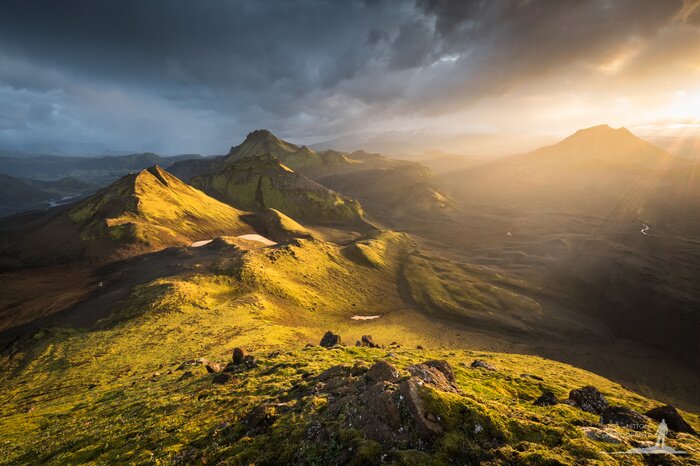
Iceland: End of Days
So, for the last five months or so, whilst I've been seeing some wonderful autumnal imagery produced by fellow photographers, I've been locked in a cycle of photographic depression. Everything I've photographed since that day in Iceland has seemed, well, a bit 'meh'. Solihull struggles to compete with the Iceland. My trip to the Lakes was a washout...again. My trip to Snowdonia was a washout...again. Several trips to the Peak District have resulted in walking in cloud or under flat grey. I did take an image of a bird that people seemed to like...maybe I should show them the unprocessed shot.
And then it was competition time.
There are lots of competitions closing around this time of year and one in particular I would dearly love to win. The Outdoor Photographer of the Year. I don't know about anyone else, but when I submit images into competitions, I tend to reprocess them. I figure I'm learning all the time, so surely if I reprocess an image from six months ago, chances are I'll do a better job of it than I did last time. Also, competitions tend to restrict what you can and can't do to an image. Six months after the event I can't remember what I did to it typically, and although Lightroom tells you, I prefer to remember by being hands on. Knowing I wanted to do a better job with that Iceland image, I returned to it in Lightroom and had a play. Nothing. I had done just about everything I could with it. But now, thinking freshly about the scene and with a bit less emotion, I looked at some of the earlier shots, taken a few minutes before. Typically when reviewing images for potential I grab the exposure slider, flick it left and then flick it right. It's a process that takes 2 seconds, but in those 2 seconds I can determine potential for highlight and shadow recovery, artefacting and colour. As long as the image is in focus, it could be a go'er...and there was one. Some of the more obvious highlights were blown in the sky (it's the frickin Sun, what do you expect?) and would need some TLC, but other than that it was nigh on perfect. Funny, I had the image I'd wanted, I just didn't know it. Here it is.
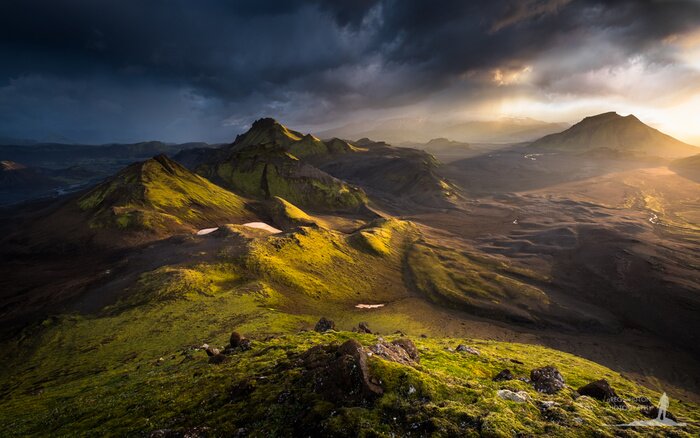
Iceland: End of Time
So, the point of all this is? Photography is a learning process, and not just the technicals, it's also about learning to control your attitude, your emotion. I've just spent five months lamenting over a major missed opportunity. I had failed to achieve the standards I had artificially set for myself. In the moment, I'd cocked up...or so I had thought. I've been hanging my whole attitude towards photography on that one pivotal moment. That is crazy. True, Iceland was spectacular and although conditions were not the best, they were far from what they could have been. I came home with quite a collection of images, and having given it time the image I really wanted in my head. I do need to stop lamenting on what could have been and focus on what is. I need to try to get the best out of that. If I travel to the Lakes or to Scotland or wherever and come back having had little or no fantastic light to bolster my images, I need to concentrate on coming back with something equally as good if not better because of it, stronger composition, more creative thinking. I need to do this, so that when those rare moments of splendor do arrive unexpectedly I can perform at 100% and get that image right. Put it simply, I can't afford to be a Jack of all Trades, it's not good for my mental state, not if I'm going to continue to photograph things, I need to shoot the mundane to excel when it counts.
I have very recently been through a long period of self-doubt or melancholy, as anybody who follows me on social media may attest. I try to keep these things lighthearted on the outside but on the inside I'm really struggling. Several times over the last few months I've seriously thought about just selling all the photography equipment and just move on to something else. I'm not lying in my Twitter bio, I really am a "Jack of all trades, master of none". The problem is whilst I love learning something new, a new skill, I lack the absolute dedication, the selfishness required to really master it. It's that way with photography too, I know deep down I'll never fully master it, perhaps nobody ever does, but because of that I lose interest or something else happens.
I can trace this particular period of melancholy back to my trip to Iceland in July, in fact to a single moment. Having trekked through volcanic desert, over snow and ice, past raging rivers, etc, for six whole days, carrying everything we needed including food (of which you can never carry enough as you need), it's safe to say I was quite exhausted. Up until this point we'd only had one spectacular morning of light producing some fantastic photographic opportunities. Unfortunately on that morning I had allowed myself to get a little bit too cold, I started making mistakes and when I realised I had shot for a whole half an hour, some 20-30 images of the ever changing conditions in manual focus, without refocusing (i.e. I now had 20-30 out of focus shots), I retired to the tent to warm up and fell asleep. The others continued shooting and got some fantastic images...I didn't. Sometime on day four or five, the leader of the expedition, Alex, asked me, "if you were to go home now would you be satisfied with your images?". I had to reply "no".
Fast forward to day six, which was to be our last wild camp on a minor hill overlooking some spectacular scenery. We pitched the tents and one by one ascended a slightly higher (but steep) hill adjacent to the camp. The sun was shining, it was warm, and there was a lovely soft bed of moss across the summit. Clouds were strafing the skies, dark and brooding to the west, light and fluffy to the east, we were in no mans land. Perfect. I shot quite a few images into the evening and then the heavy cloud rolled across. Alex and Neil had descended which left Matt and I at the top. About half an hour passed and it looked like that was it. I decided to descend to camp. I had captured some nice images that day, but I hadn't managed to get a defining image for the trip. If I recall, I was a bit annoyed...bloody typical. In my walking group I have a nickname, 'Washout Whitton' they call me. When it comes to weather I am a liability, this is one of the reasons I often return from photography trips disappointed. I do chase bad conditions on purpose, unfortunately nine times out of ten I end up chasing the wrong bad conditions and get flat grey and not much else. That evening in Iceland, I had at least got some dynamic light, just not the dynamic light I wanted.
About five minutes later, having descended about 50 metres, something amazing and unexpected started to happen. A small break in the cloud together with the changing azimuth of the Sun began to combine. The landscape began to turn golden, not just your typical golden hour light either, this was incredible, the landscape was glowing. Realising I only had minutes, I had to make do with the location where I was standing. Alex was rapidly ascending to join me too, and getting very excited. Ideally we'd have still been at the top with Matt, all set up, ready to shoot. There was no chance to use filters, it was a case of tripod, turn on, bracket, shoot, recompose, shoot, recompose, shoot. And this is when the melancholy began. This was perhaps the most spectacular moment in my photographic lifetime (at least I can be thankful the battery wasn't flat). Foreground composition was ok, not great, but ok. The vista was spectacular. However, I hadn't removed the UV filter (I was using them for protection in Iceland as the volcanic dust is very abrasive). Even with a fairly expensive UV filter, pointing the lens anywhere close to the sun resulted in horrible blotching in the image, a kind of extrapolated lens flare...and then there was lens flare itself. I also didn't vary the composition too much, and largely ignored the right hand part of the scene (there was another mountain there). So, there it was, a shot of a lifetime, probably ruined.
Back at home and loaded into Lightroom I naturally went straight for the small selection of images that had the most intense light, it was like catnip. I ignored those that had 'building' light. I was disappointed. The best image I could see had some flare at the side, although in the context it was a pleasing effect. I was able to pull the highlights back, but unfortunately what I didn't realise at the time of shooting was that it was raining. There were streaks of rain covering the image. With a steady hand in lightroom and some creative cloning I managed to make the best of the image and it was ok. Well, I lie, I really liked it. But it wasn't perfect. Most feedback I have received on social media has suggested it's my best shot of the trip. I just saw it as a failure. Like I said, I'll probably never again get all those weather elements to combine in such a spectacular setting, and I'd in essence cocked it up. Here it is.

Iceland: End of Days
So, for the last five months or so, whilst I've been seeing some wonderful autumnal imagery produced by fellow photographers, I've been locked in a cycle of photographic depression. Everything I've photographed since that day in Iceland has seemed, well, a bit 'meh'. Solihull struggles to compete with the Iceland. My trip to the Lakes was a washout...again. My trip to Snowdonia was a washout...again. Several trips to the Peak District have resulted in walking in cloud or under flat grey. I did take an image of a bird that people seemed to like...maybe I should show them the unprocessed shot.
And then it was competition time.
There are lots of competitions closing around this time of year and one in particular I would dearly love to win. The Outdoor Photographer of the Year. I don't know about anyone else, but when I submit images into competitions, I tend to reprocess them. I figure I'm learning all the time, so surely if I reprocess an image from six months ago, chances are I'll do a better job of it than I did last time. Also, competitions tend to restrict what you can and can't do to an image. Six months after the event I can't remember what I did to it typically, and although Lightroom tells you, I prefer to remember by being hands on. Knowing I wanted to do a better job with that Iceland image, I returned to it in Lightroom and had a play. Nothing. I had done just about everything I could with it. But now, thinking freshly about the scene and with a bit less emotion, I looked at some of the earlier shots, taken a few minutes before. Typically when reviewing images for potential I grab the exposure slider, flick it left and then flick it right. It's a process that takes 2 seconds, but in those 2 seconds I can determine potential for highlight and shadow recovery, artefacting and colour. As long as the image is in focus, it could be a go'er...and there was one. Some of the more obvious highlights were blown in the sky (it's the frickin Sun, what do you expect?) and would need some TLC, but other than that it was nigh on perfect. Funny, I had the image I'd wanted, I just didn't know it. Here it is.

Iceland: End of Time
So, the point of all this is? Photography is a learning process, and not just the technicals, it's also about learning to control your attitude, your emotion. I've just spent five months lamenting over a major missed opportunity. I had failed to achieve the standards I had artificially set for myself. In the moment, I'd cocked up...or so I had thought. I've been hanging my whole attitude towards photography on that one pivotal moment. That is crazy. True, Iceland was spectacular and although conditions were not the best, they were far from what they could have been. I came home with quite a collection of images, and having given it time the image I really wanted in my head. I do need to stop lamenting on what could have been and focus on what is. I need to try to get the best out of that. If I travel to the Lakes or to Scotland or wherever and come back having had little or no fantastic light to bolster my images, I need to concentrate on coming back with something equally as good if not better because of it, stronger composition, more creative thinking. I need to do this, so that when those rare moments of splendor do arrive unexpectedly I can perform at 100% and get that image right. Put it simply, I can't afford to be a Jack of all Trades, it's not good for my mental state, not if I'm going to continue to photograph things, I need to shoot the mundane to excel when it counts.
A Meeting Of Minds. On Landscape conference - The Rheged Discovery Centre, 21-23 November 2014
24th November 2014 - 0 comments
24th November 2014 - 0 comments
This weekend just gone I attended the inaugural On Landscape “A Meeting of Minds” landscape photography conference at the Rheged Centre in the Lake District near Penrith, the brainchild of respected landscaper Tim Parkin.
The event was a two day crash course of all things ‘landscape’ delving into science, theory, business, and just admiring the work of respected professional landscape photographers. As a mere enthusiast photographer I had everything to gain by attending and absolutely nothing to lose (except the fairly hefty, but clearly necessary, admittance fee!). Above all, as a frequenter of Twitter, it was a good opportunity to meet up with faces I already knew and network with new ones, certainly it was a ‘meeting of minds’.
Friday
I arrived in the evening on Friday for initial registration and to have a chat with folks over a glass of wine or a beer before the main event began on Saturday morning. To ease us in the organisers had displayed various works from the speakers that had been lined up for the weekend. Rather pleasingly also on show was a large print of this year’s winning Landscape Photographer of the Year image by Mark Littlejohn and rather magnificent it was too. So much detail that I just knew had to be present beyond the web resolution image that has been all over the internet. Sitting next to it was another image, this time a detail of some trees that Mark had shot more recently and had had printed just for himself. This image was by no means playing second fiddle to his award winning Glencoe shot, if it too had been entered into LPOTY at the same time, I’m pretty sure it would have been in contention itself! Anyway, the evening was a good opportunity to meet up with some friendly faces and shake the hands of some of the organising team.
Saturday
Now, I’ll admit right here that I am not the best studier of this art. I know of a fair number of landscape photographers, have seen the odd book and print exhibition, but I am more familiar with the work of those with whom I interact on social media. Of course I am quite familiar with the work of David Ward, Joe Cornish and more recently Hans Strand (having visited Iceland myself earlier this year and having since acquired his recent book Iceland: Above & Below), but the likes of Paul Gallagher and Jem Southam were generally new to me. So, this was going to be a voyage of discovery somewhat.
David Ward
After a brief introduction to the weekend by Tim Parkin first up was David Ward, one of the most respected landscapers today, a powerhouse. Not only was he the first speaker, he was also going to be the Host for the weekend. We were in good hands. In the last couple of years I’ve attended a number of photography ‘lectures’ and it’s fair to say although they have all been insightful and very much worth listening to, most have boiled down to “This is an image I took near X, I like it because of Y, it works because of Z”. All very good. However, David wasn’t here to give us a talk about his images, well not in such a straightforward way anyway, no he wanted to talk about colour. What followed was about an hour on the history, cultural significance of and science behind colour. I was fascinated. Not only was David a thoroughly authoritative speaker, his knowledge of his subject was extensive, it was compelling. I left the auditorium on a high, thinking about how I can use colour better in my own images and with an even greater amount of respect for him and his work. David was going to be a tough act to follow.
Paul Gallagher
After a short coffee break (including biscuits…very important), Paul was up. I’m not very familiar with Paul’s work, he is very much known for his Black & White work, and so this was going to serve as a very interesting introduction to it. What is it about people from Merseyside? I don’t think I’ve ever met or listened to someone from that neck of the woods who hasn’t in some way made me laugh. Paul is no exception, regaling us with tales of killer Icebergs in Jokulsarlon and a gradual transition from black and white to colour photography all in a very amusing manner. This style of talk was a little more in keeping with previous talks I had been to, but it served its purpose.
Lunch (provided) followed along with an Exhibitor talk from Canon that I did not attend. If I was still a Canon user, I would have been tempted, but now being fully invested in the Fuji X System, I used the time to browse the other exhibitors such as Beyond Words and say hello to friends Dav Thomas and David Breen from Triplekite Publishing.
David Clapp
A slightly shorter session for David, but no less interesting because of it. David wanted to talk about the business of photography. Having transitioned from water engineer to guitar teacher and now to photographer and successful businessman, David asked the audience who’d like to be a full time photographer? About half a dozen hands from the 150 or so delegates went up. Of course I suspect that in truth about 150 hands went up in 150 heads, but nobody really wants to admit that. The room was of course populated by professionals, full and part-time but also many enthusiasts like me. I think for us all this is a hobby one way or another, do we really want to make our hobby our job? Yes, I think we’d all like that if we knew in advance that we would be successful at it. Anyway, I digress, David set out that these days to be a successful professional you need to be very good, if not an expert in three fields: Art, Business and Technology. If you can do and can combine all three and you are prepared to work beyond your comfort zone you have the potential to be successful. I have no basis on which to challenge this thinking and the explanation given was compelling, it must be right. I’m in trouble then…ah well, maybe this will forever remain a hobby. David explained how he came to be where he is and revealed some of the secrets to his success, such as borrowing plant pots and fighting off tourists who wanted their photo taken with said plant pot. All very interesting stuff. Again, I felt I learned a fair amount.
Rafael Rojas
Next up was Rafael. I’ve seen Rafael’s name around, but I am not familiar with his work. A native of Spain he was one of only two International speakers during the weekend, the other being Hans. Rafael had quite a heavy subject to talk about but thankfully his command of English is very good. His talk was on the process of photography, how all of the elements come together to create an image. Interspersed with some of his own excellent imagery I felt this was the first small stumble of the weekend. Not because of the quality or content of the presentation, but I think timing. Having had a sizeable lunch and having gone straight from David’s talk into this one, I think it’s fair to say the attention span of a number of delegates was faltering. Folks shuffled a bit and I could see the odd head bobbing. Indeed so did mine. I was very interested to hear what Rafael had to say, and I think it’s fair that everyone probably took something away with them from it, but it was hard to maintain concentration. Perhaps this is something that the organisers can think about if/when there is another conference, I think there needs to be a proper break between each speaker, especially in the afternoon if the subjects are quite heavy.
Jem Southam
After a much needed coffee break, the final speaker and keynote of the day was Jem Southam. I’ll state from the outset that I have not heard Jem’s name before, and having seen two rather large prints of his work hanging up outside the auditorium, I really wasn’t sure what to expect. I had been told he is a lecturer by day but that was it. It’s fair to say his work is not what you would consider ‘conventional landscape’ and when viewing just an individual piece I really questioned why he was a keynote. Evidently he is very successful at what he does but I just didn’t ‘get it’. However, the talk itself blew away some of those preconceptions, this wasn’t about individual images, it was a story. To understand Jem’s work you need to understand the narrative. There is an almost morbid quality to his landscapes and each ‘project’ is performed over many months if not years. In fact the first project he covered has spanned something like 18 years. Simple images of his garden, 2 or 3 images a year, changing with the seasons and with the growth of his family (climbing frames and slides sadly disappear over time, trees grow and are cut down following neighbourly disputes, etc, etc). Each project tells a story, people are very much a subject of the narrative, but they do not feature in any of the images. The work of people does. Tales of people passing and others picking up their work to continue, or not as the case may be. The talk was very interesting and as a seasoned public speaker Jem was excellent at delivering his message. I came away with a greater sense of what a project may mean and how they might develop. I won’t sit here and say I am now a fan of Jem’s work, but I do understand where he is coming from. In my opinion (which stands for little I know) a good photo should not necessarily need a narrative as complicated as his in order to understand it, but I can at least respect his work even if ultimately I do not enjoy it. Engrossing.
Saturday Night
For an extra £25 a head the organisers had arranged a dinner at the centre. Not all delegates attended but most did. A ‘pub quiz’ was organised, based wholly on photography (so that was me stumped then) and we also had a rendition of ‘God Save the Queen’ played on a bottle by a Swedish man (Hans). Good fun. The food was tasty, although a few more vegetables with the main course would have been welcome. A good chance to relax and have a chat with new faces because we were allocated our seat…there was no chance for friends to keep to their own little cliques.
Sunday
An earlier start after a late night. Perhaps whisky had not been such a great idea. No coffee on arrival either…not sure what happened there On Landscape team?
Joe Cornish
Think of British Landscape Photographers and one of the first, if not the first, name to pop into anyone’s head is Joe Cornish. The man is a legend in his own time. Author of many books and sometimes lovingly referred to as JCB, he needs no introduction. I’ll stand here right now and say I’m not the greatest fan of Joe’s work. I don’t know why. I should. His typical subject matter (Mountains) is my favourite. I’ve had this conversation with a few friends and they all think I’m bonkers and others who will read this will probably express some surprise. I can’t even find fault in his work. He is a master of composition, of light, of the whole process. He’s a Yorkshireman, but I won’t hold that against him. I don’t know what it is, I’m just not a fan. So, you may be surprised to know I was really looking forward to his talk. Maybe I just hadn’t given myself enough time to appreciate his work and this was a great opportunity to do that. One thing that struck me straight away was that Joe, like the speakers before him, is an accomplished public speaker. He speaks with authority about his subject. He broke his thoughts down into three or four individual subjects that I didn’t make a note of (as I wasn’t taking notes at all during the weekend, preferring to concentrate on what the speakers were saying) and he explained some the challenges experienced in capturing his images. All very good. However, I came away with the same mental block. I think I am trying to force myself to enjoy his work, because convention says I should, and I think that it is that that is actually preventing me from doing so. I kind of wish I had taken some time to hunt him down outside of the auditorium to talk to him, but it was such a hectic weekend I’m am only thinking of this now in retrospect. So, in fairness, the talk was excellent, I did enjoy his presentation and although at this present time it has not helped me to appreciate his work, I do respect it (always have) and have resolved in myself to obtain and read some of his books. I feel I am missing something and want to explore that, all I can say is it’s a bizarre condition I seem to have.
Paul Wakefield
If you’ve seen any billboards or looked in any magazines at any time over the last three decades, chances are you have seen the result of some of Paul Wakefield’s work. He is a leading photographer in the advertising market and with an obvious love for landscape on the side. Back in the summer I attended his talk at the Patchings Festival near Nottingham and so I wasn’t too bothered about seeing him again, assuming he would probably give the same talk (he is a busy man, would he have had time to work on another subject? I thought not). However, in a change of format that was to be repeated for the rest of the day, David Ward joined Paul on stage to go through the presentation in an interview style. At this point in the weekend it was a master stroke. Until now we had been talked at all weekend. This was an opportunity for interaction, albeit just from David essentially, but it added a dynamic that introduced some ‘banter’ and welcome humour. Paul’s subject is quite fascinating and he has some splendid tales to tell, he is brutally honest too and not afraid to share how some of his quite magical adverts are created. Of course he also talked about his landscape work which has recently become available in his new book and it was interesting to hear how that book was put together.
Alan Hinkes
After a very quick loo break we were straight into the talk by Alan Hinkes. This time joined by David Ward and Joe Cornish, with Alan sitting between them. If you don’t know who Alan is, he is the first Briton and one of only a handful of Mountaineers in history to have summited every one of the World’s fourteen mountains over 8000 metres. He has recently written about his experiences on each mountain in his book which also features some amazing photography, especially so because of the effort and time needed to take the photos in “the death zone”! Another Yorkshireman, the ‘interview’ was full of humour and the subject engrossing. As a lover of mountains and being familiar with Alan’s story this was one of the sessions I had been looking forward to most. Full of insight about the perils faced by people such as him (almost every photo contains someone who is no longer alive) it is a wonder he is here to talk to us at all.
Q&A Session
After lunch (during which there was another talk given about Tilt Shift lenses that I did not attend) there was a 45 minutes questions and answers session with Jem, Joe and Paul Wakefield, hosted by David to make up for the lack of time for questions from the audience after each of their talks. This was quite enlightening and again quite fun. There was a question raised about women in photography and Joe mentioned about there not being any female presenters during the weekend, a fact I had not recognised before it was mentioned. However, now that it had, I do very much hope that in future if/when there is another conference that they do manage to get one or two women to present. Women do see things differently to men and I do admire their work and recognise, in some cases, the subtle differences in what they produce compared to men. I can certainly think of a number of women I would be keen to hear a talk from.
Hans Strand
As I mentioned earlier in this review, I visited Iceland earlier this year and photographed some of the places that feature in Hans Strands new book [Iceland: Above & Below] published by Triplekite. My images taken from both the ground during our six day hike and our photographic flight can be seen both here on my website or on Behance (many more images). So, having seen these places with my own eyes I was very keen to hear what Hans had to say. His presentation, obviously not in his native Swedish tongue, was more of a walk through a collection of his images that are in the book and some that are not, along with some insights into Iceland, it’s geology and dangers (who knew exploring an ice/snow cave in summer was dangerous? Oops). Although he has been to Iceland many times and taken many flights to create his amazing body of work versus my one trip, I could totally relate to what Hans was saying about some of the challenges of taking photos out of a window at 150mph. Unfortunately we were not treated again to his skills playing a bottle. Maybe next time.
Conclusion
I found the entire weekend an excellent experience, there was something for everyone I think. I had seen a few social media posts from people before the event saying negative comments, such as it was a “meeting of the mindless”, etc, which I can only fathom out to be jealousy. All I can say to these people is next time (and I do hope there is another conference) you should endeavour to attend and open up your own minds to the possibilities, the ideas and the plain and simple opportunity to network with and actually talk to other people who share the same passion as you. If nothing else it’s an excuse for a beer.
As a suggestion the organisers, who I acknowledge have worked tirelessly to put on this inaugural event, I did think that if held again, it may be good to have some breakout sessions on some practical subjects. Not necessarily the technique of taking a photo, I think everyone attending knows the basics, but perhaps a printing workshop, or a workflow workshop, etc. More specialised disciplines within the sphere of photography. Perhaps held during some of the talks (so you could choose to attend the talk or have a break doing something else practical) or maybe during some longer breaks during the day. Just a thought anyway.
Finally, on the subject of the organisers, I should thank both Tim Parkin and David Ward and the whole of their team for the hard work they must have put in to organise this. It was thoroughly enjoyable and very worthwhile. Well done.
The event was a two day crash course of all things ‘landscape’ delving into science, theory, business, and just admiring the work of respected professional landscape photographers. As a mere enthusiast photographer I had everything to gain by attending and absolutely nothing to lose (except the fairly hefty, but clearly necessary, admittance fee!). Above all, as a frequenter of Twitter, it was a good opportunity to meet up with faces I already knew and network with new ones, certainly it was a ‘meeting of minds’.
Friday
I arrived in the evening on Friday for initial registration and to have a chat with folks over a glass of wine or a beer before the main event began on Saturday morning. To ease us in the organisers had displayed various works from the speakers that had been lined up for the weekend. Rather pleasingly also on show was a large print of this year’s winning Landscape Photographer of the Year image by Mark Littlejohn and rather magnificent it was too. So much detail that I just knew had to be present beyond the web resolution image that has been all over the internet. Sitting next to it was another image, this time a detail of some trees that Mark had shot more recently and had had printed just for himself. This image was by no means playing second fiddle to his award winning Glencoe shot, if it too had been entered into LPOTY at the same time, I’m pretty sure it would have been in contention itself! Anyway, the evening was a good opportunity to meet up with some friendly faces and shake the hands of some of the organising team.
Saturday
Now, I’ll admit right here that I am not the best studier of this art. I know of a fair number of landscape photographers, have seen the odd book and print exhibition, but I am more familiar with the work of those with whom I interact on social media. Of course I am quite familiar with the work of David Ward, Joe Cornish and more recently Hans Strand (having visited Iceland myself earlier this year and having since acquired his recent book Iceland: Above & Below), but the likes of Paul Gallagher and Jem Southam were generally new to me. So, this was going to be a voyage of discovery somewhat.
David Ward
After a brief introduction to the weekend by Tim Parkin first up was David Ward, one of the most respected landscapers today, a powerhouse. Not only was he the first speaker, he was also going to be the Host for the weekend. We were in good hands. In the last couple of years I’ve attended a number of photography ‘lectures’ and it’s fair to say although they have all been insightful and very much worth listening to, most have boiled down to “This is an image I took near X, I like it because of Y, it works because of Z”. All very good. However, David wasn’t here to give us a talk about his images, well not in such a straightforward way anyway, no he wanted to talk about colour. What followed was about an hour on the history, cultural significance of and science behind colour. I was fascinated. Not only was David a thoroughly authoritative speaker, his knowledge of his subject was extensive, it was compelling. I left the auditorium on a high, thinking about how I can use colour better in my own images and with an even greater amount of respect for him and his work. David was going to be a tough act to follow.
Paul Gallagher
After a short coffee break (including biscuits…very important), Paul was up. I’m not very familiar with Paul’s work, he is very much known for his Black & White work, and so this was going to serve as a very interesting introduction to it. What is it about people from Merseyside? I don’t think I’ve ever met or listened to someone from that neck of the woods who hasn’t in some way made me laugh. Paul is no exception, regaling us with tales of killer Icebergs in Jokulsarlon and a gradual transition from black and white to colour photography all in a very amusing manner. This style of talk was a little more in keeping with previous talks I had been to, but it served its purpose.
Lunch (provided) followed along with an Exhibitor talk from Canon that I did not attend. If I was still a Canon user, I would have been tempted, but now being fully invested in the Fuji X System, I used the time to browse the other exhibitors such as Beyond Words and say hello to friends Dav Thomas and David Breen from Triplekite Publishing.
David Clapp
A slightly shorter session for David, but no less interesting because of it. David wanted to talk about the business of photography. Having transitioned from water engineer to guitar teacher and now to photographer and successful businessman, David asked the audience who’d like to be a full time photographer? About half a dozen hands from the 150 or so delegates went up. Of course I suspect that in truth about 150 hands went up in 150 heads, but nobody really wants to admit that. The room was of course populated by professionals, full and part-time but also many enthusiasts like me. I think for us all this is a hobby one way or another, do we really want to make our hobby our job? Yes, I think we’d all like that if we knew in advance that we would be successful at it. Anyway, I digress, David set out that these days to be a successful professional you need to be very good, if not an expert in three fields: Art, Business and Technology. If you can do and can combine all three and you are prepared to work beyond your comfort zone you have the potential to be successful. I have no basis on which to challenge this thinking and the explanation given was compelling, it must be right. I’m in trouble then…ah well, maybe this will forever remain a hobby. David explained how he came to be where he is and revealed some of the secrets to his success, such as borrowing plant pots and fighting off tourists who wanted their photo taken with said plant pot. All very interesting stuff. Again, I felt I learned a fair amount.
Rafael Rojas
Next up was Rafael. I’ve seen Rafael’s name around, but I am not familiar with his work. A native of Spain he was one of only two International speakers during the weekend, the other being Hans. Rafael had quite a heavy subject to talk about but thankfully his command of English is very good. His talk was on the process of photography, how all of the elements come together to create an image. Interspersed with some of his own excellent imagery I felt this was the first small stumble of the weekend. Not because of the quality or content of the presentation, but I think timing. Having had a sizeable lunch and having gone straight from David’s talk into this one, I think it’s fair to say the attention span of a number of delegates was faltering. Folks shuffled a bit and I could see the odd head bobbing. Indeed so did mine. I was very interested to hear what Rafael had to say, and I think it’s fair that everyone probably took something away with them from it, but it was hard to maintain concentration. Perhaps this is something that the organisers can think about if/when there is another conference, I think there needs to be a proper break between each speaker, especially in the afternoon if the subjects are quite heavy.
Jem Southam
After a much needed coffee break, the final speaker and keynote of the day was Jem Southam. I’ll state from the outset that I have not heard Jem’s name before, and having seen two rather large prints of his work hanging up outside the auditorium, I really wasn’t sure what to expect. I had been told he is a lecturer by day but that was it. It’s fair to say his work is not what you would consider ‘conventional landscape’ and when viewing just an individual piece I really questioned why he was a keynote. Evidently he is very successful at what he does but I just didn’t ‘get it’. However, the talk itself blew away some of those preconceptions, this wasn’t about individual images, it was a story. To understand Jem’s work you need to understand the narrative. There is an almost morbid quality to his landscapes and each ‘project’ is performed over many months if not years. In fact the first project he covered has spanned something like 18 years. Simple images of his garden, 2 or 3 images a year, changing with the seasons and with the growth of his family (climbing frames and slides sadly disappear over time, trees grow and are cut down following neighbourly disputes, etc, etc). Each project tells a story, people are very much a subject of the narrative, but they do not feature in any of the images. The work of people does. Tales of people passing and others picking up their work to continue, or not as the case may be. The talk was very interesting and as a seasoned public speaker Jem was excellent at delivering his message. I came away with a greater sense of what a project may mean and how they might develop. I won’t sit here and say I am now a fan of Jem’s work, but I do understand where he is coming from. In my opinion (which stands for little I know) a good photo should not necessarily need a narrative as complicated as his in order to understand it, but I can at least respect his work even if ultimately I do not enjoy it. Engrossing.
Saturday Night
For an extra £25 a head the organisers had arranged a dinner at the centre. Not all delegates attended but most did. A ‘pub quiz’ was organised, based wholly on photography (so that was me stumped then) and we also had a rendition of ‘God Save the Queen’ played on a bottle by a Swedish man (Hans). Good fun. The food was tasty, although a few more vegetables with the main course would have been welcome. A good chance to relax and have a chat with new faces because we were allocated our seat…there was no chance for friends to keep to their own little cliques.
Sunday
An earlier start after a late night. Perhaps whisky had not been such a great idea. No coffee on arrival either…not sure what happened there On Landscape team?
Joe Cornish
Think of British Landscape Photographers and one of the first, if not the first, name to pop into anyone’s head is Joe Cornish. The man is a legend in his own time. Author of many books and sometimes lovingly referred to as JCB, he needs no introduction. I’ll stand here right now and say I’m not the greatest fan of Joe’s work. I don’t know why. I should. His typical subject matter (Mountains) is my favourite. I’ve had this conversation with a few friends and they all think I’m bonkers and others who will read this will probably express some surprise. I can’t even find fault in his work. He is a master of composition, of light, of the whole process. He’s a Yorkshireman, but I won’t hold that against him. I don’t know what it is, I’m just not a fan. So, you may be surprised to know I was really looking forward to his talk. Maybe I just hadn’t given myself enough time to appreciate his work and this was a great opportunity to do that. One thing that struck me straight away was that Joe, like the speakers before him, is an accomplished public speaker. He speaks with authority about his subject. He broke his thoughts down into three or four individual subjects that I didn’t make a note of (as I wasn’t taking notes at all during the weekend, preferring to concentrate on what the speakers were saying) and he explained some the challenges experienced in capturing his images. All very good. However, I came away with the same mental block. I think I am trying to force myself to enjoy his work, because convention says I should, and I think that it is that that is actually preventing me from doing so. I kind of wish I had taken some time to hunt him down outside of the auditorium to talk to him, but it was such a hectic weekend I’m am only thinking of this now in retrospect. So, in fairness, the talk was excellent, I did enjoy his presentation and although at this present time it has not helped me to appreciate his work, I do respect it (always have) and have resolved in myself to obtain and read some of his books. I feel I am missing something and want to explore that, all I can say is it’s a bizarre condition I seem to have.
Paul Wakefield
If you’ve seen any billboards or looked in any magazines at any time over the last three decades, chances are you have seen the result of some of Paul Wakefield’s work. He is a leading photographer in the advertising market and with an obvious love for landscape on the side. Back in the summer I attended his talk at the Patchings Festival near Nottingham and so I wasn’t too bothered about seeing him again, assuming he would probably give the same talk (he is a busy man, would he have had time to work on another subject? I thought not). However, in a change of format that was to be repeated for the rest of the day, David Ward joined Paul on stage to go through the presentation in an interview style. At this point in the weekend it was a master stroke. Until now we had been talked at all weekend. This was an opportunity for interaction, albeit just from David essentially, but it added a dynamic that introduced some ‘banter’ and welcome humour. Paul’s subject is quite fascinating and he has some splendid tales to tell, he is brutally honest too and not afraid to share how some of his quite magical adverts are created. Of course he also talked about his landscape work which has recently become available in his new book and it was interesting to hear how that book was put together.
Alan Hinkes
After a very quick loo break we were straight into the talk by Alan Hinkes. This time joined by David Ward and Joe Cornish, with Alan sitting between them. If you don’t know who Alan is, he is the first Briton and one of only a handful of Mountaineers in history to have summited every one of the World’s fourteen mountains over 8000 metres. He has recently written about his experiences on each mountain in his book which also features some amazing photography, especially so because of the effort and time needed to take the photos in “the death zone”! Another Yorkshireman, the ‘interview’ was full of humour and the subject engrossing. As a lover of mountains and being familiar with Alan’s story this was one of the sessions I had been looking forward to most. Full of insight about the perils faced by people such as him (almost every photo contains someone who is no longer alive) it is a wonder he is here to talk to us at all.
Q&A Session
After lunch (during which there was another talk given about Tilt Shift lenses that I did not attend) there was a 45 minutes questions and answers session with Jem, Joe and Paul Wakefield, hosted by David to make up for the lack of time for questions from the audience after each of their talks. This was quite enlightening and again quite fun. There was a question raised about women in photography and Joe mentioned about there not being any female presenters during the weekend, a fact I had not recognised before it was mentioned. However, now that it had, I do very much hope that in future if/when there is another conference that they do manage to get one or two women to present. Women do see things differently to men and I do admire their work and recognise, in some cases, the subtle differences in what they produce compared to men. I can certainly think of a number of women I would be keen to hear a talk from.
Hans Strand
As I mentioned earlier in this review, I visited Iceland earlier this year and photographed some of the places that feature in Hans Strands new book [Iceland: Above & Below] published by Triplekite. My images taken from both the ground during our six day hike and our photographic flight can be seen both here on my website or on Behance (many more images). So, having seen these places with my own eyes I was very keen to hear what Hans had to say. His presentation, obviously not in his native Swedish tongue, was more of a walk through a collection of his images that are in the book and some that are not, along with some insights into Iceland, it’s geology and dangers (who knew exploring an ice/snow cave in summer was dangerous? Oops). Although he has been to Iceland many times and taken many flights to create his amazing body of work versus my one trip, I could totally relate to what Hans was saying about some of the challenges of taking photos out of a window at 150mph. Unfortunately we were not treated again to his skills playing a bottle. Maybe next time.
Conclusion
I found the entire weekend an excellent experience, there was something for everyone I think. I had seen a few social media posts from people before the event saying negative comments, such as it was a “meeting of the mindless”, etc, which I can only fathom out to be jealousy. All I can say to these people is next time (and I do hope there is another conference) you should endeavour to attend and open up your own minds to the possibilities, the ideas and the plain and simple opportunity to network with and actually talk to other people who share the same passion as you. If nothing else it’s an excuse for a beer.
As a suggestion the organisers, who I acknowledge have worked tirelessly to put on this inaugural event, I did think that if held again, it may be good to have some breakout sessions on some practical subjects. Not necessarily the technique of taking a photo, I think everyone attending knows the basics, but perhaps a printing workshop, or a workflow workshop, etc. More specialised disciplines within the sphere of photography. Perhaps held during some of the talks (so you could choose to attend the talk or have a break doing something else practical) or maybe during some longer breaks during the day. Just a thought anyway.
Finally, on the subject of the organisers, I should thank both Tim Parkin and David Ward and the whole of their team for the hard work they must have put in to organise this. It was thoroughly enjoyable and very worthwhile. Well done.
Entries for Landscape Photographer of the Year 2014
10th July 2014 - 1 comment
10th July 2014 - 1 comment
Well, it's silly season again, entry for the annual (UK) Landscape Photographer of the Year is open and I've just selected my 25 (yes 25) entries for this year. After not getting any shortlisted last year and only one in the first year I entered (2012), I'm really gunning to get one in the book this year. Of course the main aim, that nobody on social media really talks about, is to win, but genuinely I'll be more than happy to get in the book.
For those not familiar with the competition it is supposed to attract entries of the very best of Landscape Photography within the UK, images taken within the last 5 years. There are 4 categories, Classic, Living the View, Urban View, and Your View. I think the first are self-explanatory and the rules for entries in these categories are fairly strict...if not very well defined. Your View, on the other hand, is more of a no-holds barred category...the gloves can come off and digital manipulation is somewhat encouraged, albeit with the proviso that entrants must remember it is a 'photography' competition.
After the debacle that was 2012 and the winner being disqualified for over manipulation of his winning image (which in itself I thought was rather good albeit oft photographed) and thus not in keeping with the rules unfortunately, I think last year many photographers were nervous of images they would typically call "classic" and entered a majority of imagery into the "Your View" class...I certainly did. If in doubt stick it in there. I think therefore the judges had a glut of images in Your View and I suppose only a certain number of possible successful entries. I think the same nervousness surrounds this years competition. Social Media is a awash with questions of "Do you think this is ok?" and "If I clone that will it break the rules?". I think for this reason I've tried to resist the temptation to play it safe with entries into Your View and have instead concentrated on the Classic View category.
Only time will tell whether any of these get shortlisted and if so it'll be an even longer wait to find out whether my digital 'adjustments' are within the rules, but I think it's worth a shot. Here are my 25 entries in no particular order and the category entered.
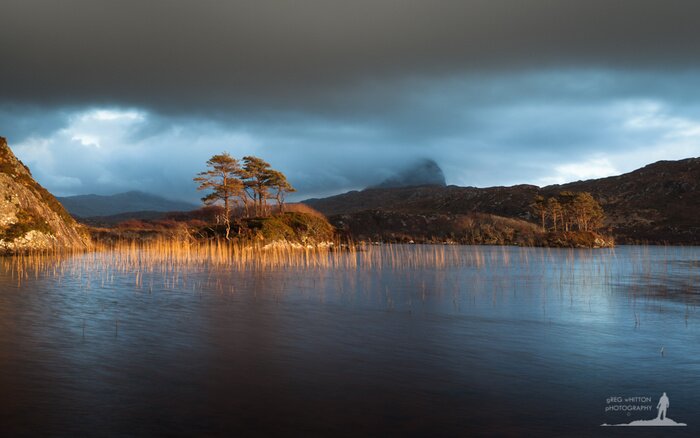
Classic View
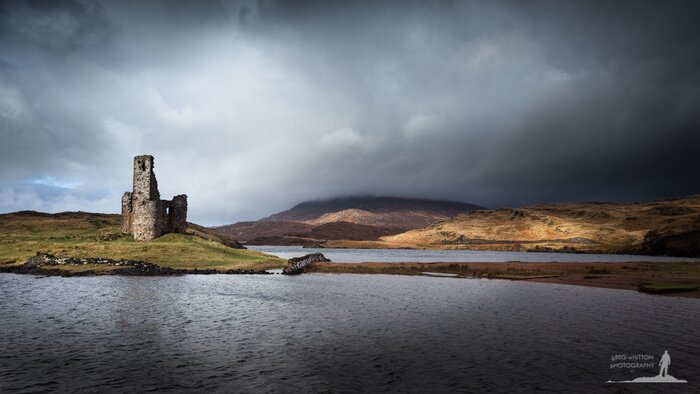
Classic View
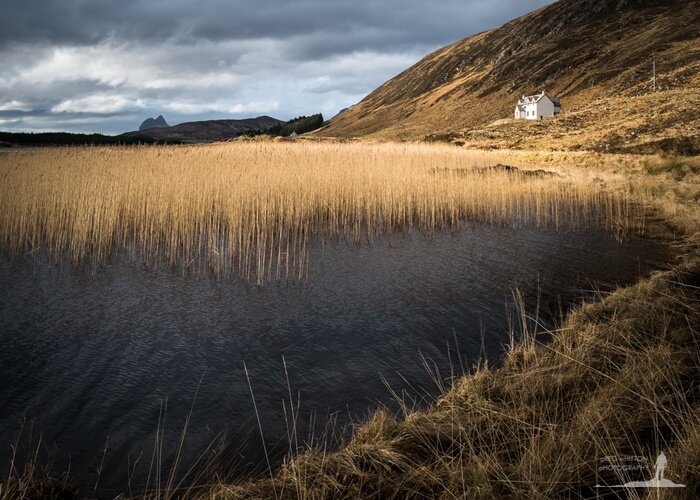
Classic View
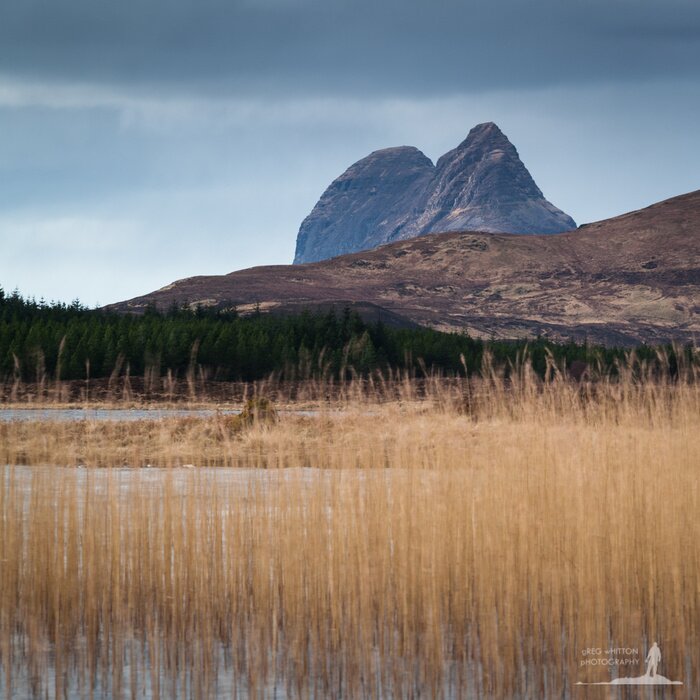
Classic View
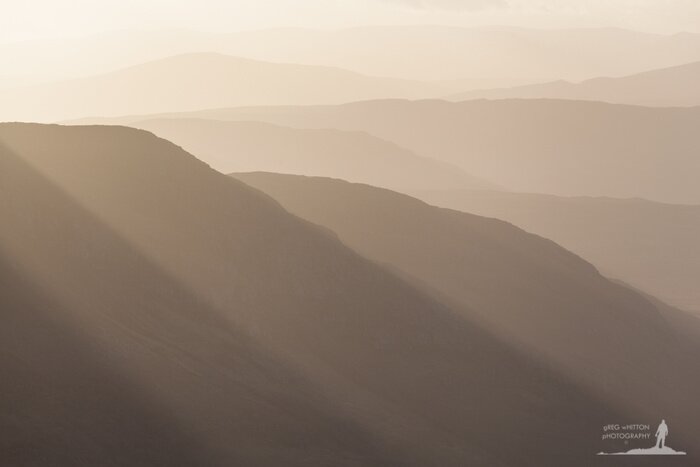
Classic View
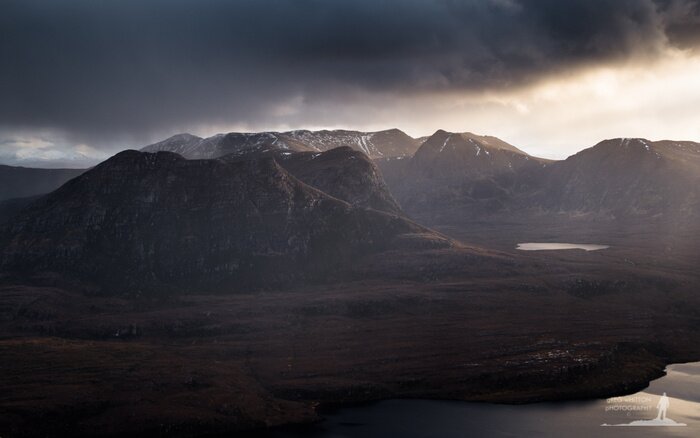
Classic View
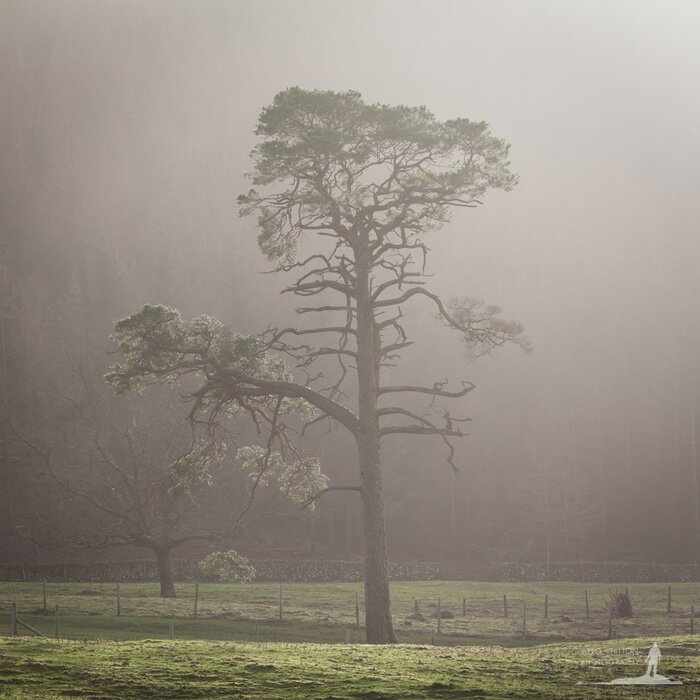
Classic View
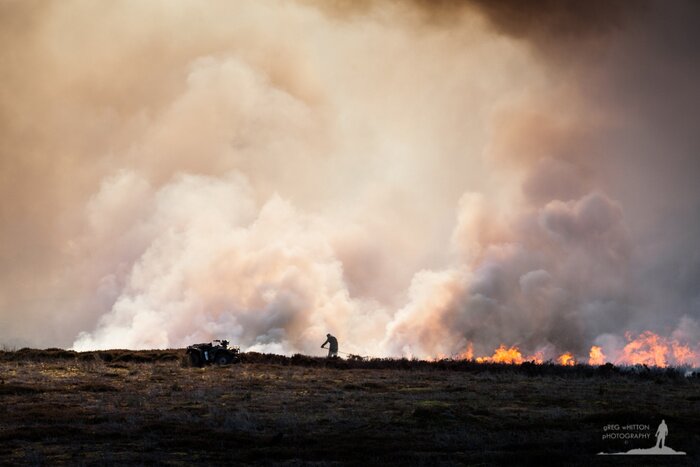
Living the View
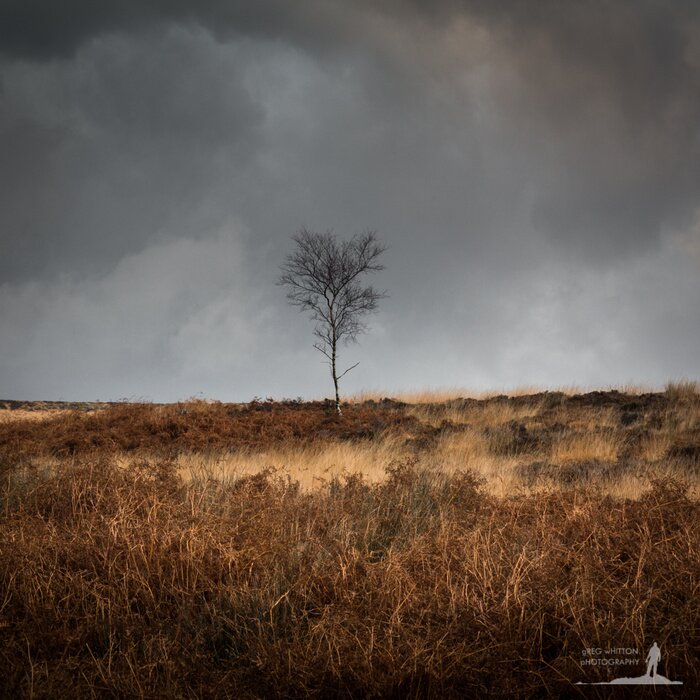
Classic View
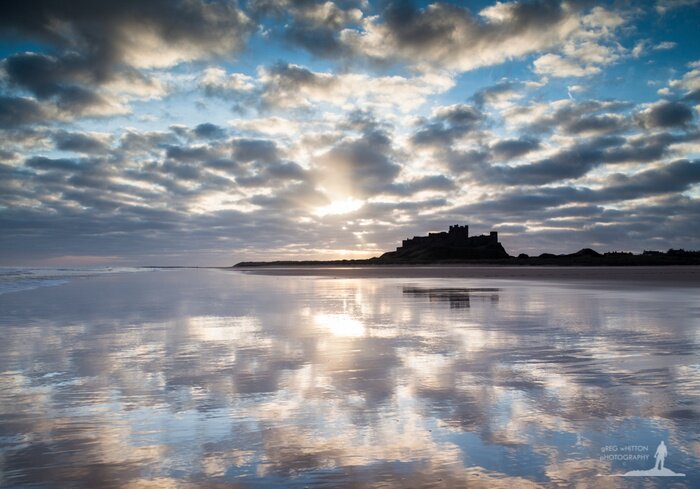
Your View
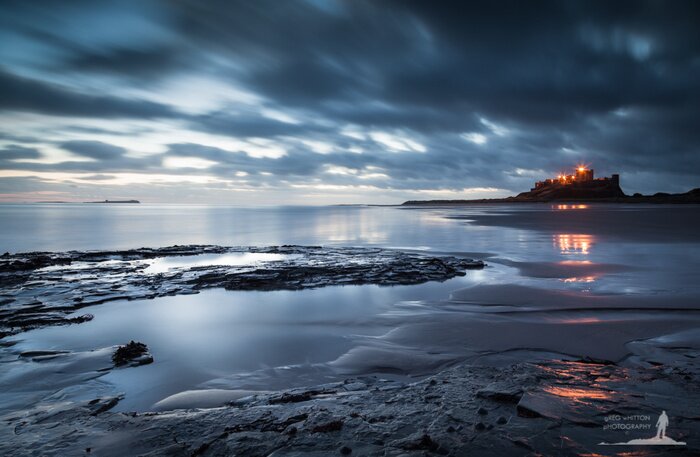
Your View
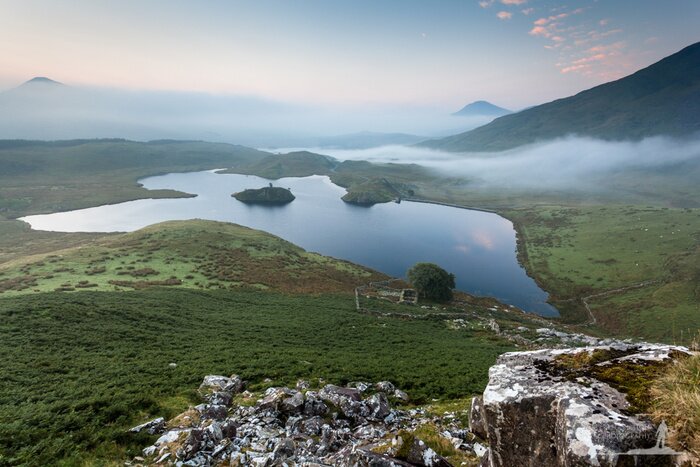
Classic View
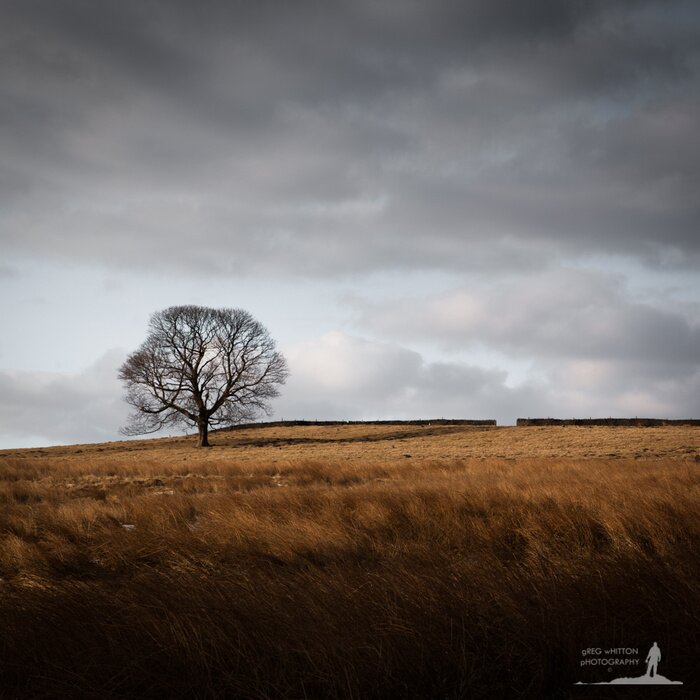
Classic View
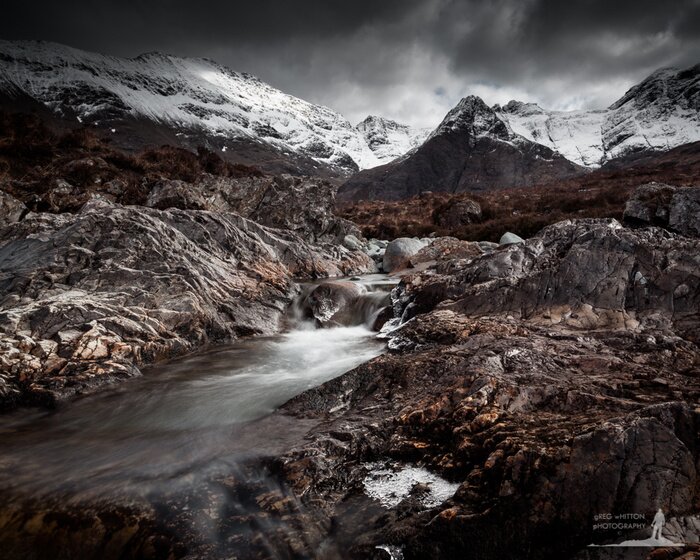
Classic View
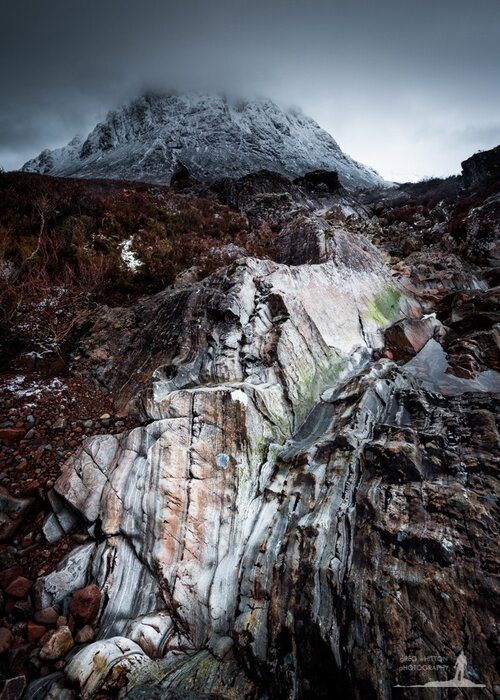
Classic View
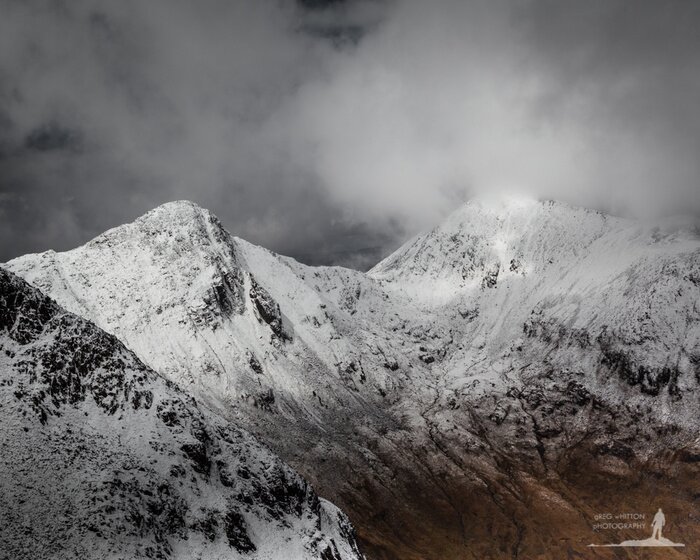
Classic View
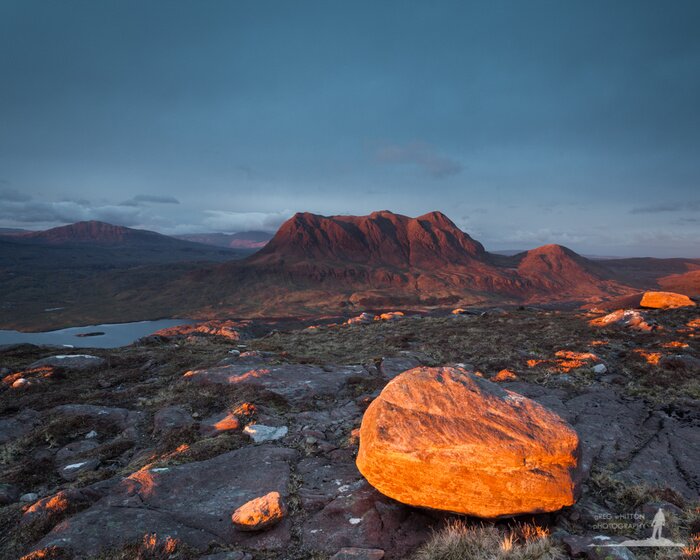
Classic View
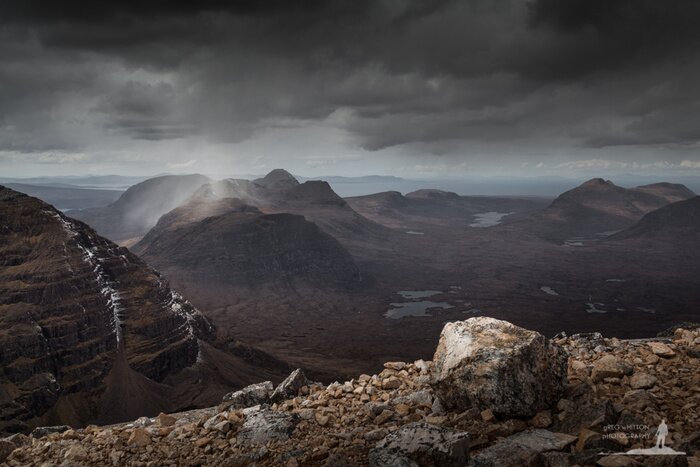
Classic View
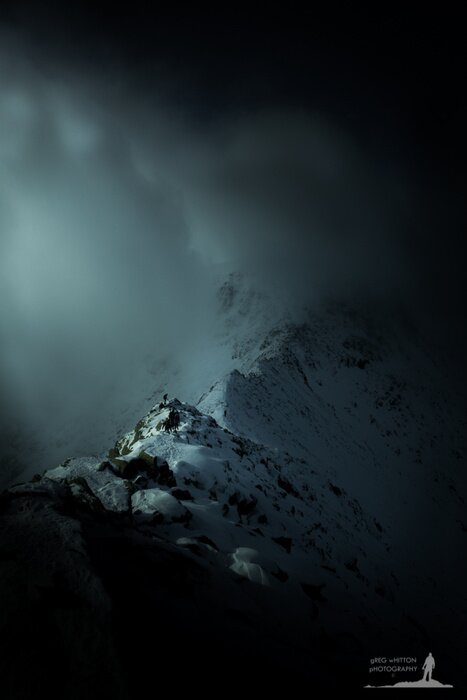
Your View
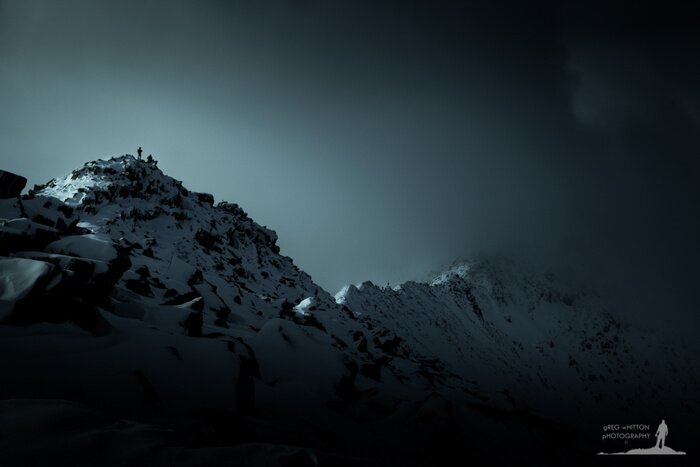
Your View
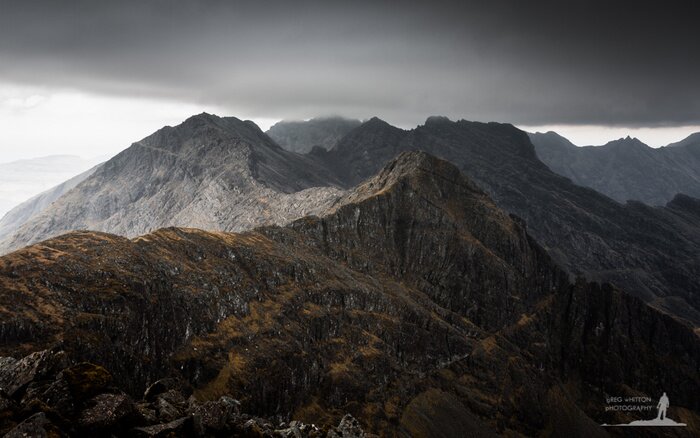
Classic View
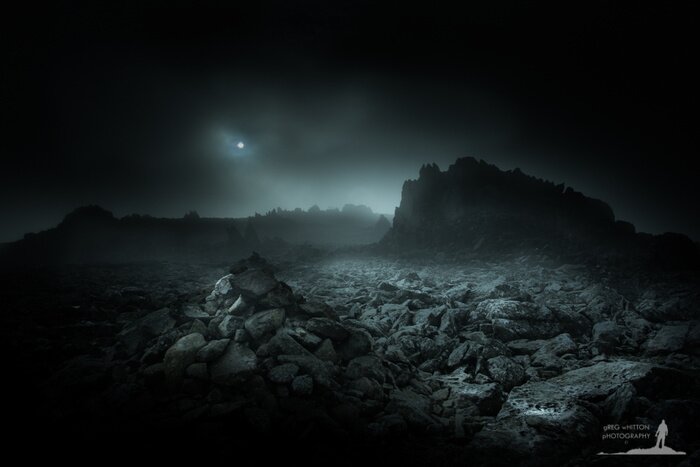
Your View
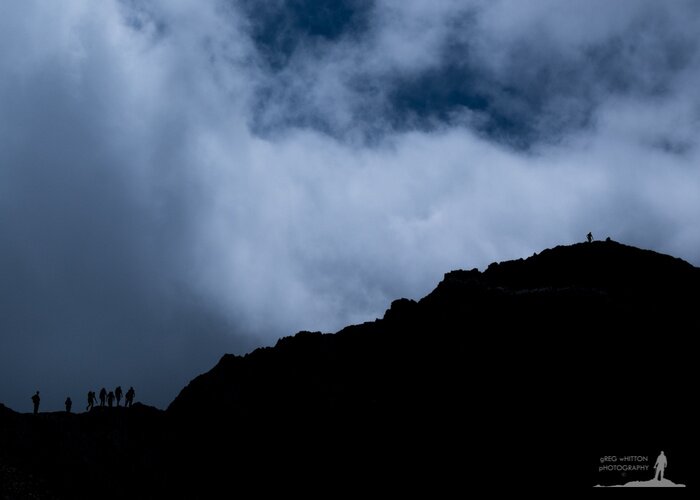
Your View
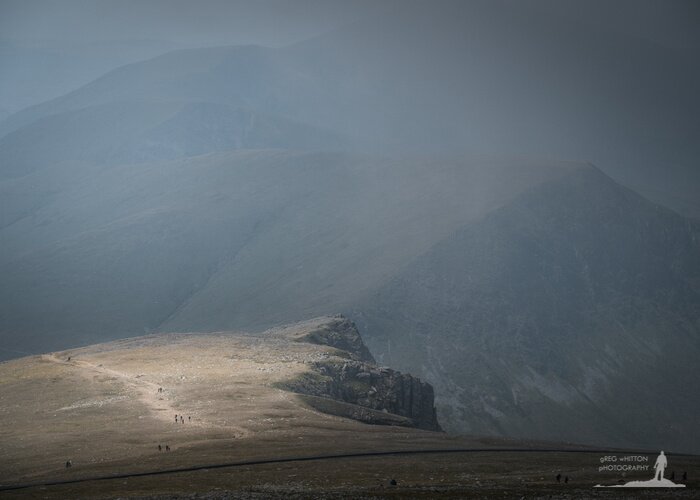
Living the View
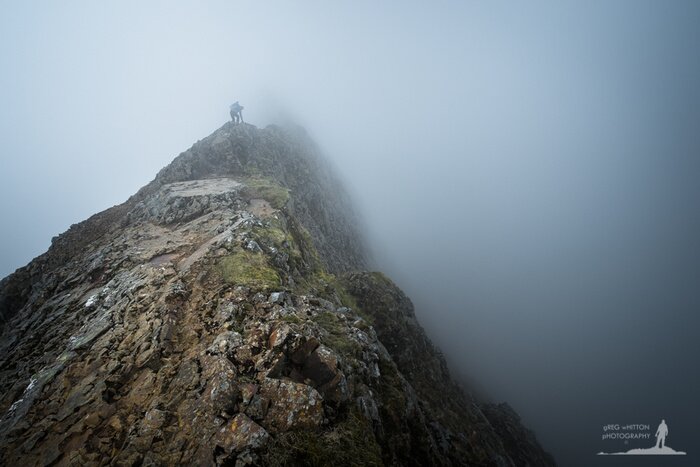
Living the View
For those not familiar with the competition it is supposed to attract entries of the very best of Landscape Photography within the UK, images taken within the last 5 years. There are 4 categories, Classic, Living the View, Urban View, and Your View. I think the first are self-explanatory and the rules for entries in these categories are fairly strict...if not very well defined. Your View, on the other hand, is more of a no-holds barred category...the gloves can come off and digital manipulation is somewhat encouraged, albeit with the proviso that entrants must remember it is a 'photography' competition.
After the debacle that was 2012 and the winner being disqualified for over manipulation of his winning image (which in itself I thought was rather good albeit oft photographed) and thus not in keeping with the rules unfortunately, I think last year many photographers were nervous of images they would typically call "classic" and entered a majority of imagery into the "Your View" class...I certainly did. If in doubt stick it in there. I think therefore the judges had a glut of images in Your View and I suppose only a certain number of possible successful entries. I think the same nervousness surrounds this years competition. Social Media is a awash with questions of "Do you think this is ok?" and "If I clone that will it break the rules?". I think for this reason I've tried to resist the temptation to play it safe with entries into Your View and have instead concentrated on the Classic View category.
Only time will tell whether any of these get shortlisted and if so it'll be an even longer wait to find out whether my digital 'adjustments' are within the rules, but I think it's worth a shot. Here are my 25 entries in no particular order and the category entered.

Classic View

Classic View

Classic View

Classic View

Classic View

Classic View

Classic View

Living the View

Classic View

Your View

Your View

Classic View

Classic View

Classic View

Classic View

Classic View

Classic View

Classic View

Your View

Your View

Classic View

Your View

Your View

Living the View

Living the View
Why I joined the Fuji revolution
26th April 2014 - 2 comments
26th April 2014 - 2 comments
Firstly, can I just say, I love Canon cameras, I loved my full frame (35mm equiv) 5D Mark II and the images I was able to capture using this bastion of Landscape photography. And, now it is gone, I still kind of love it and it hurts. I’m sure if four years ago, when I started this photographic journey in earnest, I had bought into the Nikon system I would feel the same about that brand too, but here I am today, a proud owner of two Fujifilm crop-sensor bodies and a range of lenses that virtually complements what I already had with the Canon…so why make the change?
To understand why, we need to go back about 25 years to the time of teenage growth. Back in those days (about when I was twelve or thirteen) I was a very very slightly overweight kid but an active one. Sure I still had a Commodore 64 (remember those?) and I think I probably chased after several girls in my year at school as well as for an Amiga 500 (which I eventually saved up for and still have…see brand loyalty does count for something), but I also played sports and loved running around with my mates. Playgrounds were for playing footy, or tig (tag), or British Bulldog, which if I look back on now, was pretty brutal. Great days. But then I developed a problem, I found out I had Osgood Schlatters Disease, a rather painful condition affecting the shin and knee. This is where the Patella ligament attaches to the shin. You see when your Tibia starts to grow as a teenager, your ligament isn’t particularly strong, and with Osgood Schlatters it gets very painful and swollen. Sometimes, small pieces of bone detach under the ligament and then through healing a callus develops under that ligament eventually causing a large bony bump at the top of the shin. This went on with me repeatedly for about three years. Every time I thought the pain had gone, I’d go out, kick a ball and be back to square one. I effectively had a sick-note from P.E. for that whole time…and I put on weight.
So, how does this all effect my choice of camera system? Well, I have struggled with my weight ever since. At one point I reached 20 stone and then through diet and exercise, including hiking, I managed to get this down to about 14½ stone and I was pretty fit to boot. My knees never fully recovered from my teenage years and it didn’t help with being overweight, it was almost catch-22. So, when I got down to my lowest weight I was like a new person, and because I was active and lighter my muscles were strong enough to support my knees so that I didn’t feel any pain. I thought I had beaten it for good after all those years. I then got into photography and enjoyed just being in the hills, exploring new places and drinking in breath-taking views. I was using a Canon 40D back then, a substantial camera in its own right, made of magnesium alloy (it has since been replaced by plastic evolutionary models). I started acquiring ‘L’ series lenses (often quite heavy themselves, they are ‘built to last’) and I then progressed to the 5D Mark II. I’d typically pair this with a Canon 24-105 F/4 L lens with the combined weight being a shade less than 1.5kg. This wasn’t a problem really, because I was lighter and mountain fit. On occasion I’d carry the 5D Mark II and both the 17-40 F/4 L and the 70-200 F/4 L IS lenses rather than the 24-105, with a combined weight of just over 2kg. Then I moved from my usual walking haunt to Solihull, the hiking dried up, I got a little older, I drank a little and ate perhaps a little too much. I still go to the gym 5 times a week, but the weight is creeping up. I’m now 18 stone…quite a fit and strong 18 stone I may add, but the knees are groaning.
I had a plan to get some serious road cycling in this spring, to lean up. But the knees hurt too much to turn the pedals right now and I don’t trust my weight on the bike…but what was it that turned some achy knees into quite a lot of pain? A hike and wild camping photography trip up one of the smallest hills (but the one with the most spectacular view – Stac Pollaidh) in Scotland that is what. I’ve booked on a week-long wild camping and hiking photography trip to Iceland this summer. So, as a practice run I thought I’d do this little wild camp in Scotland. I had to carry my 70 litre pack along with tent for one, sleeping bag, mat, cooking equipment, food, water and spare clothing up 400 metres of ascent and about 2km of walking only…easy. Wrong. The pack was heavy, very heavy…and I was also carrying two camera systems, Canon and Fuji.
Last year I bought into the idea of having a back-up body for my 5D Mark II, especially for a trip of a lifetime to Namibia. I didn’t want the 5D Mark II to go wrong out there and not have a back-up. So, I bought a Canon 650D. A fairly lightweight crop-sensor camera that I was able to use all of my lenses with. It proved to be pretty versatile and although the 5d Mark II worked perfectly throughout, I quickly realised the value of having one body with a wide angle lens and one body with a telephoto lens attached during dusty safaris. I used this little camera for the occasional hike last summer and could certainly notice how much lighter my daypack was with it rather than the 5DII. In true terms the weight difference wasn’t that great, but it was enough to affect comfort. But there was a problem. I noticed that the image quality from the 650D wasn’t quite hitting the mark, it looked a little ‘soft’, a problem emphasised when viewing images a friend had taken with his Fuji X-E1 which just seemed crisper and richer throughout.
Fuji launched the X-Trans sensor system back in 2012 and it has gradually been growing in popularity ever since. Much to the chagrin of some early adopters, Fuji have become a little infamous for offering lens and cashback deals on purchases of new bodies. In the run-up to Christmas they were offering a free lens when you purchased the X-Pro1 body and 18mm lens. By then the price had come down to less than £1000 too, and so as a way of testing out the X-system as an alternative to Canon, I sold the 650D and bought the X-Pro1 and 18mm and claimed my ‘free’ 35mm f/1.4. Immediately I was impressed with the image quality coming from the Fuji, especially the rather incredible 35mm lens. I used it on a few walks here and there instead of the 5DII and it was as if I wasn’t carrying anything at all, the body and lens combo is easily less than 1kg. It might not seem like much of a difference, but somehow it is. More impressively I noticed that the few landscapes I was taking during what was a very poor winter, did not seem to differ in quality from the full frame 5DII. I managed to experiment with another lens, the budget XC16-50, which for a while proved to be a bit of an achilles heel for the system. It was ok, but I just preferred the quality of the images I would get from the Canon. It was this combination that I used in Scotland on the trip that wrecked my knees. For the first time I was able to perform a direct comparison of Image Quality between the Canon and the Fuji under the same conditions in the field. Understandably for the most part the Canon won. I was using ‘L’ Series optics on a Full Frame Sensor against the APS-C sized sensor and a budget lens of the Fuji. But, when comparing a shot between the Canon 17-40 and the budget Fuji XC16-50 taken only a few minutes apart, I was struck by a number of things, the resolving power of the Fuji was actually beating the Canon…don’t take my word for it, check out the unedited 100% crop images below of the same scene. Shadow detail is better, there is more contrast and Chromatic Aberration between the summit of Suilven and the sky is less on the Fuji. It should be said that the light was a little more dynamic when I took the Canon image, but even so. Both of these images are RAW so there has been no processing in camera. Despite this evidence and my better sense I was still content with the Canon and continued to champion it, on the whole the image quality was better.
Canon 5D Mark II and 17-40 F/4 L Lens at 100% crop
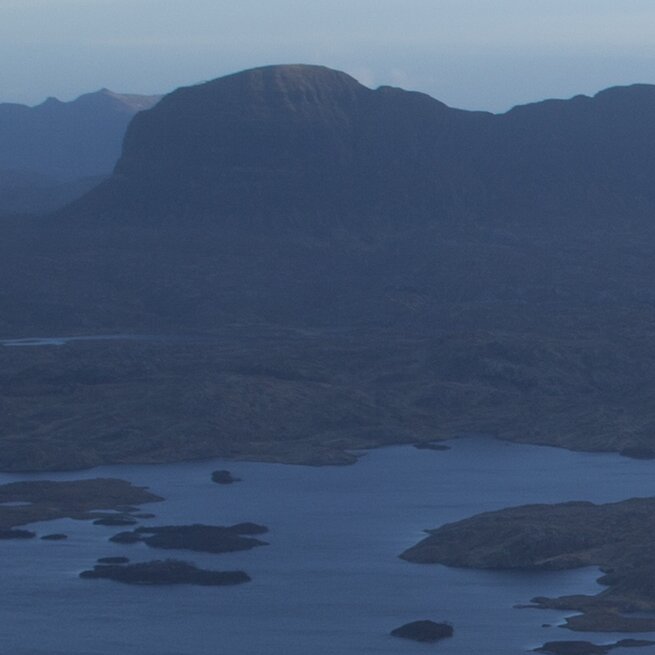
Fujifilm X-Pro1 and Fujinon XC16-50 Lens at 100% crop
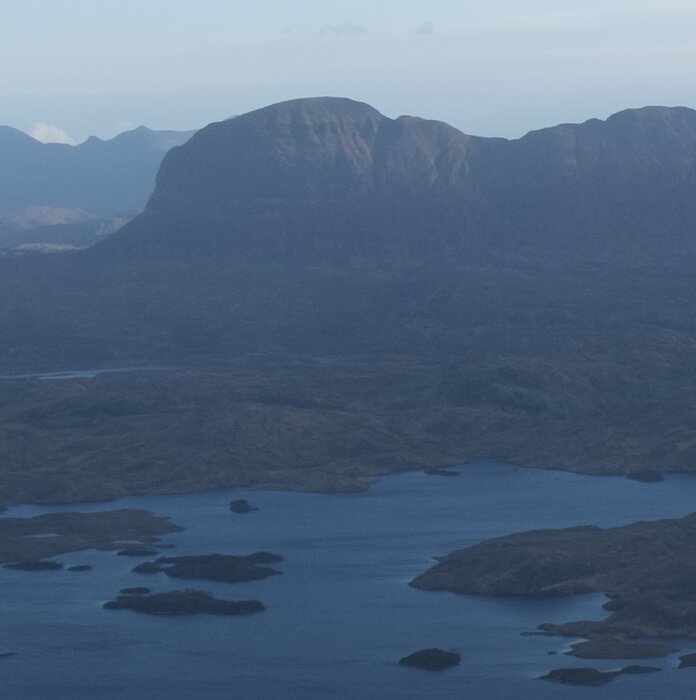
But, despite that, the Fuji was niggling me. You see, the difference wasn’t really that great in the grand scheme of things, it was noticeable, but given the advantages offered by the lighter weight and smaller form of the Fuji, did it really matter? I then managed by hook or by crook to get my hands on the much better XF18-55 and the XF55-200 for very little outlay. If I told you how much, I’d have to kill you…another example of Fuji offers, this time combined to great effect. It has to be said though, all these offers are somewhat devaluing the brand. I then had eight days in India to put the whole system to the test, I chose to travel without the 5DII. Well, long story short, I came back with a higher hit-rate of images than I think I would have with the Canon. The image stabilisation of the Fuji lenses seems to work more effectively, I was able to shoot at ISO 3200 with very little noise which is great when visiting temples and forts and street markets at dusk, and I was getting tack-sharp images handheld at 1/10th of a second sometimes a little less…the Canon would have given up at the traditional mark of a fraction of a second equivalent to the focal length, even with their image stabilisation. I loved carrying the little Fuji around and I noticed that I was much better at shooting street candid’s than others around me were with much larger DSLRs, simply because people didn’t notice it so much.
Back in the UK I used the Fuji on a number of walks and only found myself restricted when I wanted to go ultra wide (I needed the XF10-24 if I was to compete with the 17-40 lens on the full-frame Canon) and on the couple of occasions I decided to walk with the Canon it stayed in my pack on my back, I just didn’t feel like going to the effort to get it out and use it. The love affair was all but over, it had effectively been friend-zoned. If I’d had the Fuji, I’d have got it out, I loved it. Time to move on.
So, here I am, I’ve just sold the 5DII and am in the process of selling off the rest of my Canon kit. This has enabled me to purchase the Fuji X-T1, Fuji’s latest and most advance X-System camera. It is almost the dream camera. It’s still APS-C, but as noted before, coupled with the right optics, it doesn’t seem to lose out to full frame. It has an articulated screen which should come in useful for low level and awkward angle shots. It’s weatherproof (a potential major plus if also coupled with soon to be released weatherproof lenses), and it has a rather fantastic electronic viewfinder. What is not to like? I also purchased the optically superb XF10-24mm lens which gives me an effective full frame focal length 2mm wider than I could achieve with my old set-up, and I still have enough funds left over to purchase a professional photo printer up to A2 size so that I can actually print images rather than leave them all languishing on a hard-drive like most people do these days.
So, there you go, there are a number of other reasons why I changed system that I won’t go into, I’ve probably bored you enough already, but let’s just say they have nothing to do with jumping on a Fuji bandwagon. These are indeed great little cameras that can easily play with the big boys in the DSLR arena, with the possible exception of the very highest end models. A lot of folks seem to feel the need to justify use of the Fuji system by highlighting the fact that a particular image has been taken with one, but you won’t really see that from me, I’d rather let the image itself do the talking, it isn’t what I took the image with that might make it impressive, it is the artistic vision of the photographer and his/her method in accomplishing the shot that makes it impressive. Quite frankly, that little black box in your hands has little to do with it…but with the Fuji it might make it a little easier than with the Canon and my knees are grateful for that.
To understand why, we need to go back about 25 years to the time of teenage growth. Back in those days (about when I was twelve or thirteen) I was a very very slightly overweight kid but an active one. Sure I still had a Commodore 64 (remember those?) and I think I probably chased after several girls in my year at school as well as for an Amiga 500 (which I eventually saved up for and still have…see brand loyalty does count for something), but I also played sports and loved running around with my mates. Playgrounds were for playing footy, or tig (tag), or British Bulldog, which if I look back on now, was pretty brutal. Great days. But then I developed a problem, I found out I had Osgood Schlatters Disease, a rather painful condition affecting the shin and knee. This is where the Patella ligament attaches to the shin. You see when your Tibia starts to grow as a teenager, your ligament isn’t particularly strong, and with Osgood Schlatters it gets very painful and swollen. Sometimes, small pieces of bone detach under the ligament and then through healing a callus develops under that ligament eventually causing a large bony bump at the top of the shin. This went on with me repeatedly for about three years. Every time I thought the pain had gone, I’d go out, kick a ball and be back to square one. I effectively had a sick-note from P.E. for that whole time…and I put on weight.
So, how does this all effect my choice of camera system? Well, I have struggled with my weight ever since. At one point I reached 20 stone and then through diet and exercise, including hiking, I managed to get this down to about 14½ stone and I was pretty fit to boot. My knees never fully recovered from my teenage years and it didn’t help with being overweight, it was almost catch-22. So, when I got down to my lowest weight I was like a new person, and because I was active and lighter my muscles were strong enough to support my knees so that I didn’t feel any pain. I thought I had beaten it for good after all those years. I then got into photography and enjoyed just being in the hills, exploring new places and drinking in breath-taking views. I was using a Canon 40D back then, a substantial camera in its own right, made of magnesium alloy (it has since been replaced by plastic evolutionary models). I started acquiring ‘L’ series lenses (often quite heavy themselves, they are ‘built to last’) and I then progressed to the 5D Mark II. I’d typically pair this with a Canon 24-105 F/4 L lens with the combined weight being a shade less than 1.5kg. This wasn’t a problem really, because I was lighter and mountain fit. On occasion I’d carry the 5D Mark II and both the 17-40 F/4 L and the 70-200 F/4 L IS lenses rather than the 24-105, with a combined weight of just over 2kg. Then I moved from my usual walking haunt to Solihull, the hiking dried up, I got a little older, I drank a little and ate perhaps a little too much. I still go to the gym 5 times a week, but the weight is creeping up. I’m now 18 stone…quite a fit and strong 18 stone I may add, but the knees are groaning.
I had a plan to get some serious road cycling in this spring, to lean up. But the knees hurt too much to turn the pedals right now and I don’t trust my weight on the bike…but what was it that turned some achy knees into quite a lot of pain? A hike and wild camping photography trip up one of the smallest hills (but the one with the most spectacular view – Stac Pollaidh) in Scotland that is what. I’ve booked on a week-long wild camping and hiking photography trip to Iceland this summer. So, as a practice run I thought I’d do this little wild camp in Scotland. I had to carry my 70 litre pack along with tent for one, sleeping bag, mat, cooking equipment, food, water and spare clothing up 400 metres of ascent and about 2km of walking only…easy. Wrong. The pack was heavy, very heavy…and I was also carrying two camera systems, Canon and Fuji.
Last year I bought into the idea of having a back-up body for my 5D Mark II, especially for a trip of a lifetime to Namibia. I didn’t want the 5D Mark II to go wrong out there and not have a back-up. So, I bought a Canon 650D. A fairly lightweight crop-sensor camera that I was able to use all of my lenses with. It proved to be pretty versatile and although the 5d Mark II worked perfectly throughout, I quickly realised the value of having one body with a wide angle lens and one body with a telephoto lens attached during dusty safaris. I used this little camera for the occasional hike last summer and could certainly notice how much lighter my daypack was with it rather than the 5DII. In true terms the weight difference wasn’t that great, but it was enough to affect comfort. But there was a problem. I noticed that the image quality from the 650D wasn’t quite hitting the mark, it looked a little ‘soft’, a problem emphasised when viewing images a friend had taken with his Fuji X-E1 which just seemed crisper and richer throughout.
Fuji launched the X-Trans sensor system back in 2012 and it has gradually been growing in popularity ever since. Much to the chagrin of some early adopters, Fuji have become a little infamous for offering lens and cashback deals on purchases of new bodies. In the run-up to Christmas they were offering a free lens when you purchased the X-Pro1 body and 18mm lens. By then the price had come down to less than £1000 too, and so as a way of testing out the X-system as an alternative to Canon, I sold the 650D and bought the X-Pro1 and 18mm and claimed my ‘free’ 35mm f/1.4. Immediately I was impressed with the image quality coming from the Fuji, especially the rather incredible 35mm lens. I used it on a few walks here and there instead of the 5DII and it was as if I wasn’t carrying anything at all, the body and lens combo is easily less than 1kg. It might not seem like much of a difference, but somehow it is. More impressively I noticed that the few landscapes I was taking during what was a very poor winter, did not seem to differ in quality from the full frame 5DII. I managed to experiment with another lens, the budget XC16-50, which for a while proved to be a bit of an achilles heel for the system. It was ok, but I just preferred the quality of the images I would get from the Canon. It was this combination that I used in Scotland on the trip that wrecked my knees. For the first time I was able to perform a direct comparison of Image Quality between the Canon and the Fuji under the same conditions in the field. Understandably for the most part the Canon won. I was using ‘L’ Series optics on a Full Frame Sensor against the APS-C sized sensor and a budget lens of the Fuji. But, when comparing a shot between the Canon 17-40 and the budget Fuji XC16-50 taken only a few minutes apart, I was struck by a number of things, the resolving power of the Fuji was actually beating the Canon…don’t take my word for it, check out the unedited 100% crop images below of the same scene. Shadow detail is better, there is more contrast and Chromatic Aberration between the summit of Suilven and the sky is less on the Fuji. It should be said that the light was a little more dynamic when I took the Canon image, but even so. Both of these images are RAW so there has been no processing in camera. Despite this evidence and my better sense I was still content with the Canon and continued to champion it, on the whole the image quality was better.
Canon 5D Mark II and 17-40 F/4 L Lens at 100% crop

Fujifilm X-Pro1 and Fujinon XC16-50 Lens at 100% crop

But, despite that, the Fuji was niggling me. You see, the difference wasn’t really that great in the grand scheme of things, it was noticeable, but given the advantages offered by the lighter weight and smaller form of the Fuji, did it really matter? I then managed by hook or by crook to get my hands on the much better XF18-55 and the XF55-200 for very little outlay. If I told you how much, I’d have to kill you…another example of Fuji offers, this time combined to great effect. It has to be said though, all these offers are somewhat devaluing the brand. I then had eight days in India to put the whole system to the test, I chose to travel without the 5DII. Well, long story short, I came back with a higher hit-rate of images than I think I would have with the Canon. The image stabilisation of the Fuji lenses seems to work more effectively, I was able to shoot at ISO 3200 with very little noise which is great when visiting temples and forts and street markets at dusk, and I was getting tack-sharp images handheld at 1/10th of a second sometimes a little less…the Canon would have given up at the traditional mark of a fraction of a second equivalent to the focal length, even with their image stabilisation. I loved carrying the little Fuji around and I noticed that I was much better at shooting street candid’s than others around me were with much larger DSLRs, simply because people didn’t notice it so much.
Back in the UK I used the Fuji on a number of walks and only found myself restricted when I wanted to go ultra wide (I needed the XF10-24 if I was to compete with the 17-40 lens on the full-frame Canon) and on the couple of occasions I decided to walk with the Canon it stayed in my pack on my back, I just didn’t feel like going to the effort to get it out and use it. The love affair was all but over, it had effectively been friend-zoned. If I’d had the Fuji, I’d have got it out, I loved it. Time to move on.
So, here I am, I’ve just sold the 5DII and am in the process of selling off the rest of my Canon kit. This has enabled me to purchase the Fuji X-T1, Fuji’s latest and most advance X-System camera. It is almost the dream camera. It’s still APS-C, but as noted before, coupled with the right optics, it doesn’t seem to lose out to full frame. It has an articulated screen which should come in useful for low level and awkward angle shots. It’s weatherproof (a potential major plus if also coupled with soon to be released weatherproof lenses), and it has a rather fantastic electronic viewfinder. What is not to like? I also purchased the optically superb XF10-24mm lens which gives me an effective full frame focal length 2mm wider than I could achieve with my old set-up, and I still have enough funds left over to purchase a professional photo printer up to A2 size so that I can actually print images rather than leave them all languishing on a hard-drive like most people do these days.
So, there you go, there are a number of other reasons why I changed system that I won’t go into, I’ve probably bored you enough already, but let’s just say they have nothing to do with jumping on a Fuji bandwagon. These are indeed great little cameras that can easily play with the big boys in the DSLR arena, with the possible exception of the very highest end models. A lot of folks seem to feel the need to justify use of the Fuji system by highlighting the fact that a particular image has been taken with one, but you won’t really see that from me, I’d rather let the image itself do the talking, it isn’t what I took the image with that might make it impressive, it is the artistic vision of the photographer and his/her method in accomplishing the shot that makes it impressive. Quite frankly, that little black box in your hands has little to do with it…but with the Fuji it might make it a little easier than with the Canon and my knees are grateful for that.
Render My RAW - Part 2
09th April 2014 - 0 comments
09th April 2014 - 0 comments
Right, firstly thank you to everyone who “rendered my RAW” and secondly apologies for taking so long to post this. I think the reason for that is I wasn’t quite prepared for all of the responses (I expected maybe 2 or 3) and also they left me in a kind of ‘no mans land’ with regard to my own version of the image. So, although I had an idea of what I might write here, I didn’t have the ending. All that changed yesterday during a twitter conversation, but more of that later.
So, how many responses did I get to my request? Sixteen. The power of social media. That may not seem a lot to some folks, but to me, someone who is a relative newcomer, it seems a lot.
Now, if you recall I wasn’t happy with my image for a number of reasons, composition, lighting, subject matter, etc, etc. Normally I’d ignore it and move on, but I thought there was a final image in there somewhere I just didn’t know if I could find it. Maybe there isn’t one in there and if there is it’s unlikely to be in my portfolio for example, but it was fun finding out what others might do to the RAW, what annoyed them about it, and how they dealt with it.
Here are some things to consider about the full frame RAW image before any work is performed on it. I see two routes ‘through’ the image, represented in the pic below by a white line and a black line (excuse the poor drawing skills). Both start from the bottom left along the track and through the open foreground gate. The white line (which is my preferred route) snakes left towards the gate on the left and then right towards the gap in the distant hill, making a pleasing ‘S’ shape. The problem with this is it is too far to the left of the original frame and the gate in mid-ground appears closed…you have to crash through a solid wall. The black line goes through the open foreground gate and continues through the open mid-ground gate in the centre before ascending the centre hill. This ‘should’ kind of work for me, but it doesn’t, I don’t think that hill is strong enough a subject. Secondly we come to balance, and this image is heavily weighted to the right hand side. The big hill on the right (white arrow) is pulling the image down and the bright sky (black arrow) is overly distracting.
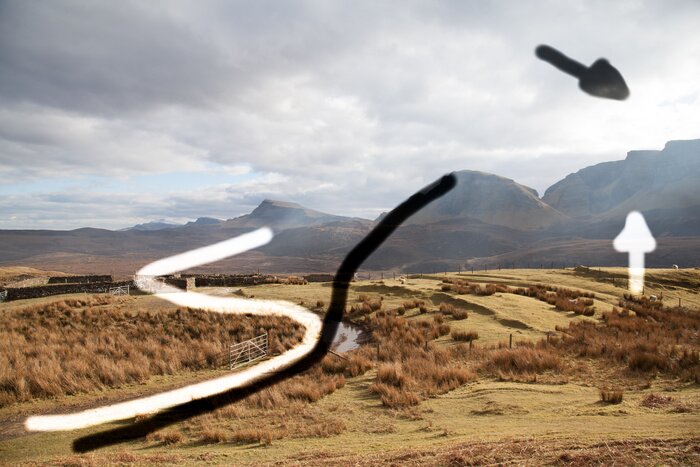
Now, those are the issues I have with the image, let’s see what others had to say about it (edited text for clarity here) and how did they edit it. Click their names for a link to their website. It should be noted that this exercise is not a test of individuals artistic vision or technical editing ability, all participants had little time to edit fully.
Andrew Atkinson
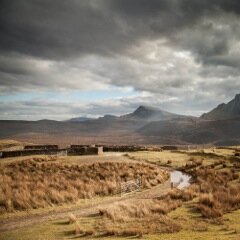
"Did the raw processing in LR with basic crop, Highlights, Shadow etc. adjustment, then inputted into PS6. It took me a while to decide on how to crop to be honest tried 16:9 and 5:4 then went to the trusty 1:1. I went for the square crop as I liked the s shape you get using the track as the bottom of the S. Once in PS6 I added a GRAD ND Filter in Colorfx used Vivesa 2 for some changes to the saturation and dodged and burn in certain areas."
Andy Gray
(No.1)
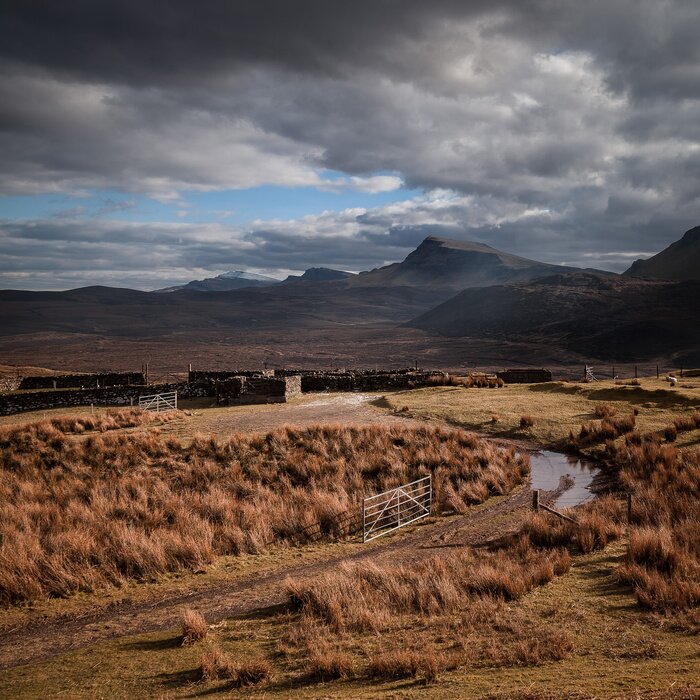
"Square crop - cropped off all the right side as yes the mountain range was interesting, but there was little light on them to allow highlighting. So, concentrated on the cliche "leading you through the image" as we wander along the winding track and follow the base of the range into the distance...
Done in Lightroom, Photoshop, Viveza, Color efex 4, Dfine, Sharpener pro, back to Lightroom for final tweaks."
(No.2)
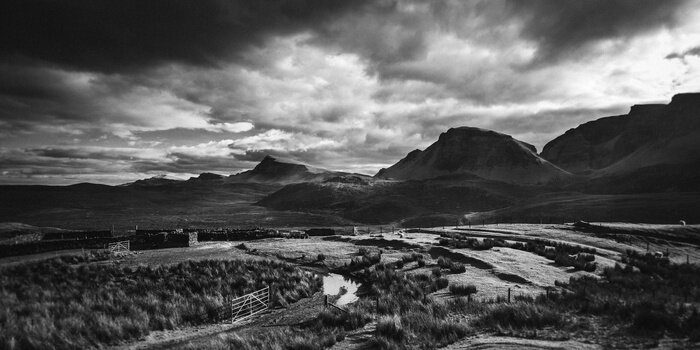
"2:1 crop - More me. Though, I continued finding myself lightening it as I worked on it no matter how dark I intended it being to begin with. All performed in Lightroom."
Charles Spencer
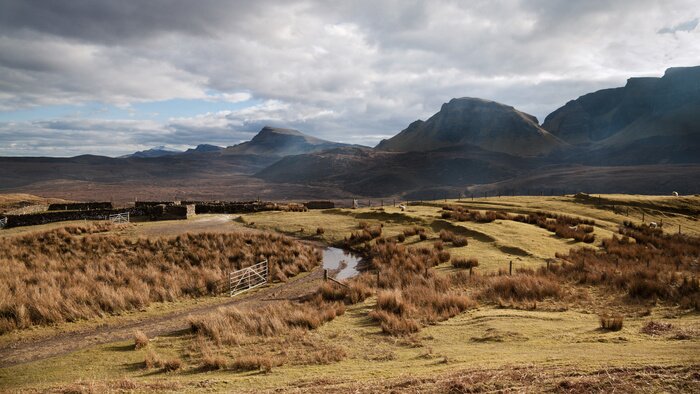
"Loaded into Adobe Camera Raw.
Went through sliders to attempt accurate colour tones, range and contrast.
Kept image fairly cool and natural looking in terms of white balance.
Used Camera Raw Grad tool to bring exposure down on sky and help deal with bright area at top right.
Other minor adjustments in Camera Raw.
Loaded into Photoshop CS5.
Used adjustments highlights/shadows tool to check for lost detail.
Used a bit of clone and brush tool to deal with bright area at top right.
Checked levels and adjusted as required.
Independently adjusted levels on sky to increase cloud contrast. Subtle only.
Some dodge & burn on mountain range.
Reduce saturation in orange/red slightly.
Reduce saturation in sky/clouds.
Other minor adjustments.
Duplicated layer and set to overlay. Used high-pass filter on overlay layer and set to 0.7 to increase sharpness.
Flattened image.
Check composition, settled on wide crop with gate on thirds and horizon on thirds. 16:9."
Colin Bell
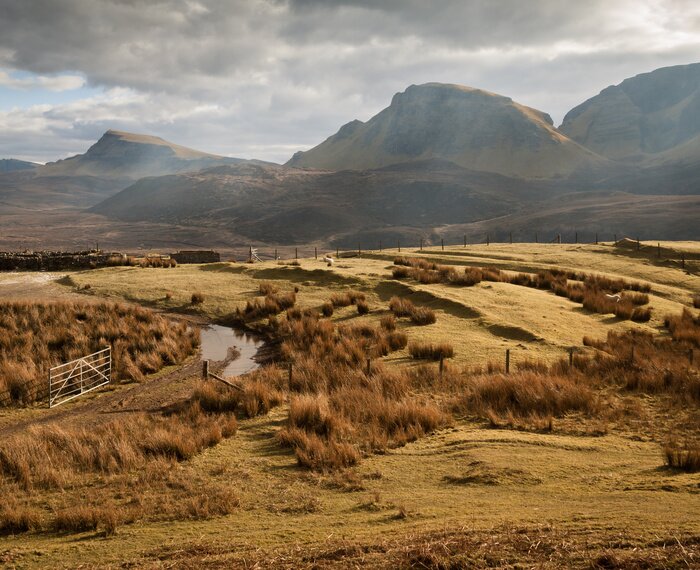
"To my eye, the key features are the two central-ish mountains for the nice subtle light on them, plus the open gates with curved path. The right hand side unbalances the full image for me. I'm left wanting to know what the shape of the far right mountain is rather than appreciating the shapes and light on the two central ones. With regard to my crop, I chose to focus in as much as possible on the central area choosing the crop boundaries to minimise curiosity about what is out of frame. Ideally the image would make more of the nice S curve than my crop does, but I think to include that as a key feature means losing out on the nice light on the right of centre mountain. Other changes were curve adjustments and a software grad on both the sky and the ground to lead the viewer through. A little extra contrast and warmth applied to the light on the tops of the mountains via the brush tool. Standard lens profiling and a tiny bit of noise reduction with a smidgeon of sharpening although heavily masked to just include the edges. Edited in Lightroom 5."
Lizzie Shepherd
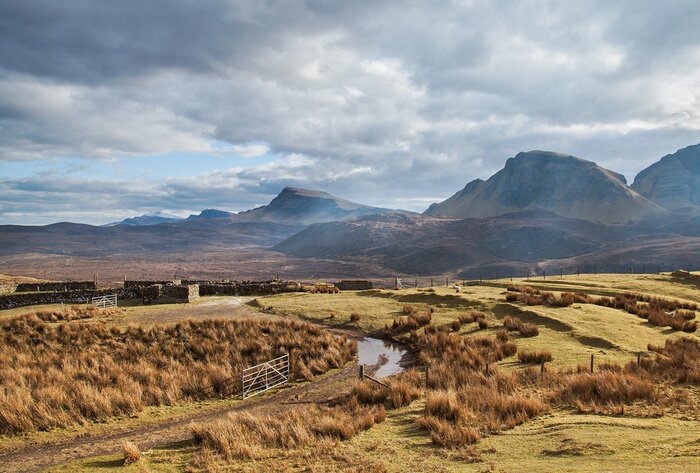
"I didn't spend that long on it so not fine tuned but it's got roughly the look I would go for based on what I could see in the raw file. Two caveats - one, I wasn't there (obviously!) and two, I've never owned a 5Dii so am unsure about how it handles colour, light, etc - makes quite a difference in my experience - certainly the original 5D and 1DS3 were very different indeed. But it's probably not too far off….
Didn't actually want to crop out the right-hand mountains but the bright bit of sky was bugging me so decided to go for it regardless - the important thing was to keep that nice S bend prominent in there for my eyes…"
Mat Robinson
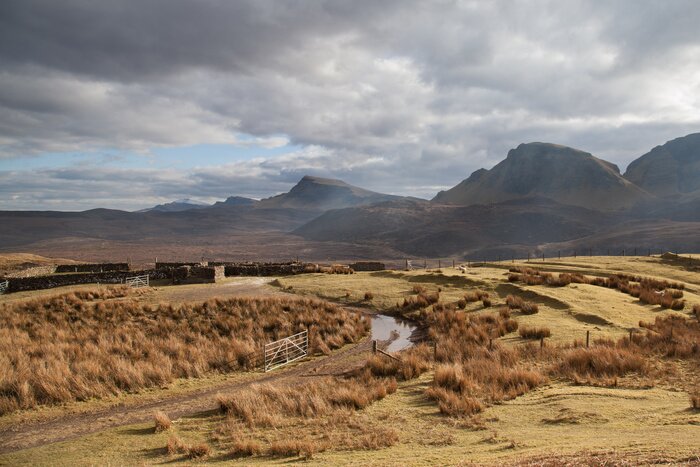
"First I wanted to pull the highlights back a bit, along with bringing the exposure down a wee bit overall too - largely just so I could better see the detail in as many areas as possible to decide what to do with it. Then I added a graduated filter to increase the contrast in the sky, darken the mountains and brighten the foreground back up again. The vibrance and clarity were both nudged up a little too - overall. Then sharpening, slightly, and increasing the contrast overall.
I thought the crop made sense as it got rid of a tricky bit of sky top-right. It was just overexposed enough for me to not like it and think maybe I should blow it out more and make it look more like a real burst of sunlight, but not also just not-overexposed enough for me to think I could bring it in and keep the detail there. So in the end, I thought a crop took that question away whilst losing nothing from the rest of the image. I always prefer a 3:2 ratio for landscapes and think I found a nice clean line to crop along the bottom that doesn't cut through any regions of grass. I quite liked how the road leads from the bottom corner right into the middle of the frame now too.
I finally went over to GIMP and used a tone-mapping plugin on an additional layer which I then masked to about 10% which made the foreground a little better for my liking.
And... after all that, it looks like I hardly did owt to it! I don't know why I bother sometimes!"
Michael Marten
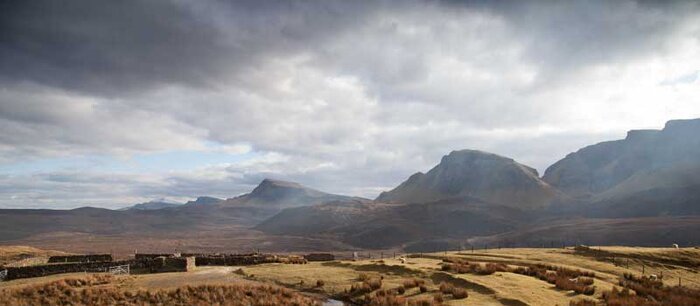
I was trying to do was get away from the confusion over the path and the lead in, which had the wall and so on and tried to focus on the shapes of the mountains in contrast to the plain. The darkened clouds (I adding an ND) were intended to make layers of light and dark - four of them in total. Essentially I wanted to focus on the light/dark elements, and tones.
Mike Murray
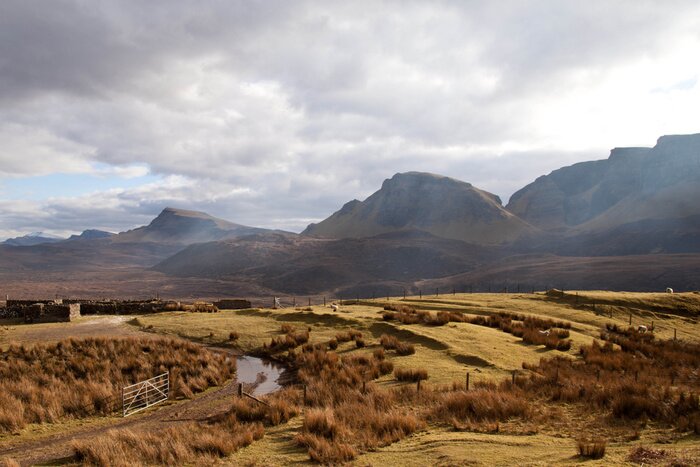
"Found the line between the gates took my eyes wandering off to the left - cropped out the small gate second gate and to me the first gate now leads me in nicely into the farm and mountains."
Nigel Morton
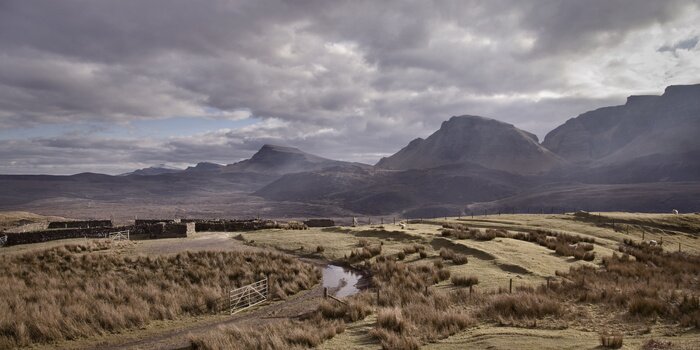
No editing details provided.
Pete Bridgwood
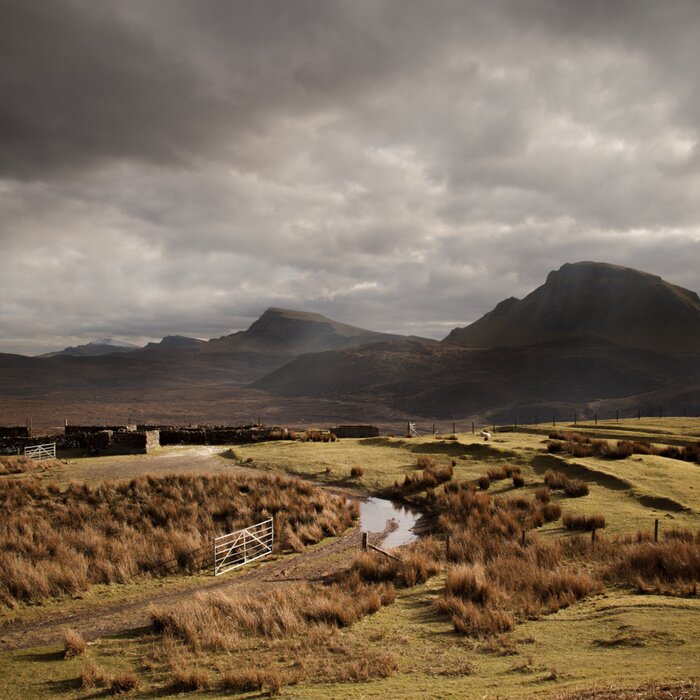
No editing details provided.
Richard Earney
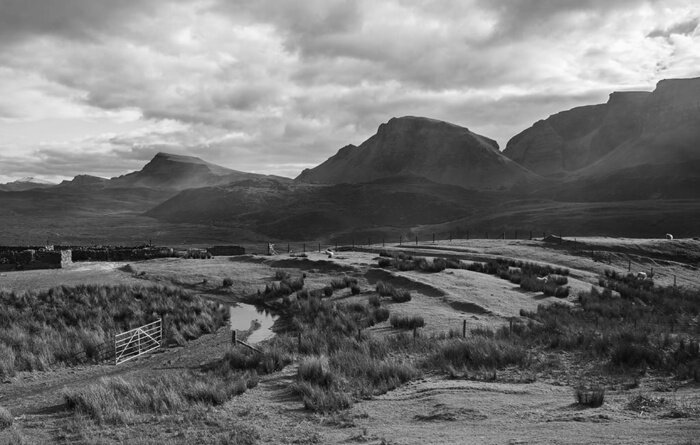
No editing details provided.
Richard Hurst
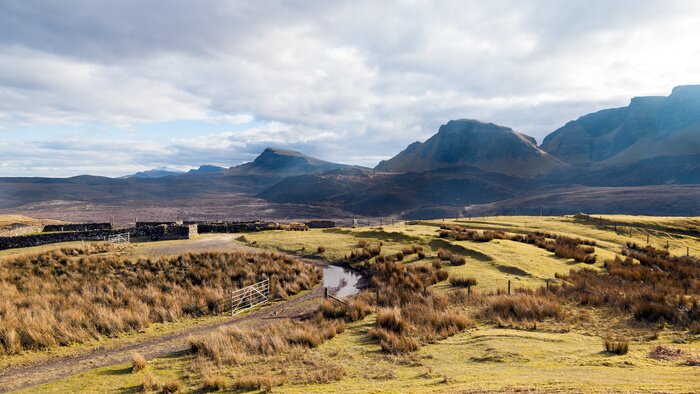
No editing details provided.
Richard Thomas
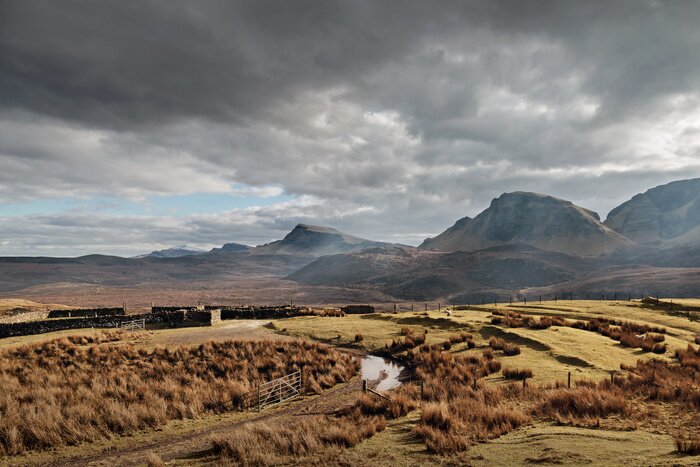
"Opened my ACR, profiled for the lens, changed to Camera faithful, adjusted tones and levels and added a slight grad to the sky and foreground, then up the contrast and dropped the saturation on the yellows.
Then opened in Photoshop CC, fiddled with the curve on separate layers a couple of times erasing sections I didn’t want adjusted, cloned out the spot in the sky and one tiny bright spot next to the puddle, dodged the puddle a bit and burnt the chalk stones in the wall on the left, then sorted those gates out :-)
As a rule I generally try and keep a landscape shot to how it was when I was there, albeit it giving them some contrast, therefore I’ve judged the clouds on how you’d done your original you posted on Twitter as you were the one there."
Robin Hudson
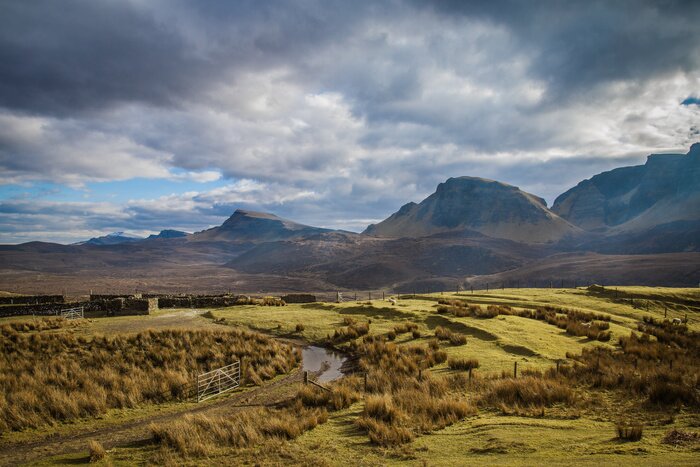
No editing details provided.
Sean Goswell
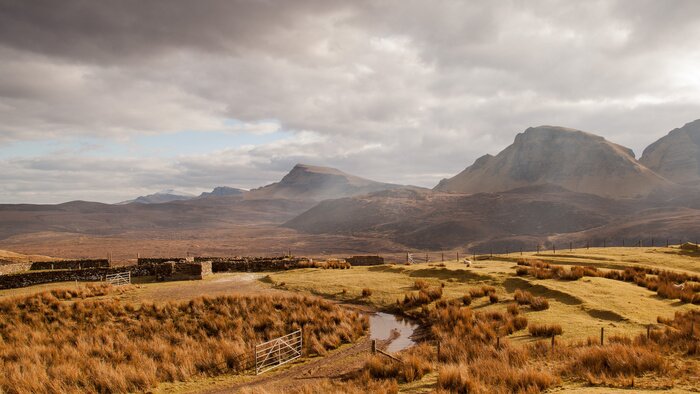
No editing details provided
Valda Bailey
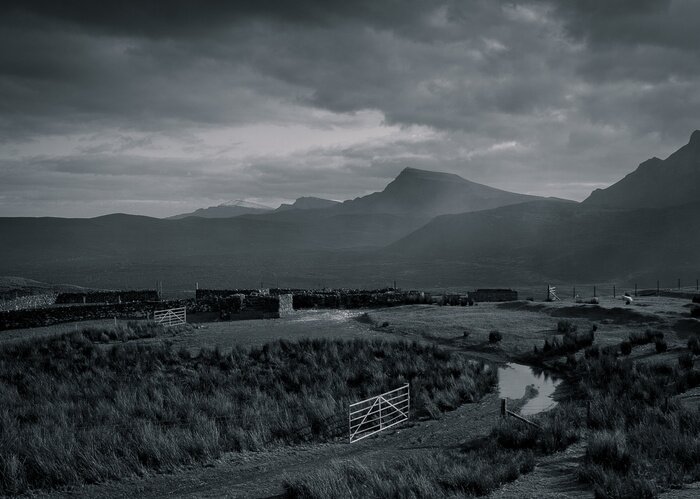
"I love the image but felt there were too many foreground elements competing for my attention. And, as I said, it’s all about the gates for me."
Conclusion...almost
So, there you go, it is interesting to see what each of these photographers, both professional and enthusiast, made of my image with some wild and not so wild variations. It is also interesting to note that the majority of them had the same thoughts as me, about the mountain on the right and the ‘S’ curve leading the eye through and how they tackled those problems. However, for all of this ‘assistance’ (I shall call it that) I still couldn’t crack the original problem I had with it, it just didn’t work for me and perhaps that was how it was meant to be, not every photo does work and certainly not those which you snatched at given a few moments on a roadside. Each of the edits above have their merits and I leave it up to you to decide whether they work or not.
...nearly the end
Here we are several months later and I never thought I would complete this blog, I just didn’t have an ending, a finished product, I was on the verge of giving in, posting this unfinished and deleting the shot from my library, until today (or rather yesterday).
Over recent months I’ve noticed a massive shift in my focus towards the dark, the moody, the mysterious. I find images of that ilk far more engaging than bright ‘happy’ images, especially in landscapes…seriously how many folks are fans of blue sky photography? Therefore, a lot of my post-processing recently has included a deliberate practice of darkening the mood. Scenes that were otherwise just dull have been given life by deliberate manipulation of contrast, clarity, selective colour adjustments, etc, etc, all to create a more menacing atmosphere. Coupled with that though has been a desire to intensify light, to create a clearer line between light and dark. It was a conversation about images being too dark that gave me a jolt that made me eventually realise what was wrong with this image, at least in my mind. Some of the edits above touched on it, they’ve been processed to be dark and moody, but I did not get it at the time. And so, I revisited the shot and edited it again using similar techniques that I have been using most recently.
I should perhaps point out at this stage that although I have Photoshop CC, I really have no idea how to use it (yet) and I’m not one to use plug-in’s in Lightroom, so all of these adjustments are just from Lightroom 5 itself.
The Final Image
Cropped to remove the large mountain on the right and leave a hint of bright sky. Applied S curve to tone map. Cloned out patch of blue sky. Increased exposure overall by about 2 stops. Applied radial filter in arc over foreground and inverted it, reduced exposure outside filter and increased clarity. Applied further grad filter to sky to darken and added contrast. Used adjustment brush over whole background, reduced exposure and increased contrast. Reduced vibrance over whole image to -50, selectively increased saturation of red, orange and yellow colour channels and increased colour temp. Finally, reduced colour temp of sky graduated filter. Then applied some minor local adjustments to some shadows and highlights.
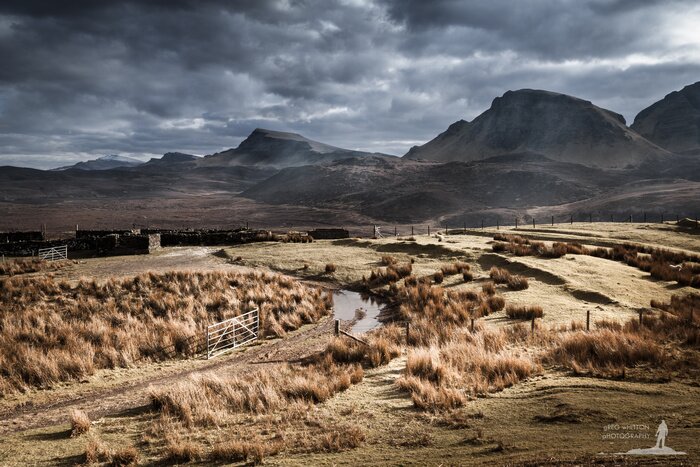
The result, I think, gives the impression of a dark forbidding landscape that has for the briefest of moments been relieved of the darkness by a strong shaft of sunlight that will last mere moments before it is plunged back into darkness.
It’s not perfect, it is surely not everyone’s cup of tea, and like I said before, it probably is not a portfolio shot, but I quite like it now, it’s ok and I feel I can move on to other imagery without this at the back of my mind.
Thanks again to everyone who contributed.
So, how many responses did I get to my request? Sixteen. The power of social media. That may not seem a lot to some folks, but to me, someone who is a relative newcomer, it seems a lot.
Now, if you recall I wasn’t happy with my image for a number of reasons, composition, lighting, subject matter, etc, etc. Normally I’d ignore it and move on, but I thought there was a final image in there somewhere I just didn’t know if I could find it. Maybe there isn’t one in there and if there is it’s unlikely to be in my portfolio for example, but it was fun finding out what others might do to the RAW, what annoyed them about it, and how they dealt with it.
Here are some things to consider about the full frame RAW image before any work is performed on it. I see two routes ‘through’ the image, represented in the pic below by a white line and a black line (excuse the poor drawing skills). Both start from the bottom left along the track and through the open foreground gate. The white line (which is my preferred route) snakes left towards the gate on the left and then right towards the gap in the distant hill, making a pleasing ‘S’ shape. The problem with this is it is too far to the left of the original frame and the gate in mid-ground appears closed…you have to crash through a solid wall. The black line goes through the open foreground gate and continues through the open mid-ground gate in the centre before ascending the centre hill. This ‘should’ kind of work for me, but it doesn’t, I don’t think that hill is strong enough a subject. Secondly we come to balance, and this image is heavily weighted to the right hand side. The big hill on the right (white arrow) is pulling the image down and the bright sky (black arrow) is overly distracting.

Now, those are the issues I have with the image, let’s see what others had to say about it (edited text for clarity here) and how did they edit it. Click their names for a link to their website. It should be noted that this exercise is not a test of individuals artistic vision or technical editing ability, all participants had little time to edit fully.
Andrew Atkinson

"Did the raw processing in LR with basic crop, Highlights, Shadow etc. adjustment, then inputted into PS6. It took me a while to decide on how to crop to be honest tried 16:9 and 5:4 then went to the trusty 1:1. I went for the square crop as I liked the s shape you get using the track as the bottom of the S. Once in PS6 I added a GRAD ND Filter in Colorfx used Vivesa 2 for some changes to the saturation and dodged and burn in certain areas."
Andy Gray
(No.1)

"Square crop - cropped off all the right side as yes the mountain range was interesting, but there was little light on them to allow highlighting. So, concentrated on the cliche "leading you through the image" as we wander along the winding track and follow the base of the range into the distance...
Done in Lightroom, Photoshop, Viveza, Color efex 4, Dfine, Sharpener pro, back to Lightroom for final tweaks."
(No.2)

"2:1 crop - More me. Though, I continued finding myself lightening it as I worked on it no matter how dark I intended it being to begin with. All performed in Lightroom."
Charles Spencer

"Loaded into Adobe Camera Raw.
Went through sliders to attempt accurate colour tones, range and contrast.
Kept image fairly cool and natural looking in terms of white balance.
Used Camera Raw Grad tool to bring exposure down on sky and help deal with bright area at top right.
Other minor adjustments in Camera Raw.
Loaded into Photoshop CS5.
Used adjustments highlights/shadows tool to check for lost detail.
Used a bit of clone and brush tool to deal with bright area at top right.
Checked levels and adjusted as required.
Independently adjusted levels on sky to increase cloud contrast. Subtle only.
Some dodge & burn on mountain range.
Reduce saturation in orange/red slightly.
Reduce saturation in sky/clouds.
Other minor adjustments.
Duplicated layer and set to overlay. Used high-pass filter on overlay layer and set to 0.7 to increase sharpness.
Flattened image.
Check composition, settled on wide crop with gate on thirds and horizon on thirds. 16:9."
Colin Bell

"To my eye, the key features are the two central-ish mountains for the nice subtle light on them, plus the open gates with curved path. The right hand side unbalances the full image for me. I'm left wanting to know what the shape of the far right mountain is rather than appreciating the shapes and light on the two central ones. With regard to my crop, I chose to focus in as much as possible on the central area choosing the crop boundaries to minimise curiosity about what is out of frame. Ideally the image would make more of the nice S curve than my crop does, but I think to include that as a key feature means losing out on the nice light on the right of centre mountain. Other changes were curve adjustments and a software grad on both the sky and the ground to lead the viewer through. A little extra contrast and warmth applied to the light on the tops of the mountains via the brush tool. Standard lens profiling and a tiny bit of noise reduction with a smidgeon of sharpening although heavily masked to just include the edges. Edited in Lightroom 5."
Lizzie Shepherd

"I didn't spend that long on it so not fine tuned but it's got roughly the look I would go for based on what I could see in the raw file. Two caveats - one, I wasn't there (obviously!) and two, I've never owned a 5Dii so am unsure about how it handles colour, light, etc - makes quite a difference in my experience - certainly the original 5D and 1DS3 were very different indeed. But it's probably not too far off….
Didn't actually want to crop out the right-hand mountains but the bright bit of sky was bugging me so decided to go for it regardless - the important thing was to keep that nice S bend prominent in there for my eyes…"
Mat Robinson

"First I wanted to pull the highlights back a bit, along with bringing the exposure down a wee bit overall too - largely just so I could better see the detail in as many areas as possible to decide what to do with it. Then I added a graduated filter to increase the contrast in the sky, darken the mountains and brighten the foreground back up again. The vibrance and clarity were both nudged up a little too - overall. Then sharpening, slightly, and increasing the contrast overall.
I thought the crop made sense as it got rid of a tricky bit of sky top-right. It was just overexposed enough for me to not like it and think maybe I should blow it out more and make it look more like a real burst of sunlight, but not also just not-overexposed enough for me to think I could bring it in and keep the detail there. So in the end, I thought a crop took that question away whilst losing nothing from the rest of the image. I always prefer a 3:2 ratio for landscapes and think I found a nice clean line to crop along the bottom that doesn't cut through any regions of grass. I quite liked how the road leads from the bottom corner right into the middle of the frame now too.
I finally went over to GIMP and used a tone-mapping plugin on an additional layer which I then masked to about 10% which made the foreground a little better for my liking.
And... after all that, it looks like I hardly did owt to it! I don't know why I bother sometimes!"
Michael Marten

I was trying to do was get away from the confusion over the path and the lead in, which had the wall and so on and tried to focus on the shapes of the mountains in contrast to the plain. The darkened clouds (I adding an ND) were intended to make layers of light and dark - four of them in total. Essentially I wanted to focus on the light/dark elements, and tones.
Mike Murray

"Found the line between the gates took my eyes wandering off to the left - cropped out the small gate second gate and to me the first gate now leads me in nicely into the farm and mountains."
Nigel Morton

No editing details provided.
Pete Bridgwood

No editing details provided.
Richard Earney

No editing details provided.
Richard Hurst

No editing details provided.
Richard Thomas

"Opened my ACR, profiled for the lens, changed to Camera faithful, adjusted tones and levels and added a slight grad to the sky and foreground, then up the contrast and dropped the saturation on the yellows.
Then opened in Photoshop CC, fiddled with the curve on separate layers a couple of times erasing sections I didn’t want adjusted, cloned out the spot in the sky and one tiny bright spot next to the puddle, dodged the puddle a bit and burnt the chalk stones in the wall on the left, then sorted those gates out :-)
As a rule I generally try and keep a landscape shot to how it was when I was there, albeit it giving them some contrast, therefore I’ve judged the clouds on how you’d done your original you posted on Twitter as you were the one there."
Robin Hudson

No editing details provided.
Sean Goswell

No editing details provided
Valda Bailey

"I love the image but felt there were too many foreground elements competing for my attention. And, as I said, it’s all about the gates for me."
Conclusion...almost
So, there you go, it is interesting to see what each of these photographers, both professional and enthusiast, made of my image with some wild and not so wild variations. It is also interesting to note that the majority of them had the same thoughts as me, about the mountain on the right and the ‘S’ curve leading the eye through and how they tackled those problems. However, for all of this ‘assistance’ (I shall call it that) I still couldn’t crack the original problem I had with it, it just didn’t work for me and perhaps that was how it was meant to be, not every photo does work and certainly not those which you snatched at given a few moments on a roadside. Each of the edits above have their merits and I leave it up to you to decide whether they work or not.
...nearly the end
Here we are several months later and I never thought I would complete this blog, I just didn’t have an ending, a finished product, I was on the verge of giving in, posting this unfinished and deleting the shot from my library, until today (or rather yesterday).
Over recent months I’ve noticed a massive shift in my focus towards the dark, the moody, the mysterious. I find images of that ilk far more engaging than bright ‘happy’ images, especially in landscapes…seriously how many folks are fans of blue sky photography? Therefore, a lot of my post-processing recently has included a deliberate practice of darkening the mood. Scenes that were otherwise just dull have been given life by deliberate manipulation of contrast, clarity, selective colour adjustments, etc, etc, all to create a more menacing atmosphere. Coupled with that though has been a desire to intensify light, to create a clearer line between light and dark. It was a conversation about images being too dark that gave me a jolt that made me eventually realise what was wrong with this image, at least in my mind. Some of the edits above touched on it, they’ve been processed to be dark and moody, but I did not get it at the time. And so, I revisited the shot and edited it again using similar techniques that I have been using most recently.
I should perhaps point out at this stage that although I have Photoshop CC, I really have no idea how to use it (yet) and I’m not one to use plug-in’s in Lightroom, so all of these adjustments are just from Lightroom 5 itself.
The Final Image
Cropped to remove the large mountain on the right and leave a hint of bright sky. Applied S curve to tone map. Cloned out patch of blue sky. Increased exposure overall by about 2 stops. Applied radial filter in arc over foreground and inverted it, reduced exposure outside filter and increased clarity. Applied further grad filter to sky to darken and added contrast. Used adjustment brush over whole background, reduced exposure and increased contrast. Reduced vibrance over whole image to -50, selectively increased saturation of red, orange and yellow colour channels and increased colour temp. Finally, reduced colour temp of sky graduated filter. Then applied some minor local adjustments to some shadows and highlights.

The result, I think, gives the impression of a dark forbidding landscape that has for the briefest of moments been relieved of the darkness by a strong shaft of sunlight that will last mere moments before it is plunged back into darkness.
It’s not perfect, it is surely not everyone’s cup of tea, and like I said before, it probably is not a portfolio shot, but I quite like it now, it’s ok and I feel I can move on to other imagery without this at the back of my mind.
Thanks again to everyone who contributed.
Render My RAW - Part 1
21st January 2014 - 0 comments
21st January 2014 - 0 comments
In March last year I was fortunate enough to spend some time in Scotland with some friends. We rented a house in Fort William for a week and rather than use the time to hit the big hills, which if you knew me well you’d know would be usual of me at least in part, I took the opportunity to focus more on photography. One of my friends, Paul (@PaulDKirby), also has a serious interest in photography and this was as much a photography trip for him as it was for me. Most days included some form of photoshoot somewhere within a one hour drive, we even managed to squeeze in a day skiing at the Nevis Range, but on the second to last day we decided to get up super early and drive the 2.5 hours to Elgol on the Isle of Skye. There were supposed to be some light clouds to the West and a clear sky to the East. The hope was that we could capture a wonderful sunrise on the Black Cuillin which were still covered in snow and get some lovely pink colours in the clouds. Well, the sky was clear, too clear. There wasn’t a single cloud in the sky, which was kind of nice if you wanted to bask in the sunshine, unfortunately it meant I didn't get the shot I had in mind and so we, I especially, left Elgol a little disappointed I think. We travelled around to the other side of the Cuillin and spent a long part of the day in Glen Brittle at the fairy pools, by which time the cloud had rolled in. It was here that i…well, let’s fast forward a little otherwise this will take an age to get through.
Late in the day we headed North past the Old Man of Storr towards the Northern end of the Trotternish Ridge, specifically to a geological feature called the Quiraing, a rather large millennial old landslip that is still moving today, a place I had not previously visited. As we approached the turn off from the main road, we could see that the local rangers were burning heather and the smoke was being blown towards the escarpment creating a rather cool misty effect in the occasional shafts of sunlight that were peppering the landscape. Keen to capture this we drove very slowly up that road trying to find a composition from the roadside but everything was conspiring against us. The smoke was dying out, the cloud was thickening thus blocking the Sun more and the landscape was, well, quite empty. There was nothing immediately obvious to make foreground interest. A lot of the landscape in this type of area is covered with old dry-stone walls and the odd sheepfold, but even they were proving to be elusive, and then like our minds were being read, we came across what appeared to be some sheepfolds that were being lit up by the late afternoon sunshine. Stopping the car we both grabbed our cameras (no time for tripod and filters, etc) and I ran back down the road to be in line with a track and a gate that ran towards the distant hills. Of course, by the time I got there, the cloud had covered the Sun. I didn't even fire a shot. Walking back to the car rather annoyed at myself for not having trained harder at the gym, the Sun briefly appeared again. Not quite in the spot I wanted to be, but eager to capture the light a least where I wanted it to be, I took the shot, handheld and without really thinking. Instinctive Aiming, I believe it is called, when you just raise your gun or bow (or in this case camera) and shoot without properly aiming down the sight. More often than not you’ll hit your target. The result was this (unprocessed RAW, jpg conversion):
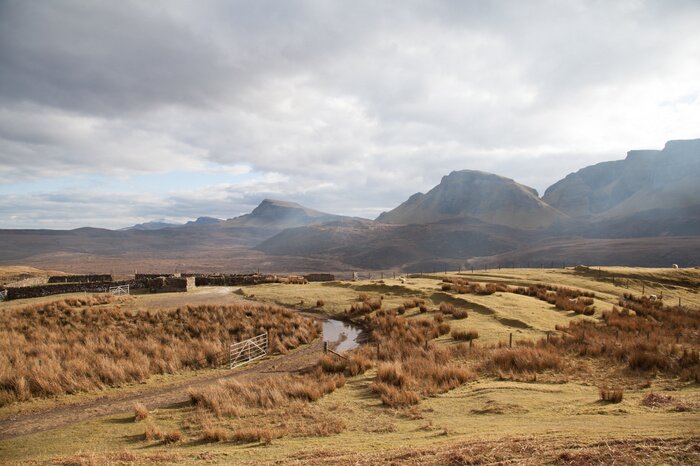
Let’s fast forward 10 months or so. I've tried to work on this image for months, briefly returning to it as and when I’m in the mood to have a play with some images. I've always felt there was an image to be made here, I don’t know why, I’ve just felt it, or maybe I’ve just wanted to believe there is an image that works here.
So, what is wrong with it? Well my thoughts. I’m standing in the wrong place for a start. I was originally standing about 10 metres further to the left and slightly lower so the track was a much stronger lead in line. The problem with that though was the gate was more end-on and so less of a feature. I like that gate, even if it is metal. I would have been shooting at an angle that would have included more of the ridge on the right hand side, this may have balanced it a little. As it is, it is too heavy on the right hand side. But, the major problem would have been the Sun, it would have been super-bright on the right hand side, rather than just bright as it is now. I would have been shooting into the light almost certainly. So, maybe by moving I might not be standing in the place I wanted to be, but the elements are at least almost working for me where I am. Because of that, I just haven’t been happy with any of the edits I’ve created over the months. I’ve cropped it here and there, added filters in post-processing (using Lightroom), done all sorts, and still I’ve not been happy with it. Perhaps I should just face up to the fact that it won’t work no matter what I do to it. "You can't polish a turd" I think the saying goes. I’m normally a firm believer that the final image should be obvious from the RAW, i.e. I should be able to imagine what the final image should be before I even get the unprocessed RAW off the card and onto my PC. I just can’t imagine that with this particular image, and it is frustrating, very frustrating, but for some reason I've just not been willing to let it go.
A couple of weeks ago I thought I’d have one last look, so I played with it again. I guess I got it to maybe 75% of what I wanted it to be. It was then I thought I’d seek some advice on Twitter from some of the rather helpful photographers who inhabit that ether. I posted my “75%” image and asked them to “Rip It Apart”. I started to get a quite decent response, some crop suggestions, some suggestions about the gate, the middle ground lacking contrast, etc. I think someone then asked if they could have a play with it and it was at that point my mind turned to Pete Bridgwood. Last year, Pete posted one of his images, of Rhue Lighthouse and asked people to “Render my RAW”. Lots of folks took his unprocessed RAW image and processed it in their styles with their vision. Some of the final versions were quite remarkable. You can read his blog on the subject here. Anyway, I thought why not? So, I posted my unprocessed RAW and asked folks to “Render” it to make it work…if it could work at all.
In Part 2 of this blog I’ll post the responses of the kind folks who played with my RAW image to see what they chose to do with them!
Late in the day we headed North past the Old Man of Storr towards the Northern end of the Trotternish Ridge, specifically to a geological feature called the Quiraing, a rather large millennial old landslip that is still moving today, a place I had not previously visited. As we approached the turn off from the main road, we could see that the local rangers were burning heather and the smoke was being blown towards the escarpment creating a rather cool misty effect in the occasional shafts of sunlight that were peppering the landscape. Keen to capture this we drove very slowly up that road trying to find a composition from the roadside but everything was conspiring against us. The smoke was dying out, the cloud was thickening thus blocking the Sun more and the landscape was, well, quite empty. There was nothing immediately obvious to make foreground interest. A lot of the landscape in this type of area is covered with old dry-stone walls and the odd sheepfold, but even they were proving to be elusive, and then like our minds were being read, we came across what appeared to be some sheepfolds that were being lit up by the late afternoon sunshine. Stopping the car we both grabbed our cameras (no time for tripod and filters, etc) and I ran back down the road to be in line with a track and a gate that ran towards the distant hills. Of course, by the time I got there, the cloud had covered the Sun. I didn't even fire a shot. Walking back to the car rather annoyed at myself for not having trained harder at the gym, the Sun briefly appeared again. Not quite in the spot I wanted to be, but eager to capture the light a least where I wanted it to be, I took the shot, handheld and without really thinking. Instinctive Aiming, I believe it is called, when you just raise your gun or bow (or in this case camera) and shoot without properly aiming down the sight. More often than not you’ll hit your target. The result was this (unprocessed RAW, jpg conversion):

Let’s fast forward 10 months or so. I've tried to work on this image for months, briefly returning to it as and when I’m in the mood to have a play with some images. I've always felt there was an image to be made here, I don’t know why, I’ve just felt it, or maybe I’ve just wanted to believe there is an image that works here.
So, what is wrong with it? Well my thoughts. I’m standing in the wrong place for a start. I was originally standing about 10 metres further to the left and slightly lower so the track was a much stronger lead in line. The problem with that though was the gate was more end-on and so less of a feature. I like that gate, even if it is metal. I would have been shooting at an angle that would have included more of the ridge on the right hand side, this may have balanced it a little. As it is, it is too heavy on the right hand side. But, the major problem would have been the Sun, it would have been super-bright on the right hand side, rather than just bright as it is now. I would have been shooting into the light almost certainly. So, maybe by moving I might not be standing in the place I wanted to be, but the elements are at least almost working for me where I am. Because of that, I just haven’t been happy with any of the edits I’ve created over the months. I’ve cropped it here and there, added filters in post-processing (using Lightroom), done all sorts, and still I’ve not been happy with it. Perhaps I should just face up to the fact that it won’t work no matter what I do to it. "You can't polish a turd" I think the saying goes. I’m normally a firm believer that the final image should be obvious from the RAW, i.e. I should be able to imagine what the final image should be before I even get the unprocessed RAW off the card and onto my PC. I just can’t imagine that with this particular image, and it is frustrating, very frustrating, but for some reason I've just not been willing to let it go.
A couple of weeks ago I thought I’d have one last look, so I played with it again. I guess I got it to maybe 75% of what I wanted it to be. It was then I thought I’d seek some advice on Twitter from some of the rather helpful photographers who inhabit that ether. I posted my “75%” image and asked them to “Rip It Apart”. I started to get a quite decent response, some crop suggestions, some suggestions about the gate, the middle ground lacking contrast, etc. I think someone then asked if they could have a play with it and it was at that point my mind turned to Pete Bridgwood. Last year, Pete posted one of his images, of Rhue Lighthouse and asked people to “Render my RAW”. Lots of folks took his unprocessed RAW image and processed it in their styles with their vision. Some of the final versions were quite remarkable. You can read his blog on the subject here. Anyway, I thought why not? So, I posted my unprocessed RAW and asked folks to “Render” it to make it work…if it could work at all.
In Part 2 of this blog I’ll post the responses of the kind folks who played with my RAW image to see what they chose to do with them!
2013 Review
07th January 2014 - 0 comments
07th January 2014 - 0 comments
Apologies, the website is in a bit of disarray currently, I've removed some images, moved others and not yet uploaded most of 2013! This will not happen again in 2014, I promise to keep things a little bit more up-to-date, however, first of all I need to get the house in order for what turned out to be a rather good 2013.
Perhaps the most important thing that happened in 2013, after of course spending time with my wife on honeymoon (blog on that soon) and buying a house, was becoming more active on social media specifically with the aim of broadening my photographic horizon. The main platform for this was Twitter (@Mountainman76).
There is a huge community of photographers on Twitter, most I interact with are UK based, but some are International, and we share everything we love about photography from locations, techniques, images to just plain old good banter. It has been a great learning platform and it is good to get helpful feedback from seasoned pro's and fellow enthusiasts alike on what works and what doesn't in an image. A lot of the guys (and gals) on there write their own informative blogs expressing detailed knowledge from processing techniques to gear reviews. A part of me would like to get in on that act but truth be told I don't think I have anything new to add in that regard, there are folks out there far more knowledgeable about these things than me and most of it has been written before. I'm far happier to keep learning but I chip in when I feel I have something to add, even if it is only humour.
10 Favourite Images by other Photographers
It is only fair that I share with you my 10 favourite images posted in 2013 from folks I know on Twitter. I've already done this on that platform, but just to keep things together here they are, in no particular order and with an explanation for each:
Click the titles to link to the image.
1. The Viewers by Terry Gibbins
Terry is a London Cab driver who moonlights as a photographer. He has similar views on the use of Twitter as a platform to develop photography and apart from that he is a thoroughly nice geezer who I've had the pleasure to meet a number of times this year. This image was taken at the British Museum in London, a wonderful destination for any photographer interested in Architecture. It is such a simple image in many ways, I love that line of the handrail bisecting the image. When I look at it I can't help but wonder what the two people are thinking as they stand their looking at the inscriptions on the wall.
2. Loughton Camp by Nigel Morton
This image was highly commended in this years Landscape Photographer of the Year competition and was the judges choice of Colin Prior (more on him later). Created as a panorama by stitching a number of images from a Canon 450D it is wonderous on the small screen and even more so in real life when blown up to 5 1/2 feet wide! Not to take anything away from the winner of the competition, many people I've spoken to felt this image should have won overall, I was one of them. The competition kind of lost it's way a little in recent years and courted controversy in 2012 when the winner was disqualified for over manipulation of his image in the Classic View category. A wholesale change in judges for 2013 meant that images like this got shortlisted and eventually got the recognition they deserved...I do believe this image was submitted in 2012 and was overlooked then, a minor crime in my opinion.
3. Incoming by Duncan Fawkes
Duncan took this image a few years back on a visit to Australia. He posted a wider version of it that also included some sky on Twitter this year which caught my eye. I've become quite interested in 1:1 crop in recent times and I saw this at the height of that interest. I suggested to Duncan that he re-crop along these lines to exclude the sky and create a far more claustrophobic image and the result is this, I for one love it. The credit is all Duncan's but this image just goes to show how just cropping in post-processing can totally transform the effect an image has on the viewer and how collaboration on ideas can help fellow photographers.
4. Sunset on 5th Avenue by Valda Bailey
Valda is very rapidly becoming THE master of ICM (Intentional Camera Movement) and ME (Multiple Exposure) in-camera technique. Her Canon 5DmkIII allows her to take a shot and overlay it with another and another in camera (not in post-processing). Combining this with a spot of ICM means she creates some wonderful dreamlike images, they almost look like paintings. This particular one seemed to garner the most positive praise by folks online and I have to agree it is quite magical.
5. Born to Fly by Russ Barnes
Russ shot this image right at the end of the year. It is all too tempting with landscape to take shots at the wide end, but that just doesn't work very well in dense woodland (as I've discovered). Russ used a 70-200 lens here and in doing so was able to layer and separate the image to make the single tree really stand out against the background. Apart from being technically a really great image, the composition is fantastic. There really isn't much else I can say, it just works and I love it.
6. Border Towns Burn by Andy Gray
I had the pleasure of meeting up with Andy back in November up on the Northumberland coast where he lives. Andy is very much a post-processing type of man, he loves to spend hours working on an image in post-processing to create something that really pops. That is not to say he doesn't get a shot right in camera, he is more than capable of that, he just likes to create what some would perhaps call art. He has been experimenting with ICM and ME much like Valda Bailey and this is one of his efforts from the later part of the year, taken in Berwick. Quite similar in some respects to Valda's shot above, I think Andy's is different enough to warrant a spot in my favourites in its own right.
7. Wind Blown Tree by Robin Hudson
Robin is quite new to the scene on Twitter, but his Flickr feed shows he is a salty old dog when it comes to photography. I really do like his work, he shows great thought in almost every image from his travels. This image stands out to me. He posted it about the same time every man and his dog was shooting at Padley Gorge in the Peak District in Autumn. After a while each image seemed to begin to blend into each other, it was autumn tree overload...and then I stumbled across this and I actually thought it was incredible, not sure why, that was just my thought. Dav Thomas is kind of the master of trees right now and this images was the one that I thought could compete easily with Dav's, I can't give higher praise than that.
8. Parkhouse and Chrome Hill by Steve Tucker
I've spent a lot of my time over the last 5 years in the Peak District. I've walked over these hills many times in all weather, but complete snow cover evades me (except for one notable walk around Bamford in 2010). When I think of the Peak District and photography this is the image that I want to capture in my head, and Steve got there first, I'm gutted, but at the same time think this is a cracker and Steve deserves the commendation he got in Landscape Photographer of the Year for it.
9. Orange by Finn Hopson
Finn shoots almost exclusively around Brighton and the South Downs. His imagery from this area is magnificent and he is a case in point of using your knowledge of the local area to your best advantage. To be honest I could have posted at least 10 of his images from this year in this list, but for me it is this one shot in Dorset that stands out. Colmers hill has been shot hundreds of times by a myriad of photographers, but this shot to me explodes off the screen. I'm a big fan of silhouettes and sunsets as it is, but the vivid colouring here take this to another level. Every time I see it it reminds me of warmer times.
10. Light and Shadow by Duncan Fawkes
A second entry for Duncan, it has nothing to do with the fact he bought the first round when we met up at the Landscape Photographer of the Year exhibition ;) But, truth be told, if I had to pick an absolute favourite from the year, then this would be it. I love this part of the Scotland, in fact it is my favourite part of the UK and maybe the World, well at least the parts I've visited. I've shot from this spot on a number of occasions myself, but I've never been fortunate enough to get such changeable conditions as Duncan had, it's a photographers delight. Suilven all dark and brooding under the heavy skies and the warm side lighting together with a rainbow just demonstrate the contrasting and wild conditions that match the overall landscape here and I think that is what I love about it, everything about it says Scottish Highlands to me, the landscape, the elements, all mixing together, intrinsically linked. The only way it could be improved (IMO) is if there was a dusting of snow...which is why there is still reason to go back and shoot it again.
So, that is that, my favourite images I first saw in 2013 (not all shot in 2013). There are some notable photographers missing from that list that deserve a mention, the likes of Richard Hurst, Stephen McGill, Alex Nail, Lizzie Shepherd, Aaron Yeoman, Mat Robinson, Andrew Atkinson, David Baker and numerous others have produced images that I look at in wonder and draw inspiration from. Keep up the good work folks!
I should also give special mention to David Breen. Back in the summer I offered to do a little piece of work for him as he took steps to become a book publishing magnate. In return he kindly offered me a spare ticket to the private view of Landscape Photographer of the Year in London which was a great event and he also sorted me out with some replacement filters and a filter holder I accidentally broke during a shoot, none of which come particularly cheap. Thanks Bud. The first books his fledgling company has published are With Trees and Seafever both of which are cracking and well worth purchasing.
Competitions
I started entering the odd competition this year having only previously bothered with Landscape Photographer of the Year (1 shortlisted entry in 2012). I tried that one again this year but missed out on any getting shortlisted, I think my entry got lost in the system somewhere ;). However, I did win a couple of comps during the later half of the year. I won Photo of the Month for Light and Land on their facebook page back in October with my image "Hole in the Wall" below. I won a place on a one day workshop sometime in 2014 for that...which reminds me, I need to book it!
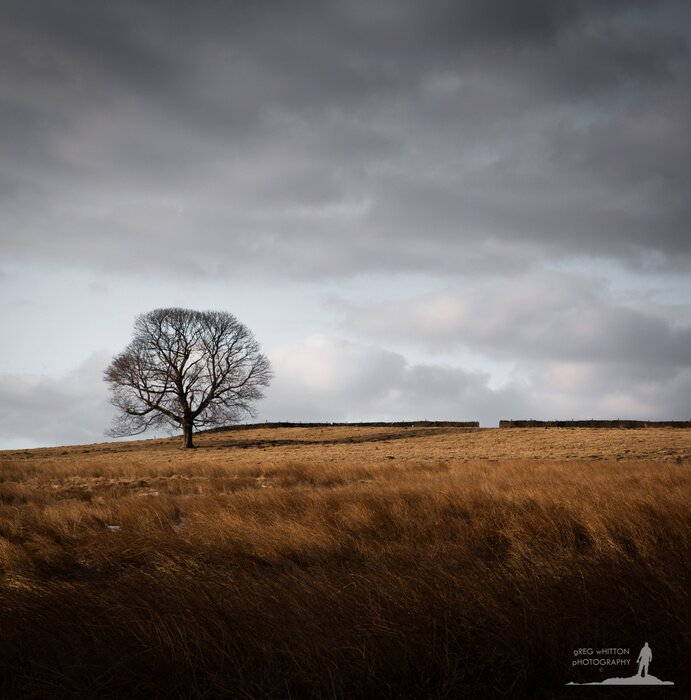
I also won a competition in December for Outdoor Photography magazine in association with Lowepro. They were offering an exclusive workshop in Glencoe in February with Colin Prior (one of the foremost Landscape Photographers) as well as a Lowepro backpack. My image will be featured in the February edition of the magazine and I will be attending the workshop along with two other entrants in two other competitions. My winning image chosen by Colin Prior was "Last Light" below.
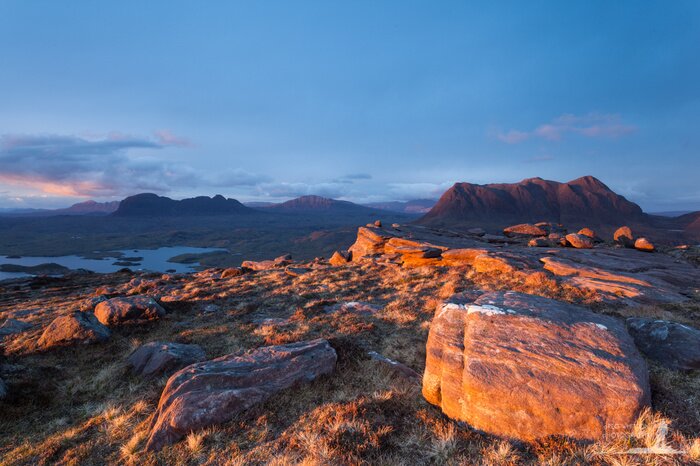
To add to that in December I placed 3rd in a competition for Theprintspace a print studio and gallery, for my image "Torridon - The Valley of the Lost (Reloaded)". I win 3x prints, some paper and a blog feature on their website.
My Favourite Images by Me
Actually this is quite hard, I want to only pick 3 but I seem to have done quite a lot this year, Namibia was a highlight of course, but I've climbed Germany's highest Mountain, shared great times with friends in Scotland, the Lake District, and Snowdonia, done some great walks, even scored a touchdown in one of my last games for the Nottingham Caesars, as well as spending some time shooting the odd image. So, here goes, in no particular order:
1. Twins
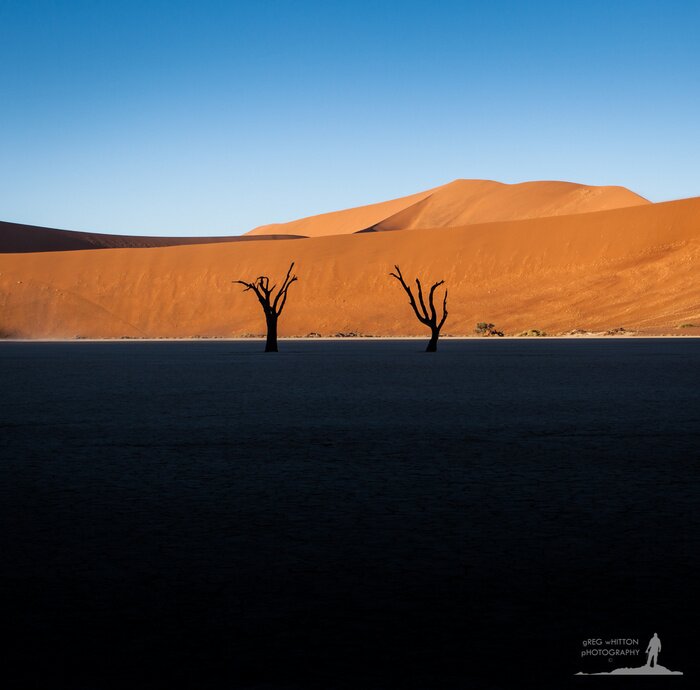
Shot at Deadvlei in Namibia these trees are on almost every photographers bucket list. They've been shot in all conditions and all times of day, it is so hard to be original. I wouldn't say my shot is original, but the stark contrast between shadow, the orange sand, the blue sky and the 1:1 crop makes this a particular favourite for me.
2. The Source
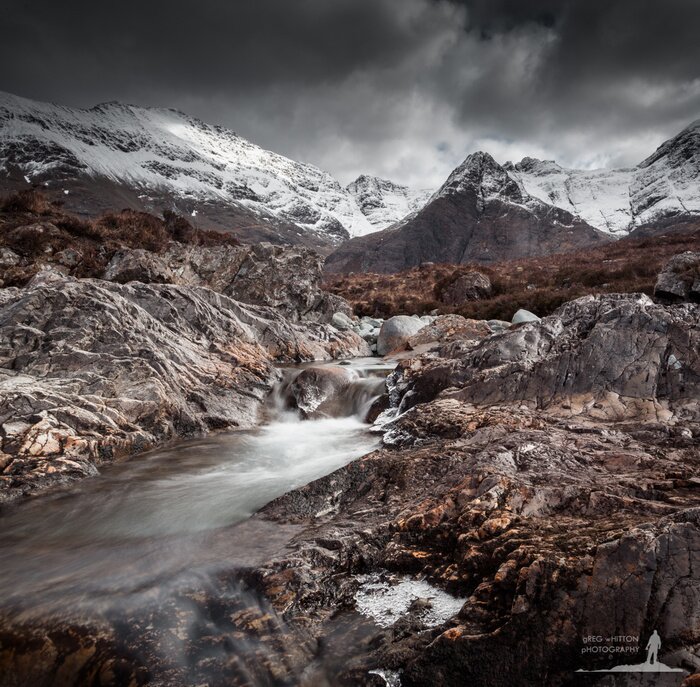
Shot on a trip to Fort William back in March, a friend and I set off at 3am to reach Elgol on the Isle of Skye for sunrise. The sunrise itself was nice, but with no cloud at all in the sky it did not make for a great photo-shoot, Alpenglow on the snow-capped peaks of the Black Cuillin was as good as it got. By the time we got around to the other side of the mountains to the Fairy Pools in Glen Brittle (via a hearty breakfast)
the cloud had begun to role in. This was one of the last images I took and for months it sat on my hard-drive, it didn't quite pop. I then started experimenting with selective colour toning in post-processing. Some small adjustments to the blue and red channels made huge differences to the tonality of the image. This went from being flat and uninspired to bringing out an almost metallic look in the rocks. Using a 1:1 crop again, I am really pleased with the result.
3. God Ray
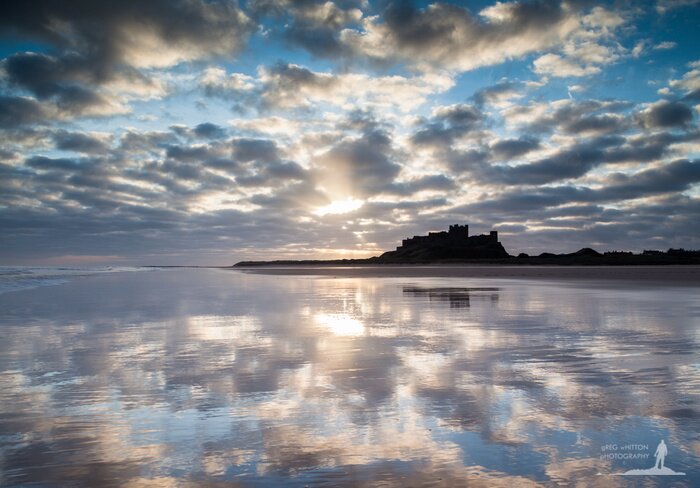
Following one of the most uninspiring sunrises I've ever had the misfortune to witness (wasn't quite worth sleeping in the car for), Andy Gray, Paul Kirby and myself were heading along the beach at Bamburgh to shoot a wreck that had only been uncovered in recent years when this huge ray of light burst through the clouds. Noticing the potential for a half decent reflection in the withdrawing waves I told the others to stop as I ran towards the sea, planted my tripod (camera and filters already attached as I was being lazy carrying between locations), composed and fired, all in about 10 seconds before 1. I got hit with the next wave and 2. my tripod sunk ruining my composition. The result was this, which was worth suffering the tuts of disapproval from the other two as I made them wait.
Quite a year in many ways, new techniques, new friends, new possibilities, hoping 2014 will prove to be even more exciting!
Perhaps the most important thing that happened in 2013, after of course spending time with my wife on honeymoon (blog on that soon) and buying a house, was becoming more active on social media specifically with the aim of broadening my photographic horizon. The main platform for this was Twitter (@Mountainman76).
There is a huge community of photographers on Twitter, most I interact with are UK based, but some are International, and we share everything we love about photography from locations, techniques, images to just plain old good banter. It has been a great learning platform and it is good to get helpful feedback from seasoned pro's and fellow enthusiasts alike on what works and what doesn't in an image. A lot of the guys (and gals) on there write their own informative blogs expressing detailed knowledge from processing techniques to gear reviews. A part of me would like to get in on that act but truth be told I don't think I have anything new to add in that regard, there are folks out there far more knowledgeable about these things than me and most of it has been written before. I'm far happier to keep learning but I chip in when I feel I have something to add, even if it is only humour.
10 Favourite Images by other Photographers
It is only fair that I share with you my 10 favourite images posted in 2013 from folks I know on Twitter. I've already done this on that platform, but just to keep things together here they are, in no particular order and with an explanation for each:
Click the titles to link to the image.
1. The Viewers by Terry Gibbins
Terry is a London Cab driver who moonlights as a photographer. He has similar views on the use of Twitter as a platform to develop photography and apart from that he is a thoroughly nice geezer who I've had the pleasure to meet a number of times this year. This image was taken at the British Museum in London, a wonderful destination for any photographer interested in Architecture. It is such a simple image in many ways, I love that line of the handrail bisecting the image. When I look at it I can't help but wonder what the two people are thinking as they stand their looking at the inscriptions on the wall.
2. Loughton Camp by Nigel Morton
This image was highly commended in this years Landscape Photographer of the Year competition and was the judges choice of Colin Prior (more on him later). Created as a panorama by stitching a number of images from a Canon 450D it is wonderous on the small screen and even more so in real life when blown up to 5 1/2 feet wide! Not to take anything away from the winner of the competition, many people I've spoken to felt this image should have won overall, I was one of them. The competition kind of lost it's way a little in recent years and courted controversy in 2012 when the winner was disqualified for over manipulation of his image in the Classic View category. A wholesale change in judges for 2013 meant that images like this got shortlisted and eventually got the recognition they deserved...I do believe this image was submitted in 2012 and was overlooked then, a minor crime in my opinion.
3. Incoming by Duncan Fawkes
Duncan took this image a few years back on a visit to Australia. He posted a wider version of it that also included some sky on Twitter this year which caught my eye. I've become quite interested in 1:1 crop in recent times and I saw this at the height of that interest. I suggested to Duncan that he re-crop along these lines to exclude the sky and create a far more claustrophobic image and the result is this, I for one love it. The credit is all Duncan's but this image just goes to show how just cropping in post-processing can totally transform the effect an image has on the viewer and how collaboration on ideas can help fellow photographers.
4. Sunset on 5th Avenue by Valda Bailey
Valda is very rapidly becoming THE master of ICM (Intentional Camera Movement) and ME (Multiple Exposure) in-camera technique. Her Canon 5DmkIII allows her to take a shot and overlay it with another and another in camera (not in post-processing). Combining this with a spot of ICM means she creates some wonderful dreamlike images, they almost look like paintings. This particular one seemed to garner the most positive praise by folks online and I have to agree it is quite magical.
5. Born to Fly by Russ Barnes
Russ shot this image right at the end of the year. It is all too tempting with landscape to take shots at the wide end, but that just doesn't work very well in dense woodland (as I've discovered). Russ used a 70-200 lens here and in doing so was able to layer and separate the image to make the single tree really stand out against the background. Apart from being technically a really great image, the composition is fantastic. There really isn't much else I can say, it just works and I love it.
6. Border Towns Burn by Andy Gray
I had the pleasure of meeting up with Andy back in November up on the Northumberland coast where he lives. Andy is very much a post-processing type of man, he loves to spend hours working on an image in post-processing to create something that really pops. That is not to say he doesn't get a shot right in camera, he is more than capable of that, he just likes to create what some would perhaps call art. He has been experimenting with ICM and ME much like Valda Bailey and this is one of his efforts from the later part of the year, taken in Berwick. Quite similar in some respects to Valda's shot above, I think Andy's is different enough to warrant a spot in my favourites in its own right.
7. Wind Blown Tree by Robin Hudson
Robin is quite new to the scene on Twitter, but his Flickr feed shows he is a salty old dog when it comes to photography. I really do like his work, he shows great thought in almost every image from his travels. This image stands out to me. He posted it about the same time every man and his dog was shooting at Padley Gorge in the Peak District in Autumn. After a while each image seemed to begin to blend into each other, it was autumn tree overload...and then I stumbled across this and I actually thought it was incredible, not sure why, that was just my thought. Dav Thomas is kind of the master of trees right now and this images was the one that I thought could compete easily with Dav's, I can't give higher praise than that.
8. Parkhouse and Chrome Hill by Steve Tucker
I've spent a lot of my time over the last 5 years in the Peak District. I've walked over these hills many times in all weather, but complete snow cover evades me (except for one notable walk around Bamford in 2010). When I think of the Peak District and photography this is the image that I want to capture in my head, and Steve got there first, I'm gutted, but at the same time think this is a cracker and Steve deserves the commendation he got in Landscape Photographer of the Year for it.
9. Orange by Finn Hopson
Finn shoots almost exclusively around Brighton and the South Downs. His imagery from this area is magnificent and he is a case in point of using your knowledge of the local area to your best advantage. To be honest I could have posted at least 10 of his images from this year in this list, but for me it is this one shot in Dorset that stands out. Colmers hill has been shot hundreds of times by a myriad of photographers, but this shot to me explodes off the screen. I'm a big fan of silhouettes and sunsets as it is, but the vivid colouring here take this to another level. Every time I see it it reminds me of warmer times.
10. Light and Shadow by Duncan Fawkes
A second entry for Duncan, it has nothing to do with the fact he bought the first round when we met up at the Landscape Photographer of the Year exhibition ;) But, truth be told, if I had to pick an absolute favourite from the year, then this would be it. I love this part of the Scotland, in fact it is my favourite part of the UK and maybe the World, well at least the parts I've visited. I've shot from this spot on a number of occasions myself, but I've never been fortunate enough to get such changeable conditions as Duncan had, it's a photographers delight. Suilven all dark and brooding under the heavy skies and the warm side lighting together with a rainbow just demonstrate the contrasting and wild conditions that match the overall landscape here and I think that is what I love about it, everything about it says Scottish Highlands to me, the landscape, the elements, all mixing together, intrinsically linked. The only way it could be improved (IMO) is if there was a dusting of snow...which is why there is still reason to go back and shoot it again.
So, that is that, my favourite images I first saw in 2013 (not all shot in 2013). There are some notable photographers missing from that list that deserve a mention, the likes of Richard Hurst, Stephen McGill, Alex Nail, Lizzie Shepherd, Aaron Yeoman, Mat Robinson, Andrew Atkinson, David Baker and numerous others have produced images that I look at in wonder and draw inspiration from. Keep up the good work folks!
I should also give special mention to David Breen. Back in the summer I offered to do a little piece of work for him as he took steps to become a book publishing magnate. In return he kindly offered me a spare ticket to the private view of Landscape Photographer of the Year in London which was a great event and he also sorted me out with some replacement filters and a filter holder I accidentally broke during a shoot, none of which come particularly cheap. Thanks Bud. The first books his fledgling company has published are With Trees and Seafever both of which are cracking and well worth purchasing.
Competitions
I started entering the odd competition this year having only previously bothered with Landscape Photographer of the Year (1 shortlisted entry in 2012). I tried that one again this year but missed out on any getting shortlisted, I think my entry got lost in the system somewhere ;). However, I did win a couple of comps during the later half of the year. I won Photo of the Month for Light and Land on their facebook page back in October with my image "Hole in the Wall" below. I won a place on a one day workshop sometime in 2014 for that...which reminds me, I need to book it!

I also won a competition in December for Outdoor Photography magazine in association with Lowepro. They were offering an exclusive workshop in Glencoe in February with Colin Prior (one of the foremost Landscape Photographers) as well as a Lowepro backpack. My image will be featured in the February edition of the magazine and I will be attending the workshop along with two other entrants in two other competitions. My winning image chosen by Colin Prior was "Last Light" below.

To add to that in December I placed 3rd in a competition for Theprintspace a print studio and gallery, for my image "Torridon - The Valley of the Lost (Reloaded)". I win 3x prints, some paper and a blog feature on their website.
My Favourite Images by Me
Actually this is quite hard, I want to only pick 3 but I seem to have done quite a lot this year, Namibia was a highlight of course, but I've climbed Germany's highest Mountain, shared great times with friends in Scotland, the Lake District, and Snowdonia, done some great walks, even scored a touchdown in one of my last games for the Nottingham Caesars, as well as spending some time shooting the odd image. So, here goes, in no particular order:
1. Twins

Shot at Deadvlei in Namibia these trees are on almost every photographers bucket list. They've been shot in all conditions and all times of day, it is so hard to be original. I wouldn't say my shot is original, but the stark contrast between shadow, the orange sand, the blue sky and the 1:1 crop makes this a particular favourite for me.
2. The Source

Shot on a trip to Fort William back in March, a friend and I set off at 3am to reach Elgol on the Isle of Skye for sunrise. The sunrise itself was nice, but with no cloud at all in the sky it did not make for a great photo-shoot, Alpenglow on the snow-capped peaks of the Black Cuillin was as good as it got. By the time we got around to the other side of the mountains to the Fairy Pools in Glen Brittle (via a hearty breakfast)
the cloud had begun to role in. This was one of the last images I took and for months it sat on my hard-drive, it didn't quite pop. I then started experimenting with selective colour toning in post-processing. Some small adjustments to the blue and red channels made huge differences to the tonality of the image. This went from being flat and uninspired to bringing out an almost metallic look in the rocks. Using a 1:1 crop again, I am really pleased with the result.
3. God Ray

Following one of the most uninspiring sunrises I've ever had the misfortune to witness (wasn't quite worth sleeping in the car for), Andy Gray, Paul Kirby and myself were heading along the beach at Bamburgh to shoot a wreck that had only been uncovered in recent years when this huge ray of light burst through the clouds. Noticing the potential for a half decent reflection in the withdrawing waves I told the others to stop as I ran towards the sea, planted my tripod (camera and filters already attached as I was being lazy carrying between locations), composed and fired, all in about 10 seconds before 1. I got hit with the next wave and 2. my tripod sunk ruining my composition. The result was this, which was worth suffering the tuts of disapproval from the other two as I made them wait.
Quite a year in many ways, new techniques, new friends, new possibilities, hoping 2014 will prove to be even more exciting!
Wonderful Namibia
29th May 2013 - 0 comments
29th May 2013 - 0 comments
Please take a look at my latest work portfolio for images of my recent trip to Namibia (which was also mine and Lisa's belated honeymoon!). A full write-up will follow soon.
Studio Work with Michael Lau
25th October 2012 - 0 comments
25th October 2012 - 0 comments
As you know my first passion like many enthusiast photographers is landscapes. But, that is not to say I'm not interested in other aspects of photography. I'll be the first to admit I have absolutely no clue about studio photography and the use of lighting systems...at least I didn't until recently.
As a birthday gift I received a Studio Photography workshop session with Nottingham based photographer Michael Lau. The session included the basic principles of studio lighting and the opportunity to work with a model with our own cameras. It quickly became apparent to me that the technical aspects of lighting and how it interacts with the camera system you use isn't actually that difficult to understand...the hardest part is perhaps having the creativity of mind and the ability to communicate your thoughts to the model.
Thankfully the model Michael used in our session, Jess, didn't require too much prompting and although I certainly wasn't a natural at direction, I was able to capture some nice shots.
Michael himself was extremely friendly and full of knowledge that he couldn't wait to impart on his clients. He was also willing to provide feedback on post-processing after the workshop. He regularly runs workshops through his Photo Academy and I'll almost certainly call upon his services again in the future. He's not a bad photographer either!
Here are a few of the images I took of Jess from the session. Model courtesy of Michael Lau Photography.
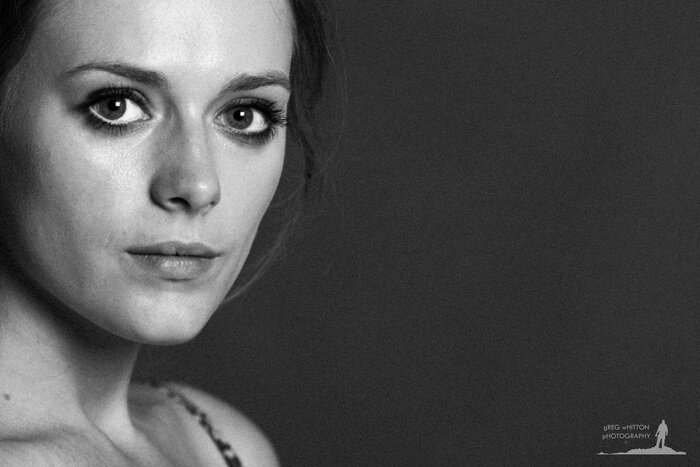
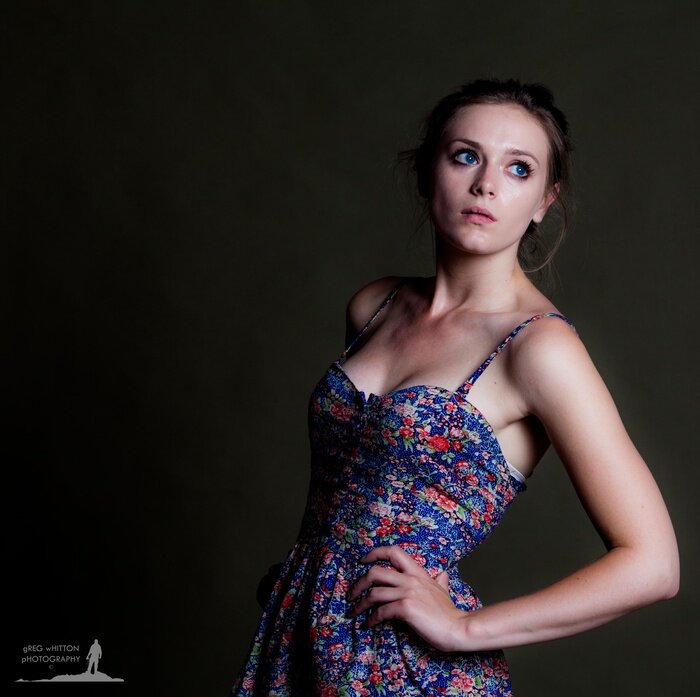
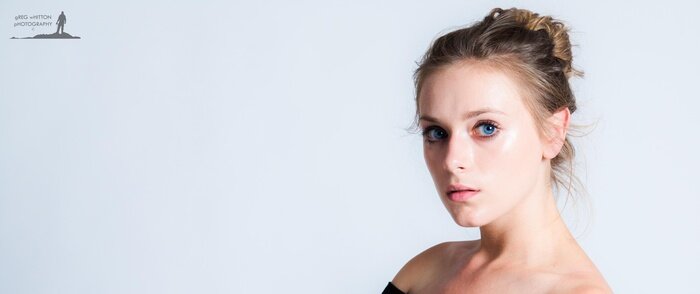
As a birthday gift I received a Studio Photography workshop session with Nottingham based photographer Michael Lau. The session included the basic principles of studio lighting and the opportunity to work with a model with our own cameras. It quickly became apparent to me that the technical aspects of lighting and how it interacts with the camera system you use isn't actually that difficult to understand...the hardest part is perhaps having the creativity of mind and the ability to communicate your thoughts to the model.
Thankfully the model Michael used in our session, Jess, didn't require too much prompting and although I certainly wasn't a natural at direction, I was able to capture some nice shots.
Michael himself was extremely friendly and full of knowledge that he couldn't wait to impart on his clients. He was also willing to provide feedback on post-processing after the workshop. He regularly runs workshops through his Photo Academy and I'll almost certainly call upon his services again in the future. He's not a bad photographer either!
Here are a few of the images I took of Jess from the session. Model courtesy of Michael Lau Photography.



Olympics
25th October 2012 - 0 comments
25th October 2012 - 0 comments
Back in August like most of the country I was gripped by Olympic fever. I already had tickets to go see the Modern Pentathlon at Greenwich Park, but I really wanted to see the Athletics...it was always one of my bucket list items to watch Athletics at the Olympics. After the infamous 1st ballot of tickets I was unsuccessful. Feeling somewhat cheated by the system, I didn't bother with the 2nd ballot and had resigned myself to watching it all on TV.
However, after the Games started and it became apparent that tickets where becoming available all the time due to no-shows of officials and other parties, I like many many thousands of others became addicted to refreshing the ticketing site in the search for one-off ticket opportunities. Then at exactly 4pm on Friday 10th August during the last days of the Games and almost at the point of giving up, I bagged a ticket for the Athletics finals that evening. Que a mad dash down the M1 and then across to the Olympic Park at Stratford I arrived only having missed a couple of minor events. I can't tell you how exciting it was, the only way it could have been better is if it had been for the following night when Mo Farah won his 2nd Gold of the Games in the 5000m. But, I'll settle for watching the USA finally break the Women's 4x100m World Record 27 years after the previous best by the old East Germany.
Here are 3 images from that visit to the Games.
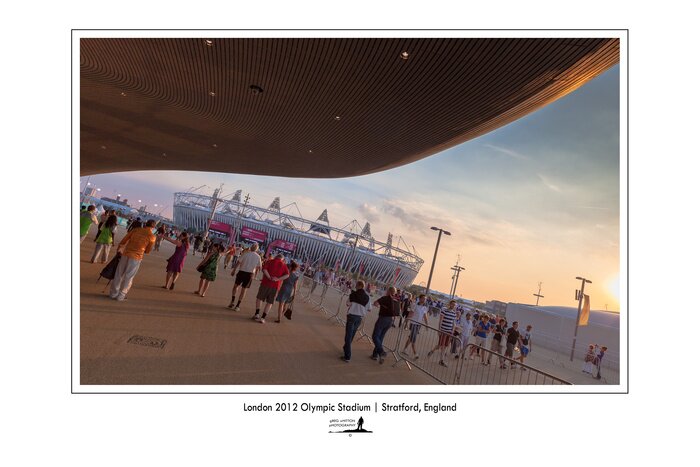
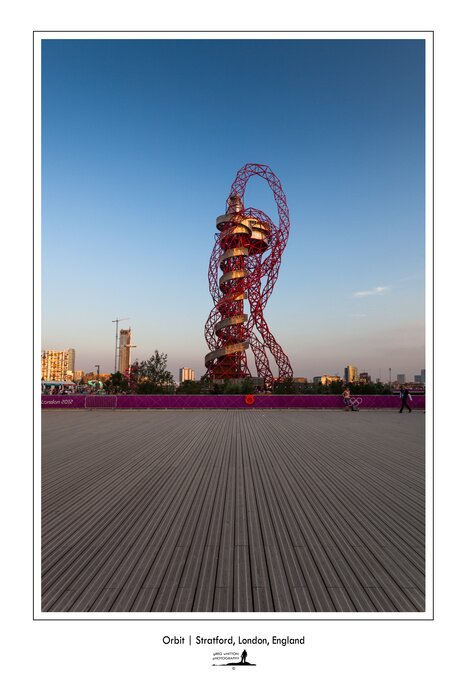
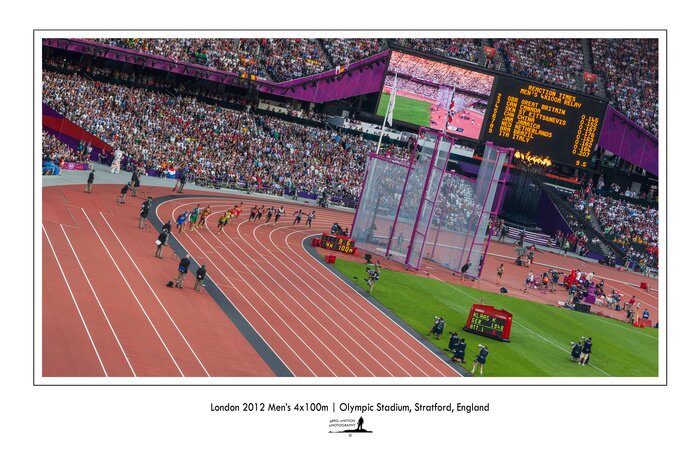
However, after the Games started and it became apparent that tickets where becoming available all the time due to no-shows of officials and other parties, I like many many thousands of others became addicted to refreshing the ticketing site in the search for one-off ticket opportunities. Then at exactly 4pm on Friday 10th August during the last days of the Games and almost at the point of giving up, I bagged a ticket for the Athletics finals that evening. Que a mad dash down the M1 and then across to the Olympic Park at Stratford I arrived only having missed a couple of minor events. I can't tell you how exciting it was, the only way it could have been better is if it had been for the following night when Mo Farah won his 2nd Gold of the Games in the 5000m. But, I'll settle for watching the USA finally break the Women's 4x100m World Record 27 years after the previous best by the old East Germany.
Here are 3 images from that visit to the Games.



Take a View, Landscape Photographer of the Year Award - Shortlist
22nd October 2012 - 0 comments
22nd October 2012 - 0 comments
Back in July I found out one of my images from the recent trip to Scotland was shortlisted in the Landscape Photographer of the Year Award, an annual competition that is the brainchild of renowned photographer Charlie Waite, operated by Take a View and sponsored by The Sunday Times and Network Rail among others.
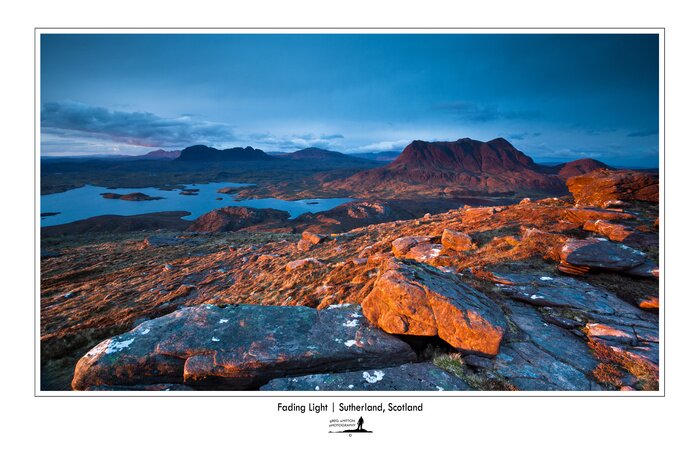
The eventual winner will run off with a rather handsome prize, but for the majority this competition is more about exposure. Along with the winner, many images that are commended or highly commended and will feature in an exhibition at the National Theatre in London from November into next year. All of those commended will also feature in the Landscape Photographer of the Year Vol. 6 book, published by AA Publishing.
For me, this is the first time I've entered any images, so to get one shortlisted feels like quite an achievement, whether it is commended or wins a prize or not. We'll find out at the end of October who the winner is.

The eventual winner will run off with a rather handsome prize, but for the majority this competition is more about exposure. Along with the winner, many images that are commended or highly commended and will feature in an exhibition at the National Theatre in London from November into next year. All of those commended will also feature in the Landscape Photographer of the Year Vol. 6 book, published by AA Publishing.
For me, this is the first time I've entered any images, so to get one shortlisted feels like quite an achievement, whether it is commended or wins a prize or not. We'll find out at the end of October who the winner is.
Assynt, Kintail and Mhor
20th May 2012 - 0 comments
20th May 2012 - 0 comments
It's been a long time since I've been able to add anything to the blog. Christmas got in the way, and then work took over my life for what seemed like an eternity. Lisa and I also got engaged, the Wedding will be in October, so we've been somewhat preoccupied. My own photography has had to take a backseat to finding a photographer for the Wedding...and I must say there are some superb photographers out there, REALLY superb. It took us 4 months to decide simply because I was probably being overly critical about every last detail of potential candidates portfolios! Who am I, David Bailey? Colin Prior? Joe Cornish?...nope, just a berk who thinks he knows more than he does.
After all that we were really looking forward to a relaxing break that had been planned since last year. We and 12 other friends hired a large cottage in Glenelg across the water from the Isle of Skye for a week at the beginning of May. It's an absolutely fantastic cottage in a superb location for scenary and wildlife. I take no hesitation in recommending it. Creagan Mhor Cottage.
During the week we spent there, I took time out to do quite a bit of photography. I probably put 700+ miles on the car for that alone. I think the highlight was a day trip to my favourite part of the British Isles, the Assynt region of Sutherland in the North-West Highlands. It's a 2 hour drive from Glenelg, on a good day, but the day I chose (Thursday 10th May) was attrocious. A mid-Atlantic storm had crossed the British Isles from the South-West and was hanging around over Central Southern Scotland, extending it's reach beyond the mainland to the North-West. Throughout the morning I kept checking various weather sites, looking for updates to radar and satellite images just hoping the cloud and rain wouldn't extend much beyond the mainland...I had a plan. Lunchtime came and it was a 20% gamble that the conditions I favoured would prevail, so I set off in my car to head North. I needed to check that there were blue skies to the West, so I headed over the Pass of the Cattle, initially through driving rain and then snow (!!!), over to the Applecross Peninsula. Sure enough, despite the weather overhead, out on the horizon there was a distinct slither of blue sky...perfect. A quick pit-stop for some rather splendid Fish and Chips in Ullapool, and by 6pm I was at the foot of Stac Pollaidh, and the weather was grim. I still had a plan though, and a little faith, so I set off up the 400m or so climb around to the back of this particularly fine hill. The light was dull, there was a spot of moisture in the air and the sky was a flat grey, the landscape not much better - oh dear. So, all I could do was wait.
You see out to the West, that small slither of blue wasn't quite so blue as it had been earlier in the day. It was still blue of course, but now it had shower clouds passing in front of it, potentially there to ruin the moment I was waiting for. I'd also got my timings a little wrong. I figured I'd have to wait about 30 minutes for 'the event', I was out by a country mile. Standing around with your camera set up ready to fire can be quite a boring existence, especially when you've left your warmest clothing layer back in the car. For the first time in a long time I had to resort to the bothy bag for some shelter from the cold air and wind. A couple of RAF Eurofighter Typhoons provided some entertainment for a few minutes, having a dogfight with each other out to sea, and then over land between Stac Pollaidh and the infamous Suilven, but all too soon they got bored too. Maybe it was my bright red jacket they picked out in the dullness of the light, but they saw fit to do a rather splendid flypast just for me before they headed back to base - shame I had the wrong lens on the camera, it looked like I'd missed the best shot I'd get all day.
Now, back to the plan. Well, I figured that at some point the Sun was going to decend under the blanket of grey cloud way out west, probably about 20 minutes before it was due to set at 9.30pm. You are well into the golden hour at that stage, and the sun can sometimes lose it's lustre and potential for 'lighting up the landscape'...and those shower clouds were making the prospect of 20 minutes to be more like 2 minutes or none. All I could do was wait and wait and wait...until...
Did I ever mention the weather never seems to favour me? I've got a bit of a reputation within the walking group I sometimes frequent - Washout Whitton, they call me. The same can be said for some of my photography trips. No matter what the weather man says on the TV, there always seems to be a shower cloud that follows me.
Ah yes, back to Stac Pollaidh. I think I then had what can only be described as my first ever photographic euphoric moment. This happens when you've spent hours doubting yourself, doubting that the weather will actually comply, doubting whether what you see in your mind's eye will ever come true...and then it does, but way beyond what you could have hoped for, way way beyond. The Sun, bless it's cotton socks, emerged very gradually from above the grey sheet of featureless cloud, with no shower clouds blocking it's rays (at least not over me) and shone an almost magical light across the landscape. The cloud turned almost a shade of blue and orange, the landscape glowed red on the Mountains (except Suilven which remained almost ghostlike in shadow) and the rocks around me radiated warm hues of orange, red and yellow. It stayed like that for about 5 minutes as I ran about with the camera and tripod, almost hysterical with delight, and no sooner had it appeared, it dropped below a distant Weather Front taking its magical light with it.
I got a few images from that shoot, two of which are below.
This one is looking out to sea toward the Outer Hebrides, demonstrating just how little a gap in the clouds there was, and therefore how lucky I was.
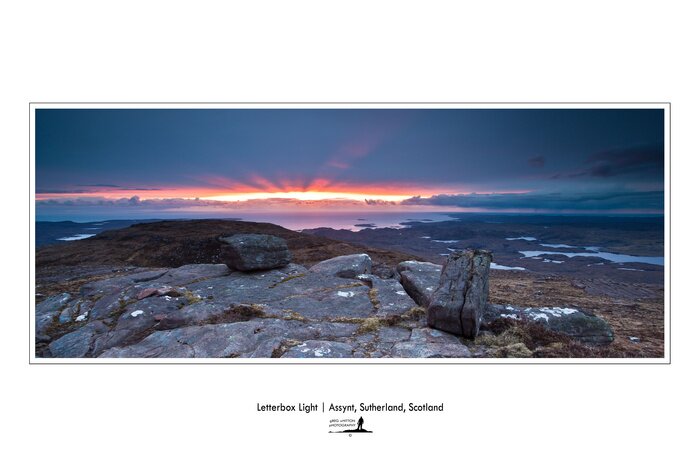
This next image is my favourite from the whole trip, showing a well lit foreground, and the peaks of Cul Mor (on the right), Canisp (centre in distance) and Quinag (on the left in the far distance) lit up by the Sun, whilst Suilven remains covered by shadow from a distant shower cloud.
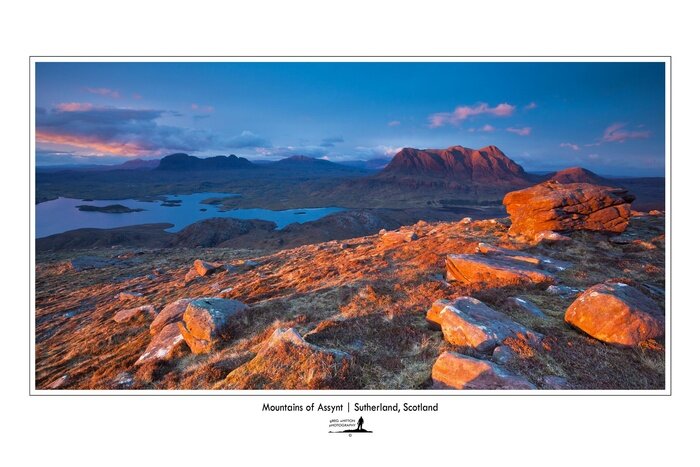
The others can be seen in my new portfolio which shows off my Latest Work, along with other photos from the trip. Take a look and let me know what you think. Trying to decide whether another trip up there sometime soon will be worth it or not. Cheers.
After all that we were really looking forward to a relaxing break that had been planned since last year. We and 12 other friends hired a large cottage in Glenelg across the water from the Isle of Skye for a week at the beginning of May. It's an absolutely fantastic cottage in a superb location for scenary and wildlife. I take no hesitation in recommending it. Creagan Mhor Cottage.
During the week we spent there, I took time out to do quite a bit of photography. I probably put 700+ miles on the car for that alone. I think the highlight was a day trip to my favourite part of the British Isles, the Assynt region of Sutherland in the North-West Highlands. It's a 2 hour drive from Glenelg, on a good day, but the day I chose (Thursday 10th May) was attrocious. A mid-Atlantic storm had crossed the British Isles from the South-West and was hanging around over Central Southern Scotland, extending it's reach beyond the mainland to the North-West. Throughout the morning I kept checking various weather sites, looking for updates to radar and satellite images just hoping the cloud and rain wouldn't extend much beyond the mainland...I had a plan. Lunchtime came and it was a 20% gamble that the conditions I favoured would prevail, so I set off in my car to head North. I needed to check that there were blue skies to the West, so I headed over the Pass of the Cattle, initially through driving rain and then snow (!!!), over to the Applecross Peninsula. Sure enough, despite the weather overhead, out on the horizon there was a distinct slither of blue sky...perfect. A quick pit-stop for some rather splendid Fish and Chips in Ullapool, and by 6pm I was at the foot of Stac Pollaidh, and the weather was grim. I still had a plan though, and a little faith, so I set off up the 400m or so climb around to the back of this particularly fine hill. The light was dull, there was a spot of moisture in the air and the sky was a flat grey, the landscape not much better - oh dear. So, all I could do was wait.
You see out to the West, that small slither of blue wasn't quite so blue as it had been earlier in the day. It was still blue of course, but now it had shower clouds passing in front of it, potentially there to ruin the moment I was waiting for. I'd also got my timings a little wrong. I figured I'd have to wait about 30 minutes for 'the event', I was out by a country mile. Standing around with your camera set up ready to fire can be quite a boring existence, especially when you've left your warmest clothing layer back in the car. For the first time in a long time I had to resort to the bothy bag for some shelter from the cold air and wind. A couple of RAF Eurofighter Typhoons provided some entertainment for a few minutes, having a dogfight with each other out to sea, and then over land between Stac Pollaidh and the infamous Suilven, but all too soon they got bored too. Maybe it was my bright red jacket they picked out in the dullness of the light, but they saw fit to do a rather splendid flypast just for me before they headed back to base - shame I had the wrong lens on the camera, it looked like I'd missed the best shot I'd get all day.
Now, back to the plan. Well, I figured that at some point the Sun was going to decend under the blanket of grey cloud way out west, probably about 20 minutes before it was due to set at 9.30pm. You are well into the golden hour at that stage, and the sun can sometimes lose it's lustre and potential for 'lighting up the landscape'...and those shower clouds were making the prospect of 20 minutes to be more like 2 minutes or none. All I could do was wait and wait and wait...until...
Did I ever mention the weather never seems to favour me? I've got a bit of a reputation within the walking group I sometimes frequent - Washout Whitton, they call me. The same can be said for some of my photography trips. No matter what the weather man says on the TV, there always seems to be a shower cloud that follows me.
Ah yes, back to Stac Pollaidh. I think I then had what can only be described as my first ever photographic euphoric moment. This happens when you've spent hours doubting yourself, doubting that the weather will actually comply, doubting whether what you see in your mind's eye will ever come true...and then it does, but way beyond what you could have hoped for, way way beyond. The Sun, bless it's cotton socks, emerged very gradually from above the grey sheet of featureless cloud, with no shower clouds blocking it's rays (at least not over me) and shone an almost magical light across the landscape. The cloud turned almost a shade of blue and orange, the landscape glowed red on the Mountains (except Suilven which remained almost ghostlike in shadow) and the rocks around me radiated warm hues of orange, red and yellow. It stayed like that for about 5 minutes as I ran about with the camera and tripod, almost hysterical with delight, and no sooner had it appeared, it dropped below a distant Weather Front taking its magical light with it.
I got a few images from that shoot, two of which are below.
This one is looking out to sea toward the Outer Hebrides, demonstrating just how little a gap in the clouds there was, and therefore how lucky I was.

This next image is my favourite from the whole trip, showing a well lit foreground, and the peaks of Cul Mor (on the right), Canisp (centre in distance) and Quinag (on the left in the far distance) lit up by the Sun, whilst Suilven remains covered by shadow from a distant shower cloud.

The others can be seen in my new portfolio which shows off my Latest Work, along with other photos from the trip. Take a look and let me know what you think. Trying to decide whether another trip up there sometime soon will be worth it or not. Cheers.
Beer and Burning Barrels
10th November 2011 - 0 comments
10th November 2011 - 0 comments
Last Weekend myself and a small group of friends hired a cottage in the lovely seaside village of Beer in Devon. If you ever get the chance to visit, do so, rarely do you find such charming villages these days, although I suspect that in Summer it can get quite crowded.
We descended on Beer to use it as a base to attend and experience the annual Burning Tar Barrels event in Ottery St. Mary a few miles away...more on that a little later though. The weather conditions were very favourable that Weekend for a spot of photography, so I made sure I got up bright and early on Saturday for a mad dash across Dorset to capture Corfe Castle at dawn. Needless to say, as it began to get light, and as I drove further East, the cloud beckoned. As such, by the time I got there (it was a 60 mile trip!) the cloud had destroyed any chance of a Sunrise shot, I had to make do with a moody shot with a little mist licking the tops of the hill behind...hardly inspiring. Mind you, after downloading the images I took, and converting one to Black & White, I quite like the result. It is now in my 'England' portfolio with the title of "History Ruined".
Heading back West, would you believe it, the cloud lifted and eventually cleared to leave Beer in bright sunshine, I should have stayed there instead! Anyway, joining the others and after some breakfast, we headed out to enjoy the village and do a short walk across the clifftops to Branscome. The cliffs between Beer and Branscombe are the most Westerly chalk cliffs England, and are quite an impressive sight in the right light. That brings me on to being in the wrong place (Branscombe) at the wrong time (late afternoon). Seeing that the light was going to be really good for a sunset, I needed to get back to the house to collect my camera gear and find a location for a shoot. Leaving the others, Dan and I set about the route home at breakneck speed (Dan, not interested in Photography, more interested in Final Score on TV!). Needless to say, we got back before dark, but it was touch and go whether I got to my chosen location or not.
When I first lived in Yeovil at the end of the 90's I used to deliver paper as a White Van man to various print works and stationers. Having to stop for lunch one day I found the small village of Seatown, tucked away off the A35, and have loved it there ever since. There isn't much there, except a few houses, a popular pub, and a long beach, but do you really need anything else? Well, I knew that was where I wanted to go and I got there just as the Sun was touching the horizon...not ideal. Luckily I spotted a rather interesting rock close to the lapping sea, and managed to get my camera on the tripod and filters attached before the Sun had disappeared. I knew that wouldn't be THE shot, but I like to capture the Sun anyway. No, the best shots of Sunset generally occur about 20-30 minutes after the Sun dips below the horizon as the colours in the sky deepen. Despite concentrating a little too much on what the sky was doing, and not paying attention to a rather large wave which narrowly avoided soaking my camera, I did manage to get the image below...I like it.
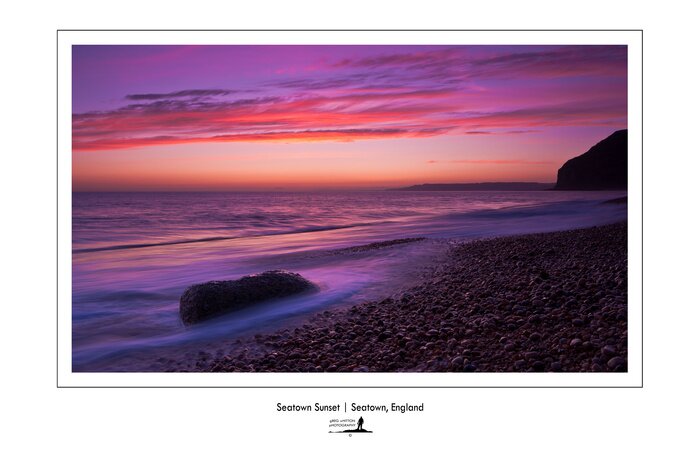
Next, it was the burning barrels!
This was a curious evening, one that started with some excitement, then turned into about 2 hours of boredom, followed by a good hour of crazy antics in a packed square and Chris wailing like a banshee! The basic premise of this event is a bunch of barrels that are lined with tar and set alight, then you get a few bored locals to don some fireproof mitts and carry them on their shoulders through crowds of thousands of screaming drunken revellers. We saw one barrel as soon as we got there, and completely failed to find any more in the whole village for the next 2 hours...by which time we were cold and generally sobering up. Eventually, feeling the need to get 'stuck in' at some point, we found ourselves in the middle of the main square, where the majority of the barrels are lit, and being pushed from pillar to post by throngs of screaming muppets...I guess we ended up being screaming muppets too. Needless to say, it's quite dangerous, but boy, when a 250lb bloke with an inferno on his back comes blindly charging towards you, giving you a mere second or two to decide which way you are going to jump to get out of the way, it is actually quite exhilerating!
The image below is one of the said large fellows carrying such a barrel on his shoulders...somehow they don't get burned!
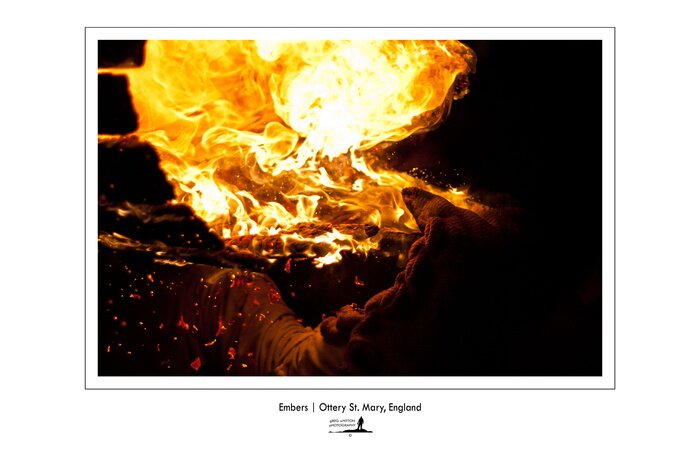
The following day was gorgeous, I can't remember the last ime I've sat on a beach in November and it's been almost warm enough for a T-Shirt. Hurrah for England!
All images from the Weekend can be found in my 'England' portfolio, named History Ruined, Embers, Seatown Sunset, Axmouth Harbour, and Beer Beach
We descended on Beer to use it as a base to attend and experience the annual Burning Tar Barrels event in Ottery St. Mary a few miles away...more on that a little later though. The weather conditions were very favourable that Weekend for a spot of photography, so I made sure I got up bright and early on Saturday for a mad dash across Dorset to capture Corfe Castle at dawn. Needless to say, as it began to get light, and as I drove further East, the cloud beckoned. As such, by the time I got there (it was a 60 mile trip!) the cloud had destroyed any chance of a Sunrise shot, I had to make do with a moody shot with a little mist licking the tops of the hill behind...hardly inspiring. Mind you, after downloading the images I took, and converting one to Black & White, I quite like the result. It is now in my 'England' portfolio with the title of "History Ruined".
Heading back West, would you believe it, the cloud lifted and eventually cleared to leave Beer in bright sunshine, I should have stayed there instead! Anyway, joining the others and after some breakfast, we headed out to enjoy the village and do a short walk across the clifftops to Branscome. The cliffs between Beer and Branscombe are the most Westerly chalk cliffs England, and are quite an impressive sight in the right light. That brings me on to being in the wrong place (Branscombe) at the wrong time (late afternoon). Seeing that the light was going to be really good for a sunset, I needed to get back to the house to collect my camera gear and find a location for a shoot. Leaving the others, Dan and I set about the route home at breakneck speed (Dan, not interested in Photography, more interested in Final Score on TV!). Needless to say, we got back before dark, but it was touch and go whether I got to my chosen location or not.
When I first lived in Yeovil at the end of the 90's I used to deliver paper as a White Van man to various print works and stationers. Having to stop for lunch one day I found the small village of Seatown, tucked away off the A35, and have loved it there ever since. There isn't much there, except a few houses, a popular pub, and a long beach, but do you really need anything else? Well, I knew that was where I wanted to go and I got there just as the Sun was touching the horizon...not ideal. Luckily I spotted a rather interesting rock close to the lapping sea, and managed to get my camera on the tripod and filters attached before the Sun had disappeared. I knew that wouldn't be THE shot, but I like to capture the Sun anyway. No, the best shots of Sunset generally occur about 20-30 minutes after the Sun dips below the horizon as the colours in the sky deepen. Despite concentrating a little too much on what the sky was doing, and not paying attention to a rather large wave which narrowly avoided soaking my camera, I did manage to get the image below...I like it.

Next, it was the burning barrels!
This was a curious evening, one that started with some excitement, then turned into about 2 hours of boredom, followed by a good hour of crazy antics in a packed square and Chris wailing like a banshee! The basic premise of this event is a bunch of barrels that are lined with tar and set alight, then you get a few bored locals to don some fireproof mitts and carry them on their shoulders through crowds of thousands of screaming drunken revellers. We saw one barrel as soon as we got there, and completely failed to find any more in the whole village for the next 2 hours...by which time we were cold and generally sobering up. Eventually, feeling the need to get 'stuck in' at some point, we found ourselves in the middle of the main square, where the majority of the barrels are lit, and being pushed from pillar to post by throngs of screaming muppets...I guess we ended up being screaming muppets too. Needless to say, it's quite dangerous, but boy, when a 250lb bloke with an inferno on his back comes blindly charging towards you, giving you a mere second or two to decide which way you are going to jump to get out of the way, it is actually quite exhilerating!
The image below is one of the said large fellows carrying such a barrel on his shoulders...somehow they don't get burned!

The following day was gorgeous, I can't remember the last ime I've sat on a beach in November and it's been almost warm enough for a T-Shirt. Hurrah for England!
All images from the Weekend can be found in my 'England' portfolio, named History Ruined, Embers, Seatown Sunset, Axmouth Harbour, and Beer Beach
Wet Weekend in the Lakes
02nd November 2011 - 0 comments
02nd November 2011 - 0 comments
Travelled to Buttermere last Thursday for a bit of a Lad's Weekend of walking, but also with an ulterior motive to get in some photography. Friday started well, got up in the Hostel before dawn to head down to the lakeside with the intention of getting a crisp shot of a flat calm lake and the sunlit flanks of Red Pike, but a bank of cloud behind Fleetwith Pike stopped the Sun in it's tracks. Still I got a fairly nice shot with some clouds by chance mirroring the formation of the rocks in the foreground. The resultant image can be found in my 'England' portfolio with the name 'Buttermere Reflections'. Some fellow togs were across the water from me, shooting towards Fleetwith, considering the cloud, I can't think that they got anything spectacular.
I then rejoined my friends for Breakfast before we headed to Seathwaite to do a route up Great Gable, around the Climbers traverse, to 'thread the needle' (scramble behind Napes Needle) and then ascend to the summit via Sphinx Ridge and Westmoreland Crags. It was a cracking route, and also resulted in a pleasing photo of Wasdale.
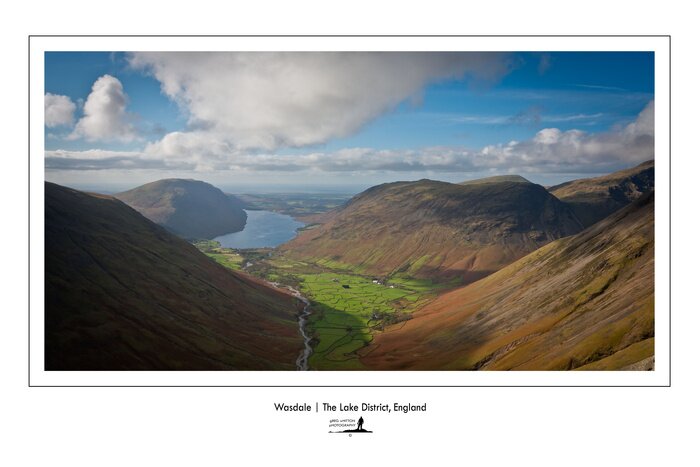
Saturday was an awful day. The weather set in and although we had plans to do a circuit of the fells surrounding Buttermere, we had to retreat off Red Pike and then spent the afternoon in the pub.
Sunday we headed East, the forecast said the Eastern Fells would be brightest, and it was halfway right. We decided to have some fun and did Helvellyn via Striding Edge and then back down via Swirral Edge, a classic route, and a motorway on a fine day, but it was cloudy and windy and so there weren't many hillwalkers about. We finished in a little over four and a half hours, and I was keen to drop off a couple of friends at the station quickly so I could make the most of what was turning out to be stunning early evening light. I figured Castlerigg would be a good spot to head to (always a classic in the Lake District), and the light was stunning as I drove down the A66, but then a sinking feeling set in as I could see the Sun was setting behind a high bank of cloud. I must have missed the light at Castlerigg by a matter of minutes. Still, I got an average shot of the stone circle (in flat light), and a rather nice sky behind, but not anything that would go on here.
All in all a good weekend, with many laughs in the pub, some good walking, and one or two good photo opps.
I then rejoined my friends for Breakfast before we headed to Seathwaite to do a route up Great Gable, around the Climbers traverse, to 'thread the needle' (scramble behind Napes Needle) and then ascend to the summit via Sphinx Ridge and Westmoreland Crags. It was a cracking route, and also resulted in a pleasing photo of Wasdale.

Saturday was an awful day. The weather set in and although we had plans to do a circuit of the fells surrounding Buttermere, we had to retreat off Red Pike and then spent the afternoon in the pub.
Sunday we headed East, the forecast said the Eastern Fells would be brightest, and it was halfway right. We decided to have some fun and did Helvellyn via Striding Edge and then back down via Swirral Edge, a classic route, and a motorway on a fine day, but it was cloudy and windy and so there weren't many hillwalkers about. We finished in a little over four and a half hours, and I was keen to drop off a couple of friends at the station quickly so I could make the most of what was turning out to be stunning early evening light. I figured Castlerigg would be a good spot to head to (always a classic in the Lake District), and the light was stunning as I drove down the A66, but then a sinking feeling set in as I could see the Sun was setting behind a high bank of cloud. I must have missed the light at Castlerigg by a matter of minutes. Still, I got an average shot of the stone circle (in flat light), and a rather nice sky behind, but not anything that would go on here.
All in all a good weekend, with many laughs in the pub, some good walking, and one or two good photo opps.